Lake Patzcuaro, Michoacân, Mexico, 2022
According to legend, Day of the Dead/Dia de los Muertos is the one time of the year that the dead can cross over and return to the land of the living. Families gather in graveyards and erect altars (“ofrendas”) in their homes with photos and favorite possessions as offerings to the departed. This is not a day of sadness but a day of celebration because loved ones awake and celebrate with the living. This celebration in Mexico can be traced back to the indigenous peoples such as the Olmec, Zapotec, Mixtec, Mexican, Aztec, Maya, P’urhépecha, and Totonac. Rituals commemorating the deaths of ancestors have been observed by these civilizations for as long as 2500–3000 years.
This ancient tradition, was brought into the consciousness of the general public with the 2015 James Bond thriller, Spectre and its opening scene featuring Mexico City’s Day of the Dead parade, and, more recently, Disney’s Coco. Communities and tour operators have capitalized on this popularity, offering tours, art shows, parades, markets, Catrina contests, face painting, and a plethora of activities.
I’ve wanted to experience this celebration ever since moving to Mexico well over fifteen years’ ago. I did not, however, wish
to intrude on families honoring their loved ones, so I consulted my friend and tour guide Betsy McNair* for her recommendations.

I dressed respectfully, limited my cemetery visits to daytime hours, and did not go with a group.
Nueva de Panteón – Patzcuaro
Having a home in Patzcuaro, I first visited my “local” cemetery, Nueva de Panteón, on the afternoon of November 1 to observe the preparations for the return of children and innocents.
All ages gathered to sweep, plant, place bouquets, repaint a marker – and to play music and sing, eat Pan de Muertos (special sweet bread for the occasion) and the favorite foods of their loved ones.
A three-piece combo around a grave played and sang as a young man repainted the cross.
Families sitting on graves, chatting, hugging….
A guitarist serenading his family….
In one corner, a mass being performed….
Suddenly, in English, “Where are you from?” And I chat with a young man in his 30s who says he’s from Patzcuaro but now lives in South Carolina. He returns every year for this celebration with his family.
The next day, November 2, friends and I drove around Lake Patzcuaro to immerse ourselves in the preparations and celebrations of several indigenous Purépecha villages and cemeteries as the living prepared for the return of adult spirits this night.
For many, Spanish was their second language, Purépecha being their primary.
Each village cemetery I visited had its own “feel” and vibe.”
All were joyous.
All were an abundance of flowers and color and community!
Tzintzuntzan
First stop, because this village is on the way to the Lake, was Tzintzuntzan – by far the most invaded by tourists. The highway through the city was blocked off, tour buses lined the road, makeshift parking lots appeared, armed/masked police poured out of a large van. Tented booths offered tacos, gorditas, flowers, ribbons, tin cans (some painted) as vases.
Our first on-the-road Michoacán Cemetery Experience!
Somewhat overwhelming. Impossible to describe.
Tzitzuntzan’s cemetery spans both sides of the highway, although we took in only one. Marigolds, candles, baskets of food, even a campfire – and people! — multitudes of people, both participants and tourists – as far as the eye could see.
Tombstones, markers, and elaborate structures covered in flowers, ribbons, enormous bouquets, gigantic photos of loved ones, baskets of breads and tortillas, corn, beer, candy, fruits….
Leaving town, we weaved our way around the back streets of Tzintzuntzan to get away from the masses. The farther we drove, refreshingly, only local traffic — no tour buses.
Santa Fe de la Laguna
I’d often driven “through” Santa Fe de la Laguna many times on the way to somewhere else and not been impressed. Stands on either side of the highway tout mounds of cheap, mass-produced mugs, pots, and garish figurines. I understand, however, that artisans here make lovely black pottery.
We’d been informed that the Purépechas of this village believe that the spirits of those who die within the year go home rather than to the cemetery, so families build private alters to welcome them.
Thus, we parked and began to wander the mostly deserted streets.
With this backdrop of traditional adobe walls and houses, Purépecha women in native dress juxtapositioned against teens in jeans and tee-shirts — an occasional drunk, asleep under an eave.
A garland of marigolds in the distance signaled the zocolo (town square). As zocolos go, it was somewhat stark, with only a few stands of vendors.
Continuing our meander, we peeked into an open door decked with flowers. A woman gestured us inside the courtyard. Our jaws dropped at the opulence and art before us: A house built entirely of flowers and pottery; mounds of bananas, oranges, apples; candles, candles, candles; a cross, of course, and pictures of the loved one.
On the way out, we offered a donation, which they refused.
One street was particularly ornate – with a large-screen TV and sound system. This was a house and shop celebrating Mama Coco, the human model for Disney’s Coco, who died this year at age 103. A lovely alter and plenty of tacky souvenirs for purchase.
San Jeronomo
Driving the lake highway, we see a narrow turnoff lined with cars and snake our way between, parking in a bed of nettles, behind a pick-up truck. It’s a cacophony of children, bands, food booths, bouncy castles….
A totally different “feel” from Tzintzuntzan with its tour buses. It appeared everyone knew everyone of this small community.
I tried to be unobtrusive. However, being the only non-brown face made this somewhat difficult. I was relieved that most people welcomed me and my taking photographs of their creations honoring loved ones. A smile helps. A man sitting under a tree, looking wistfully at the mound in front of him -– In my poor Spanish, I ask,” Is that your wife?” “No,” he replied, “my baby.” “Lo siento. esta es muy bonita, muy especial. “(I am so sorry. This is very beautiful, very special.)
A smiling young girl, around ten, approached me and said, in English, “Hello.” I respond, “Excellent English!” We chat a while – she in English and I in my basic Spanish. As we say goodbye, I ask to take her photograph. Later, she finds me to offer a gift of Pan de Muertos.
In the adjoining church, I expect to see more alters, but instead were stacks of bananas and fruit, available to the parishioners.
Not wanting to exit through the gauntlet of cars from the highway, we drove on through the town, following directions of the GPS, eventually getting, once again, to paved roads.
Panteón de San Andrés Tziróndaro
Again – -an entirely different experience.
San Andrés was an exhibition of “community” at its finest.
Most graves were merely mounds, and numerous tiny ones, among the few tombs and structures — unmarked but for petals of marigolds and perhaps a candle or favorite candy or drink. One wide sidewalk was lined with imprints of crosses scattered with marigold petals.
Street dogs prowled among the gatherings, hoping for a dropped crumb or handout.
A man, there with his large family, smiles and points, “Mi esposa” (my wife).
I’m approached by a young man, speaking English, “Where are you from?” As we talk, he says, “Thank you for coming. It’s people like you who need to come, and photograph, and help others understand.” He writes his name in my notebook so I can tag him on Facebook, but I can’t find his page.
Moving On
We head back toward Patzcuaro, passing other villages, each with its own celebration — parades, markets, bands, exhibitions, ceremonies, bouncy-castles for the kiddos, dances, and of course, families gathered to await departed loved ones.
I reflect on my own/America’s day of remembrance, Memorial Day. It’s a nice reminder — bringing flowers to the cemetery – a ritual revered by my mother – and honoring and remembering Veterans and others who have passed before us. I realize that Mexico’s Day of the Dead, however, is not merely about remembering and honoring, it is actually about connection, — connection not only with those who have passed but also with family and community.
With the approaching dusk, people are settling in for the night as candles flicker against the golden petals.
Day of the Dead (“Dia de los Muertos”), is a two-day event.
November 1
Dedicated to children and innocents
“Día de los Inocentes” or Day of the Little Angels “Día de los Angelitos”
November 2
Adults return
Day of the Dead or “Dia de Muertos” or All Souls Day.
Samhain
Mexico’s Day of the Dead coincides with the ancient Celtic festival, Samhain, to mark the end of the harvest and to remember the dead. According to Irish mythology, Samhain was a time when doorways to the spirit world were opened, allowing the dead to visit the living world.
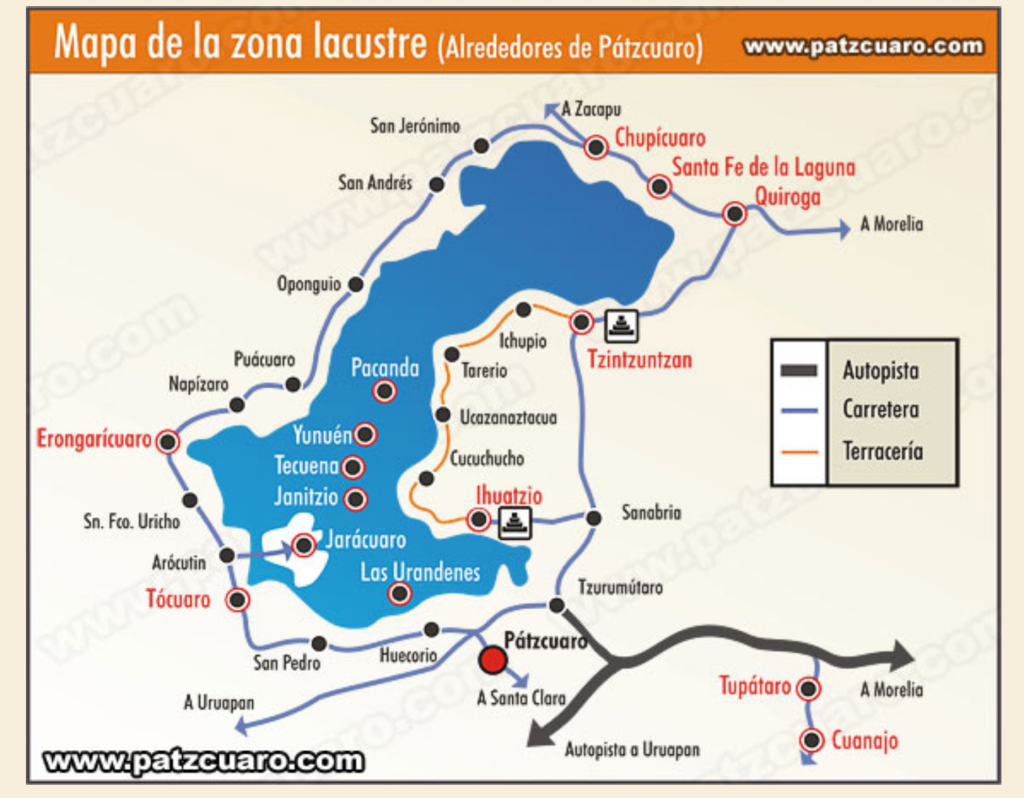
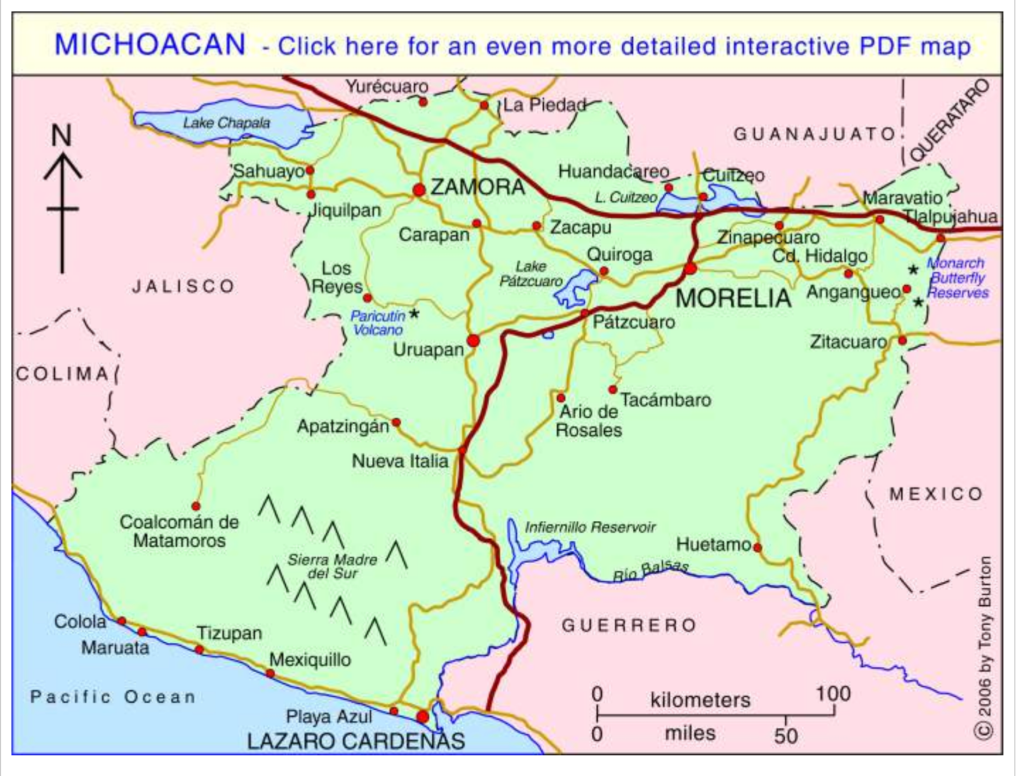
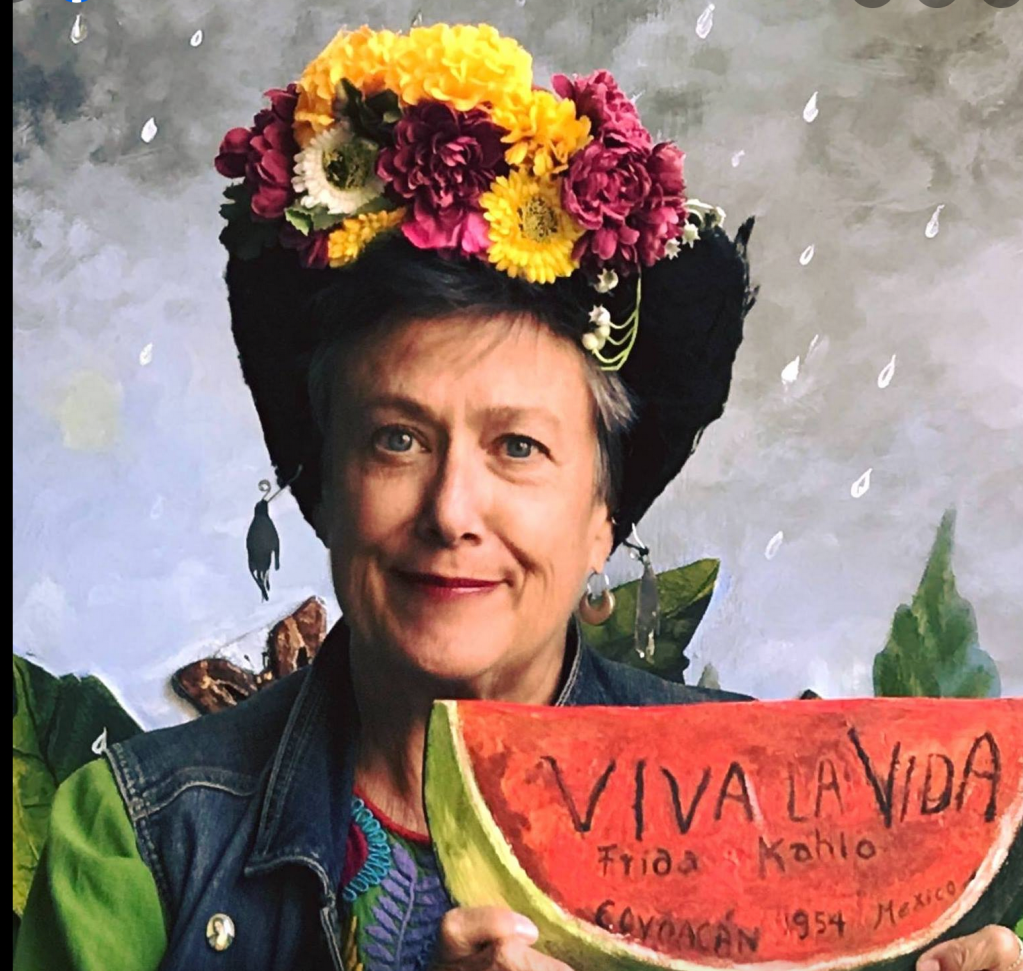
Special thanks to Betsy McNair, who is extremely knowledgeable about Mexico and offers personalized tours. Find her information at https://www.facebook.com/MyMexicoTours.
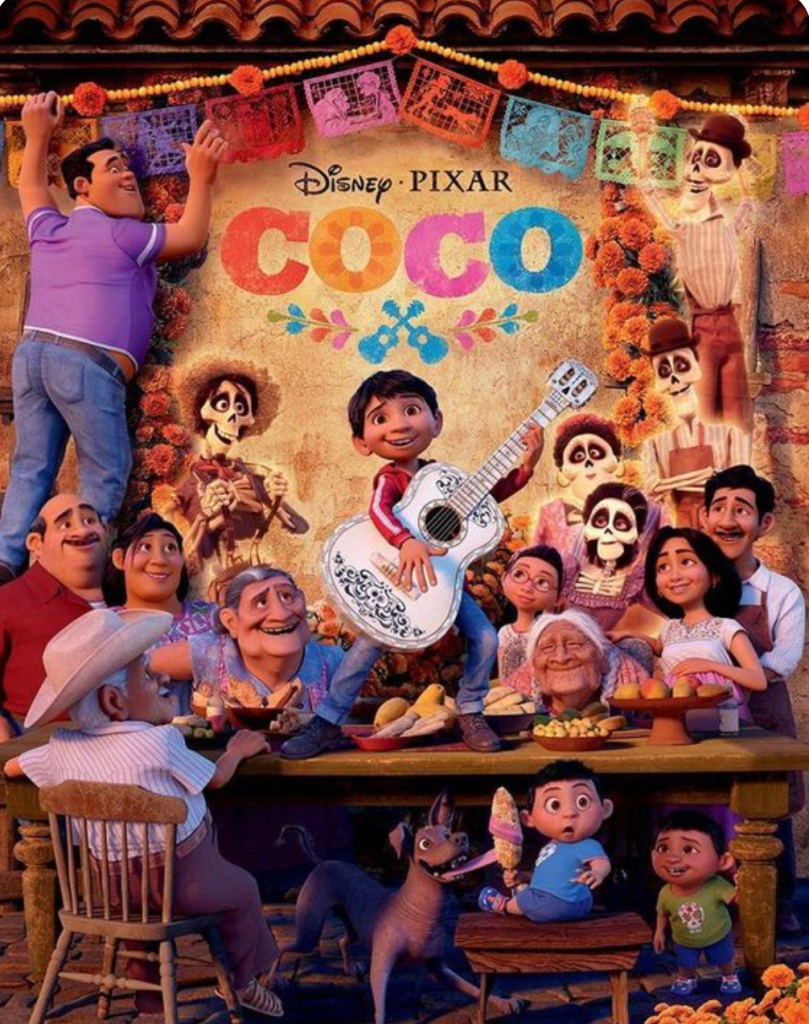
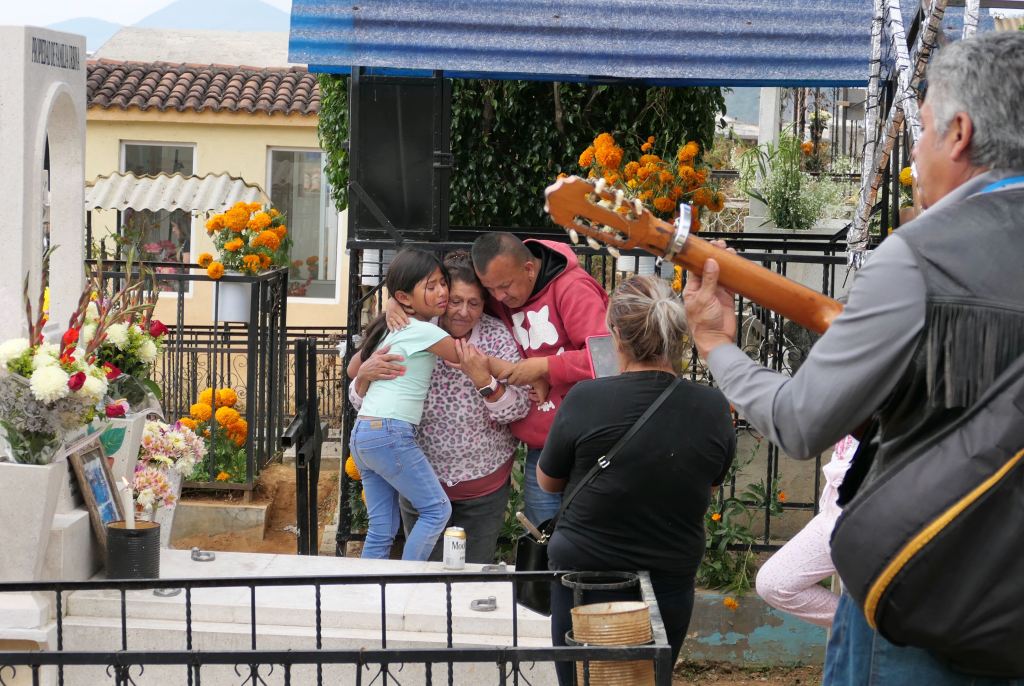

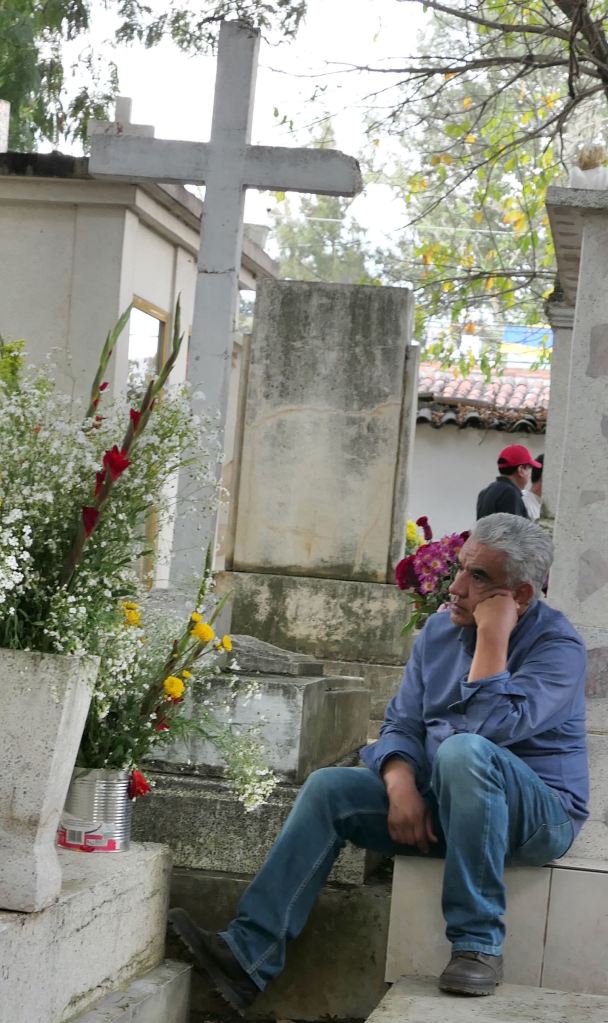
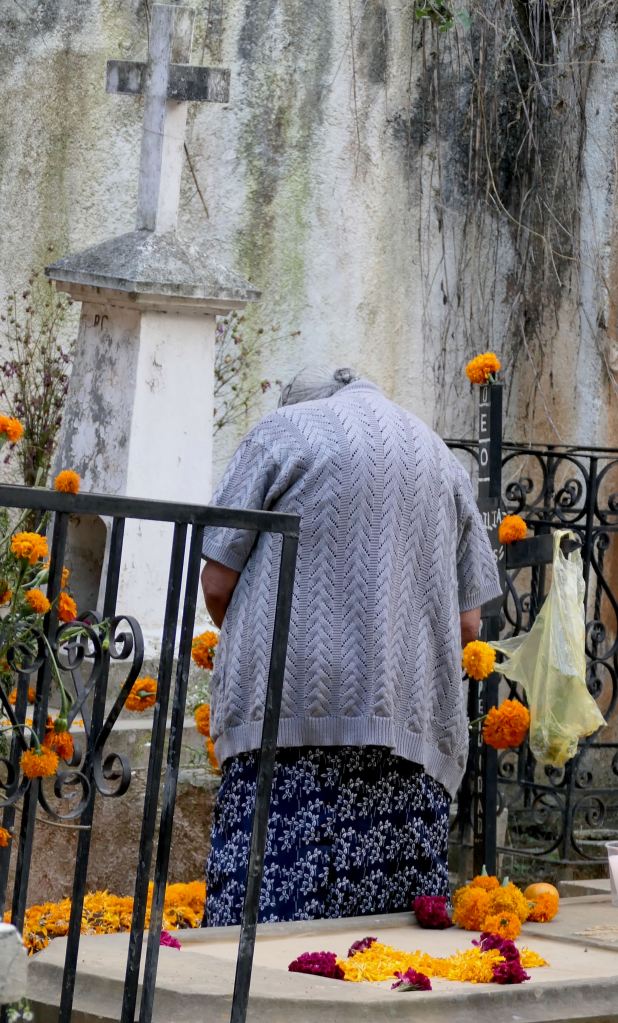
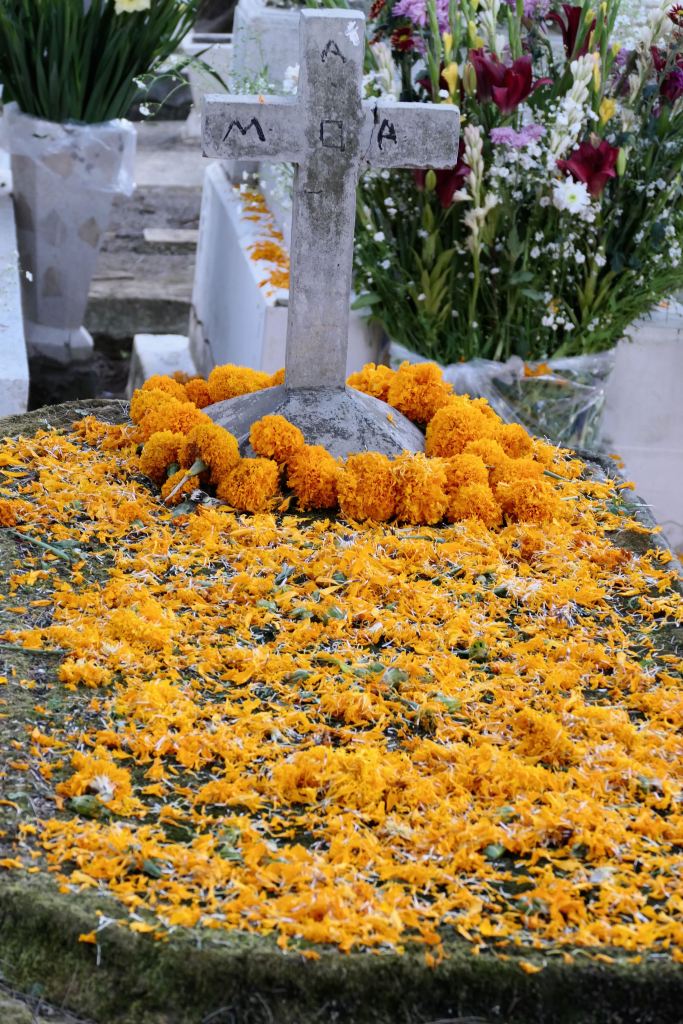


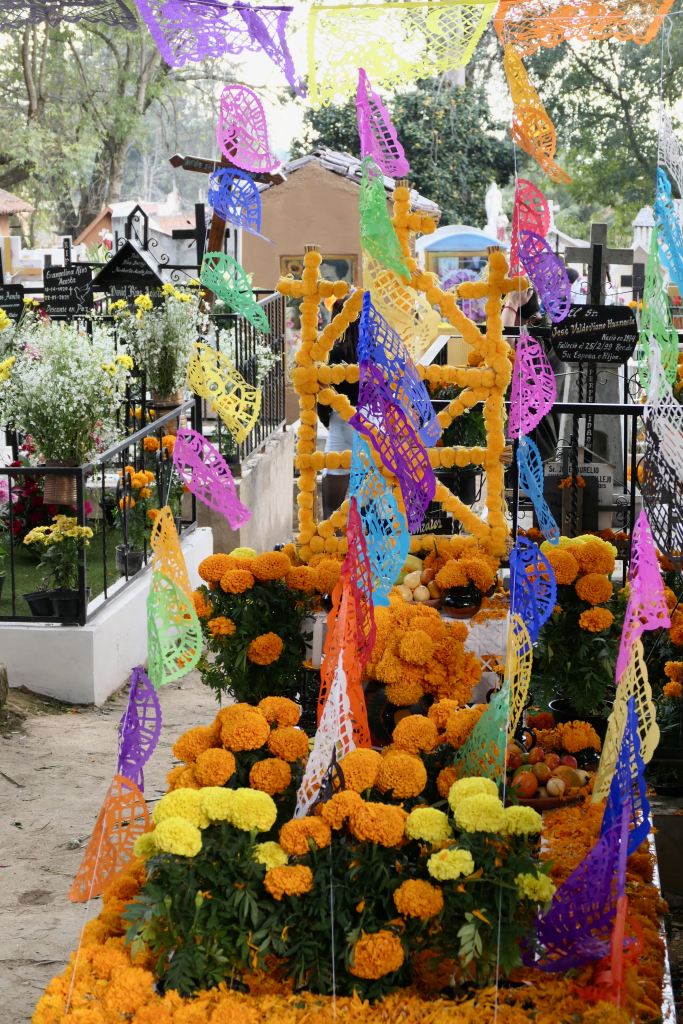
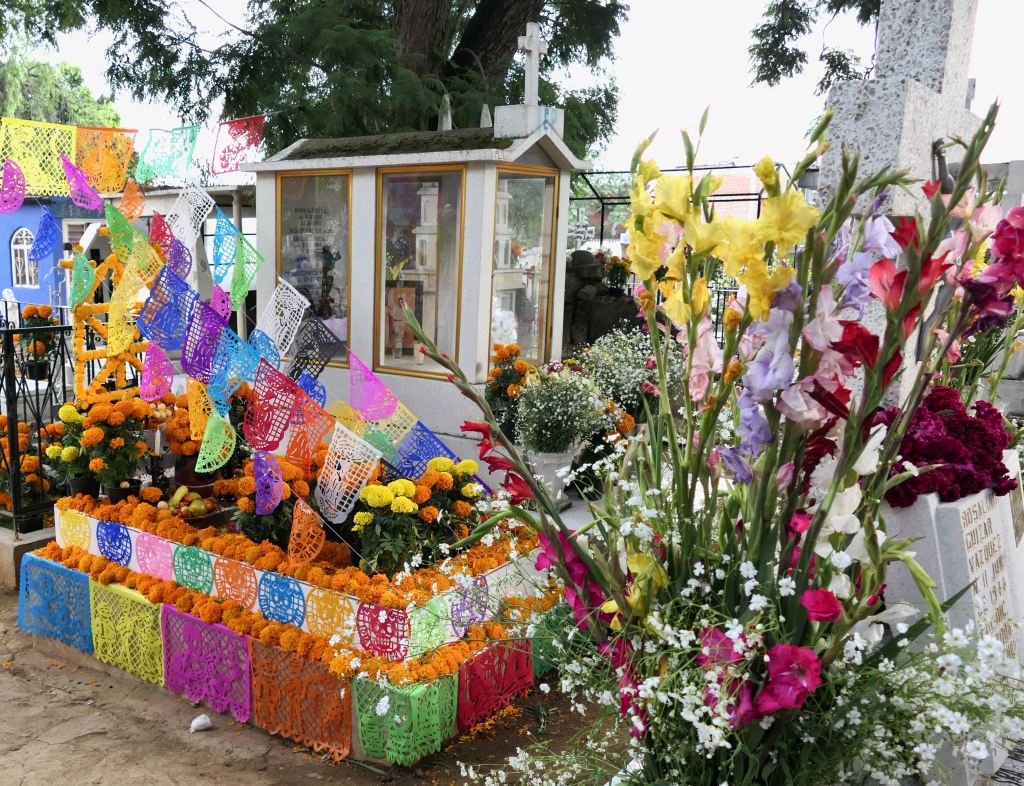

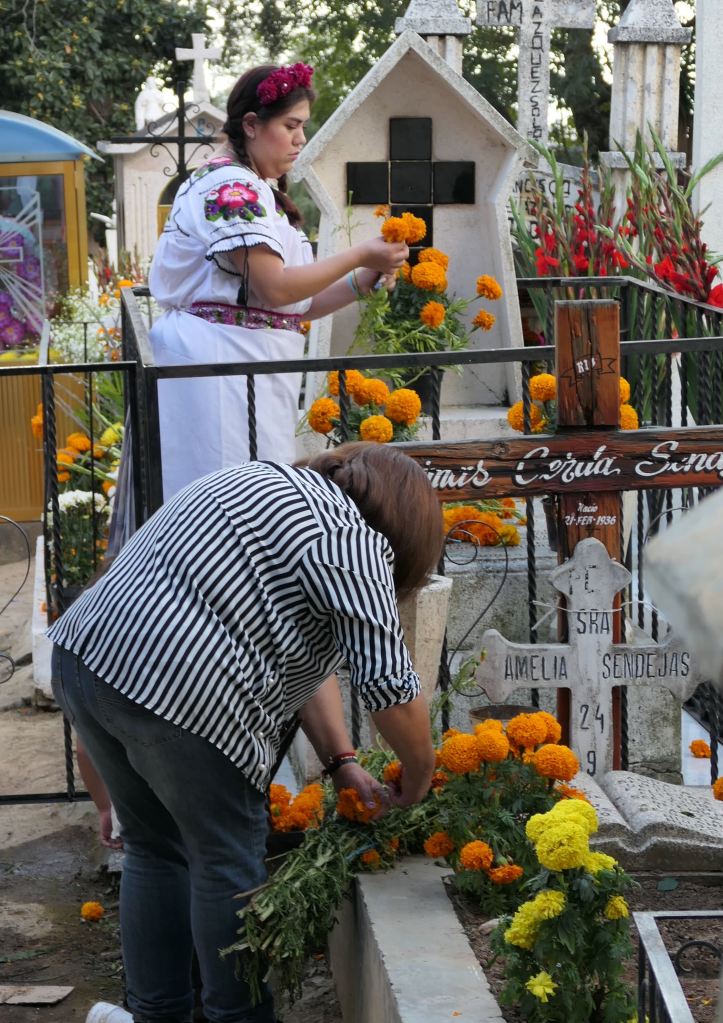
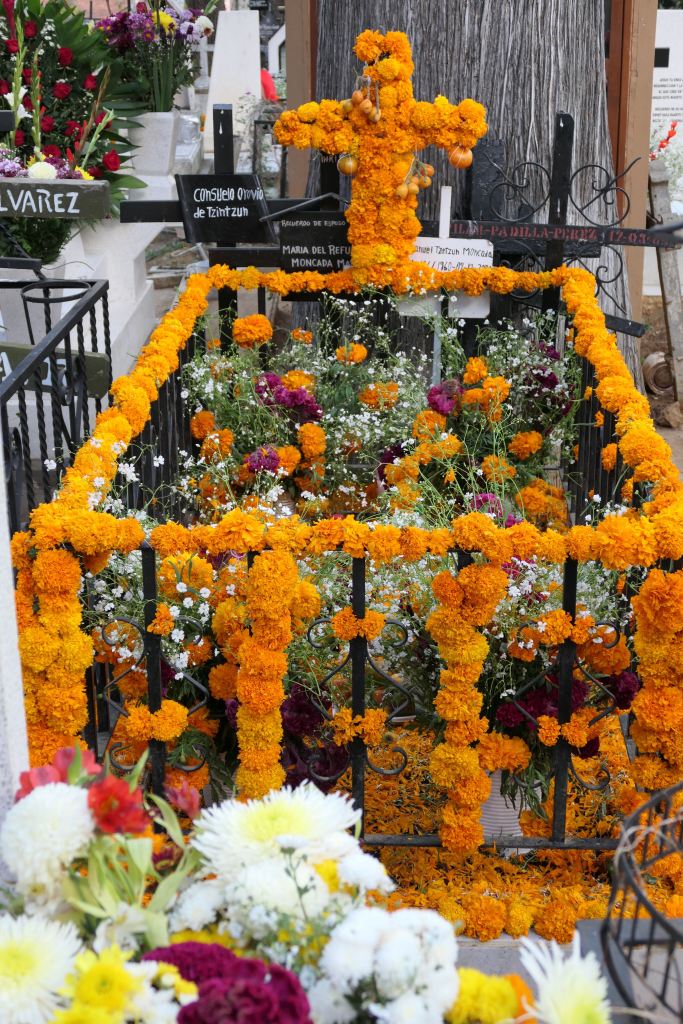
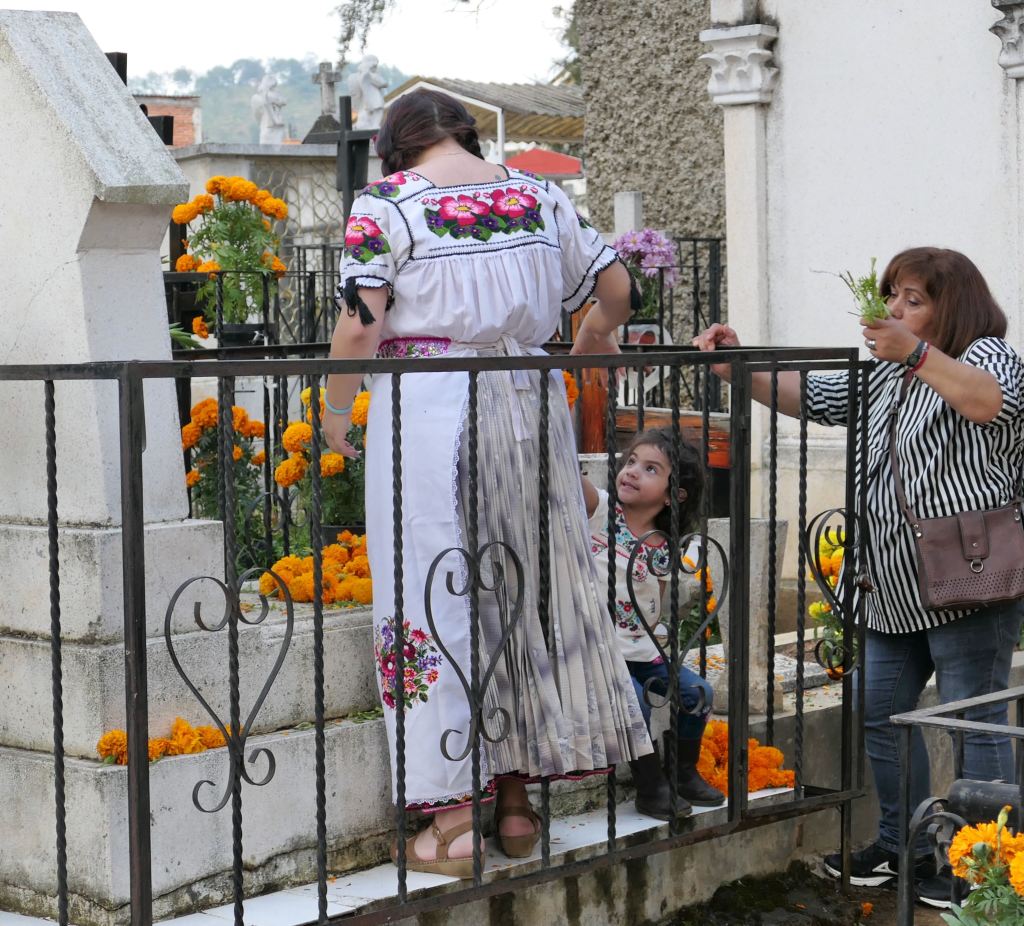

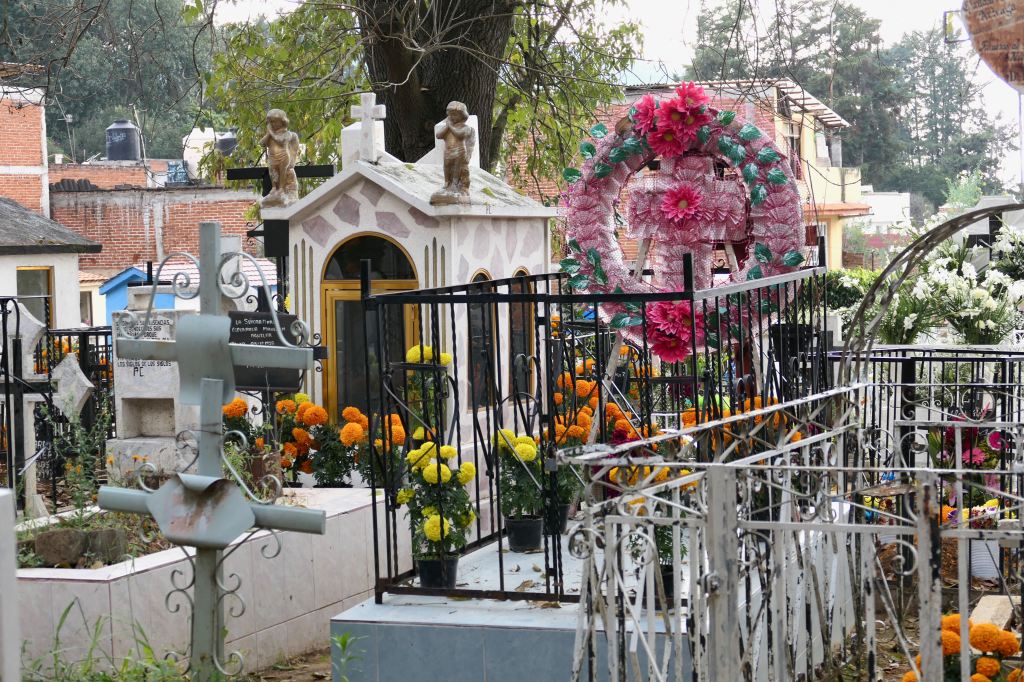


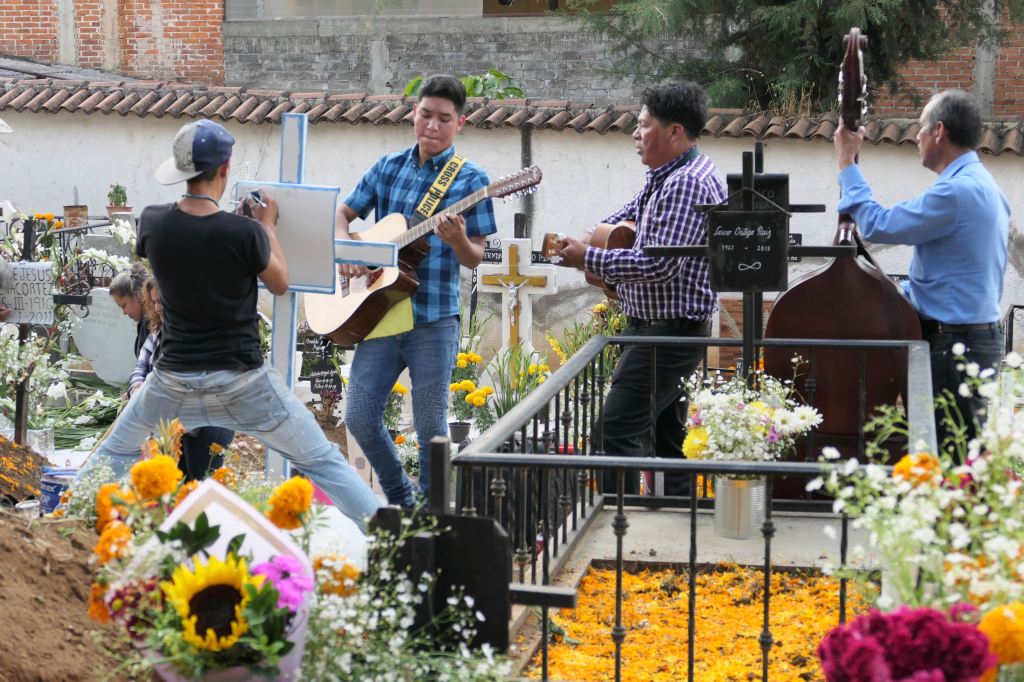
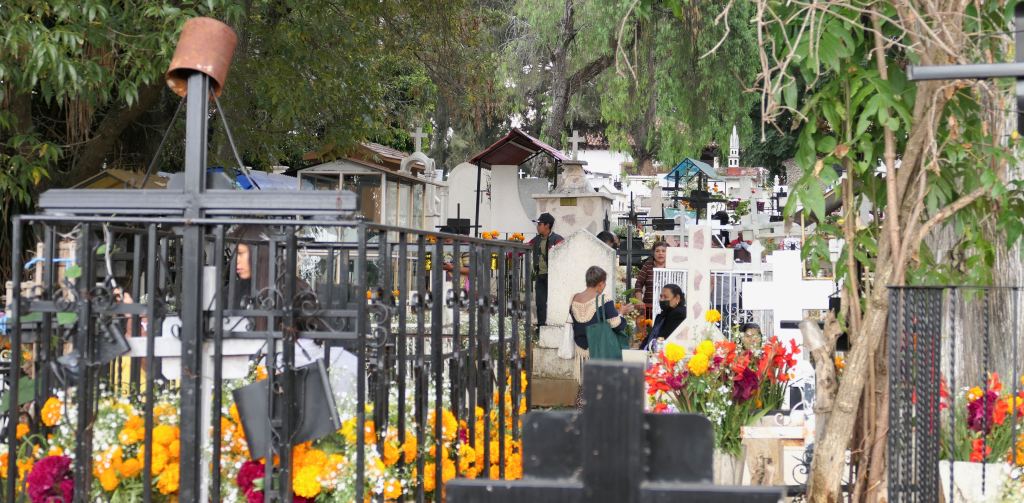
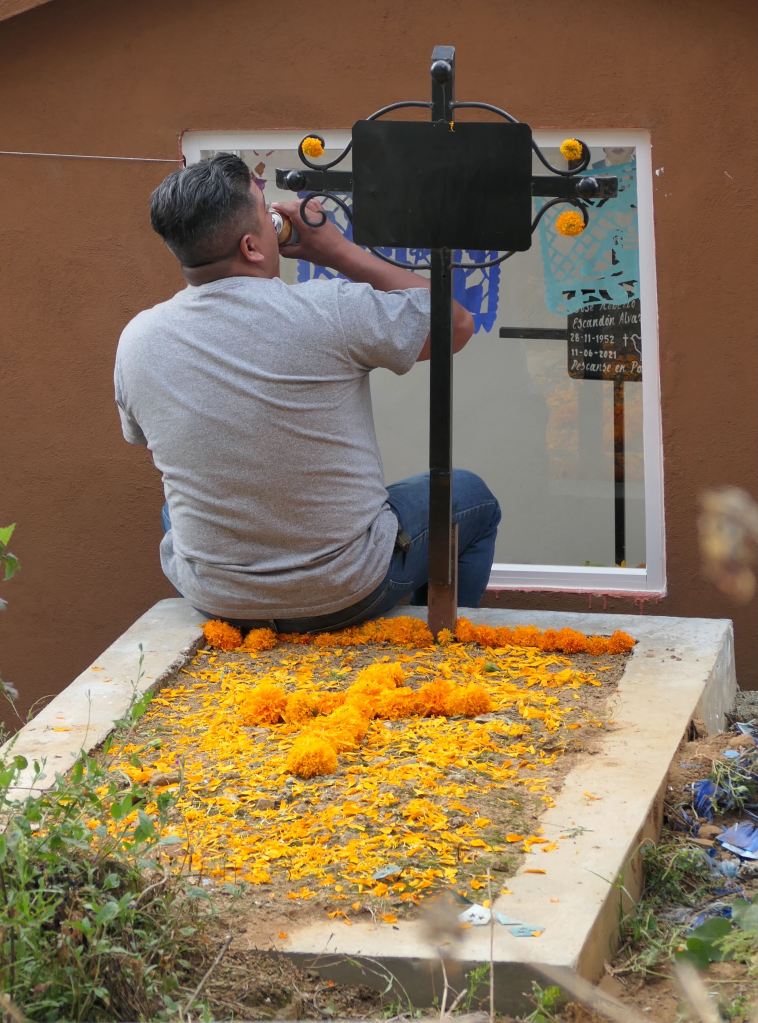
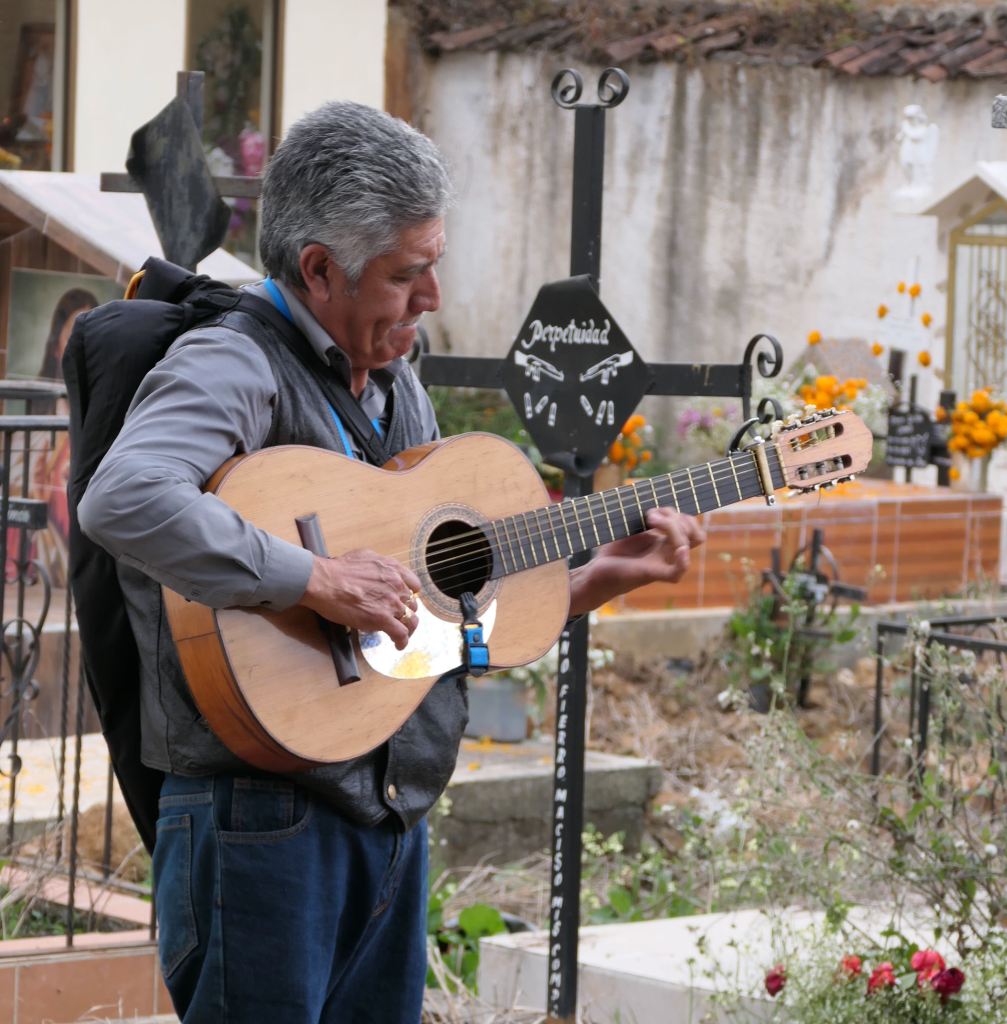
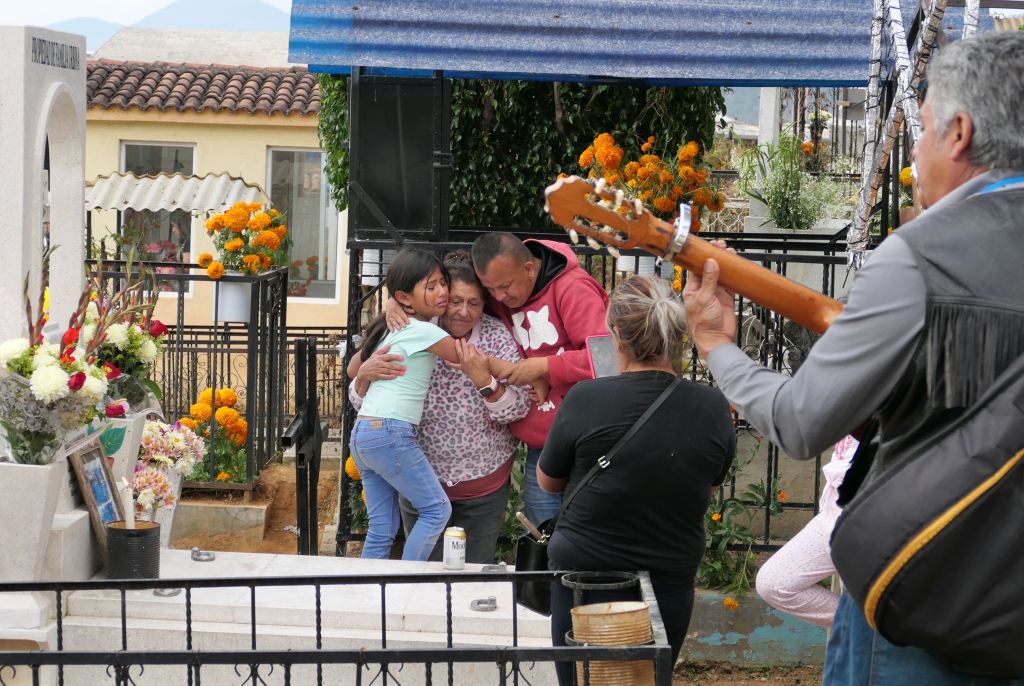
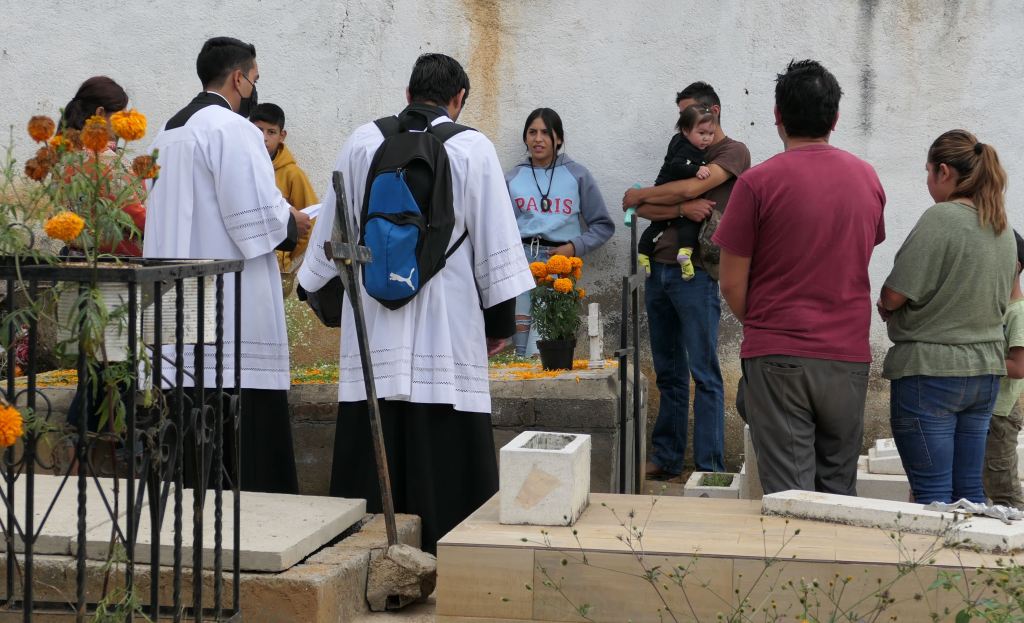


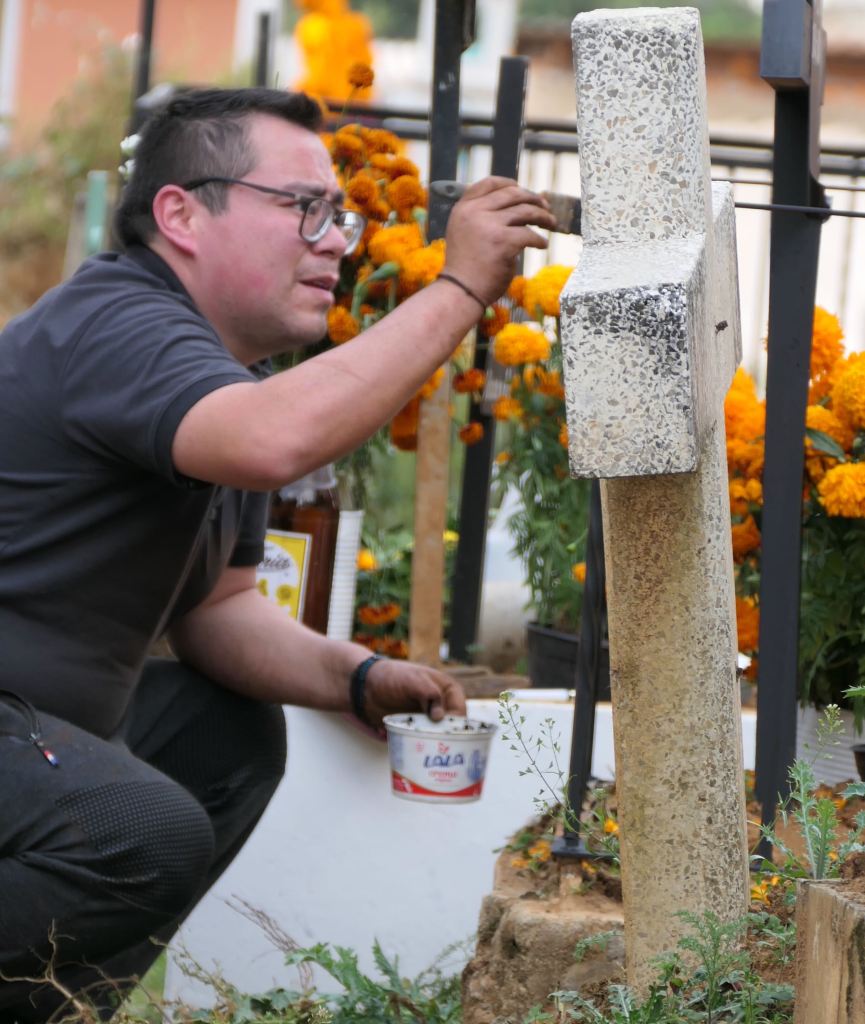
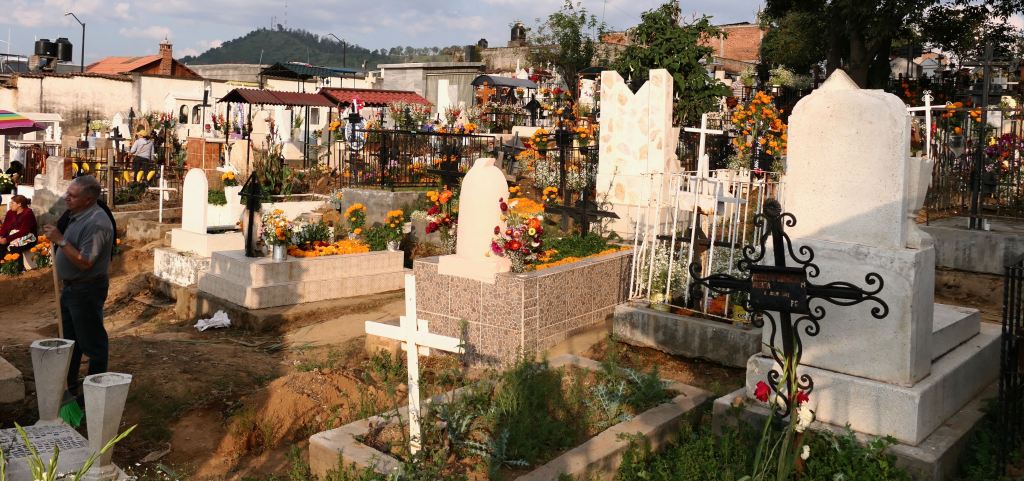
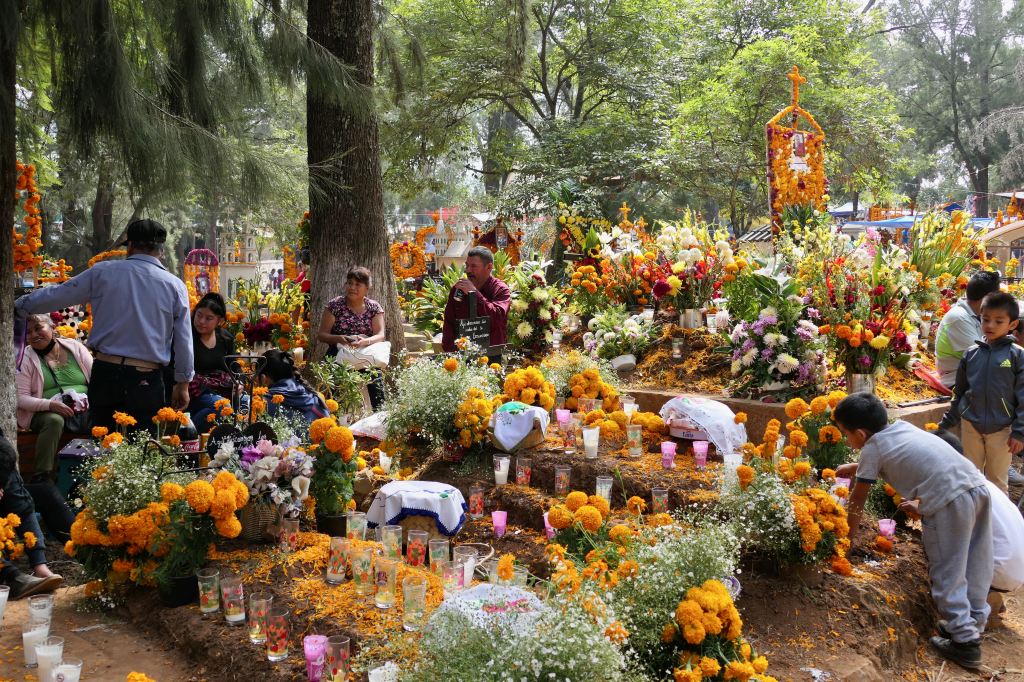
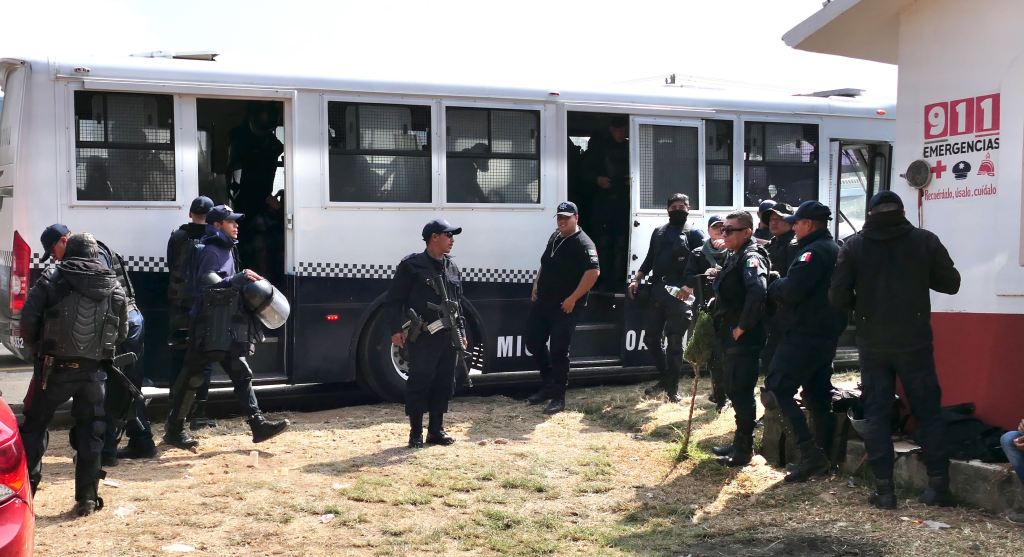

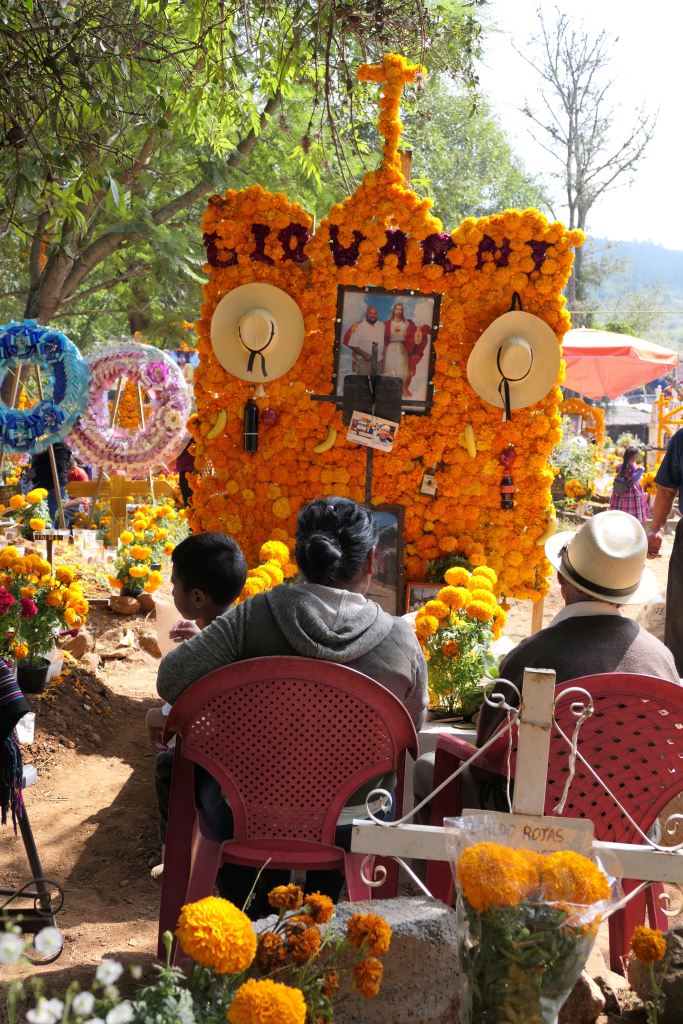
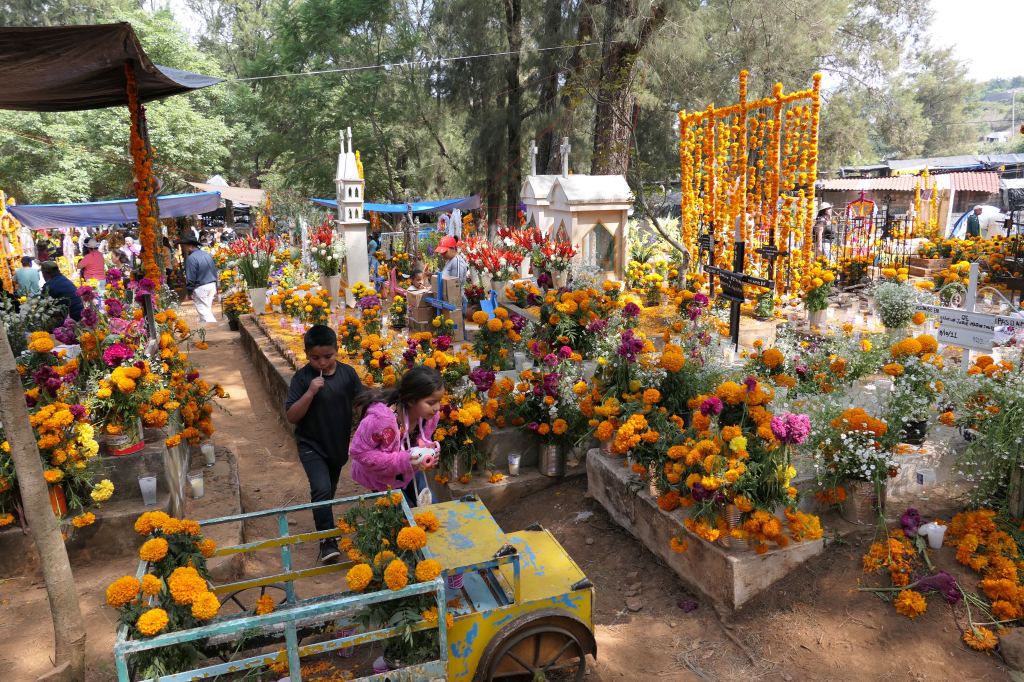
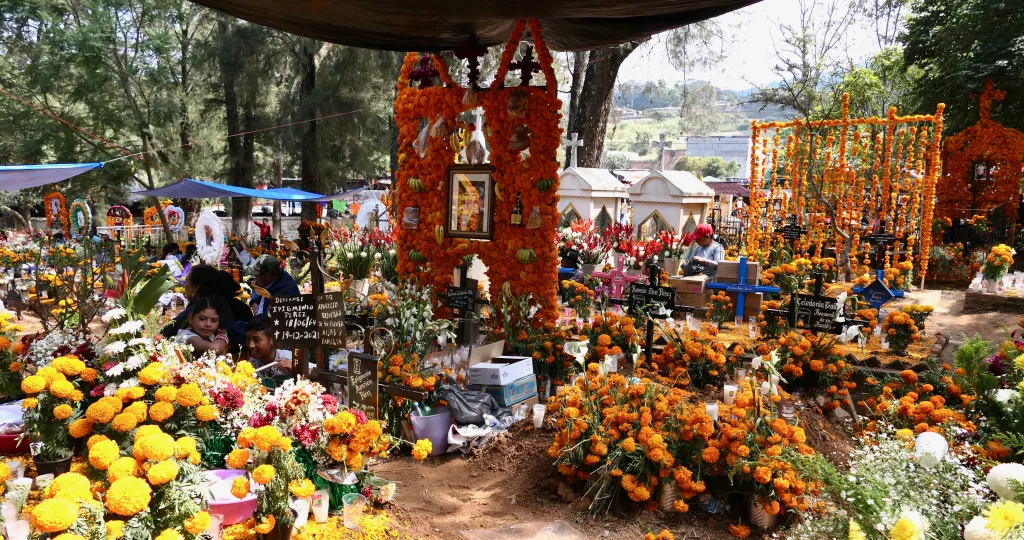
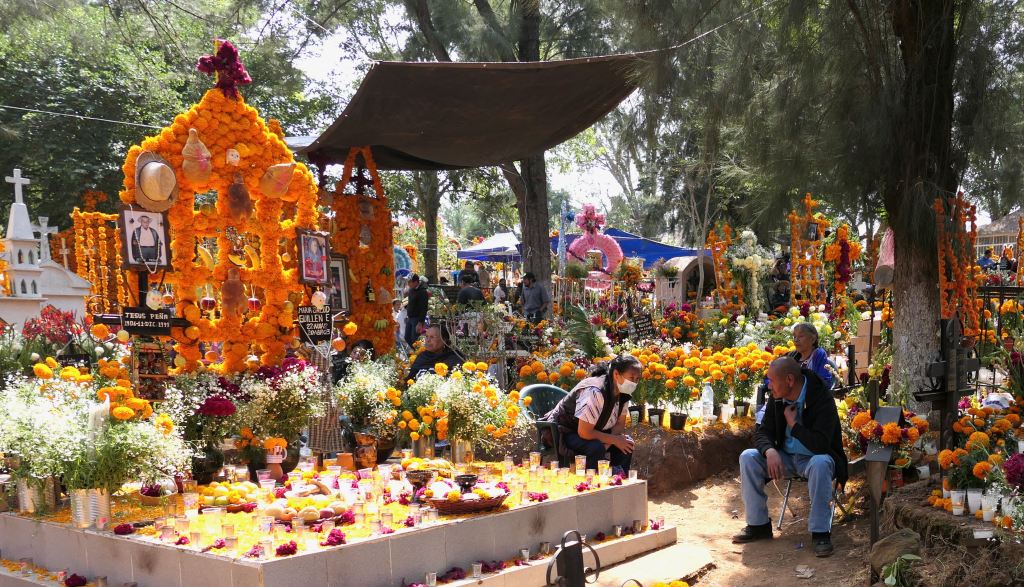
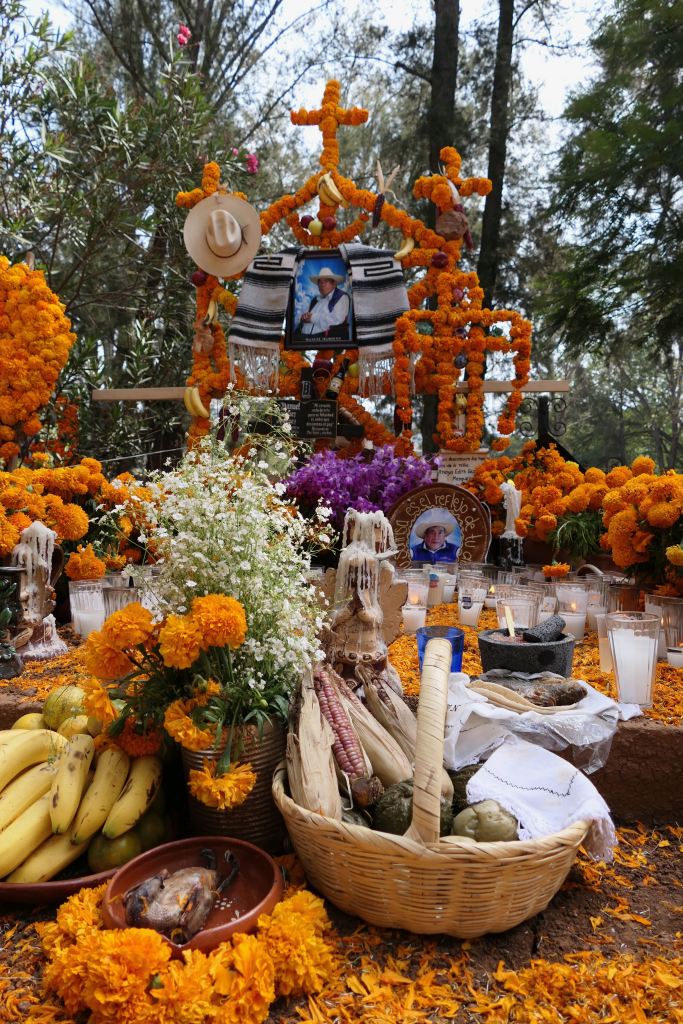
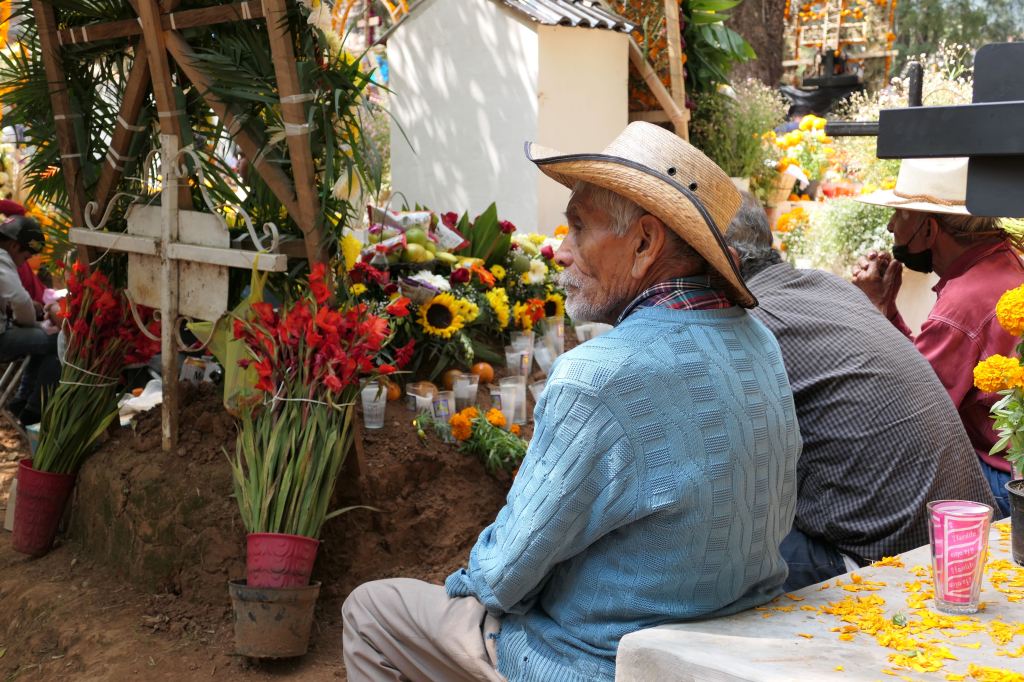
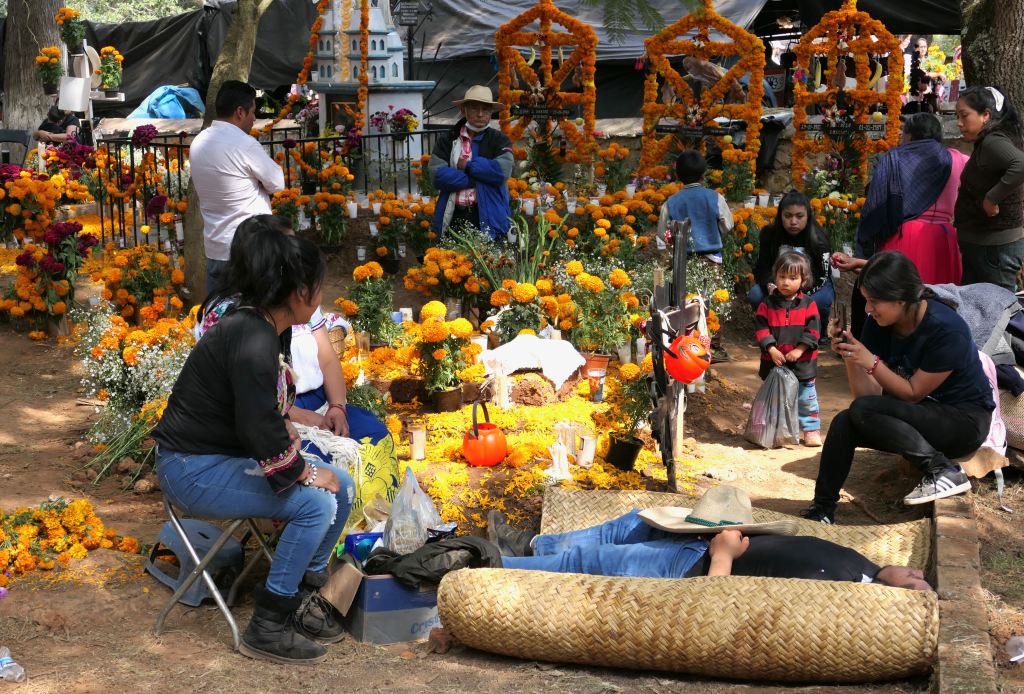
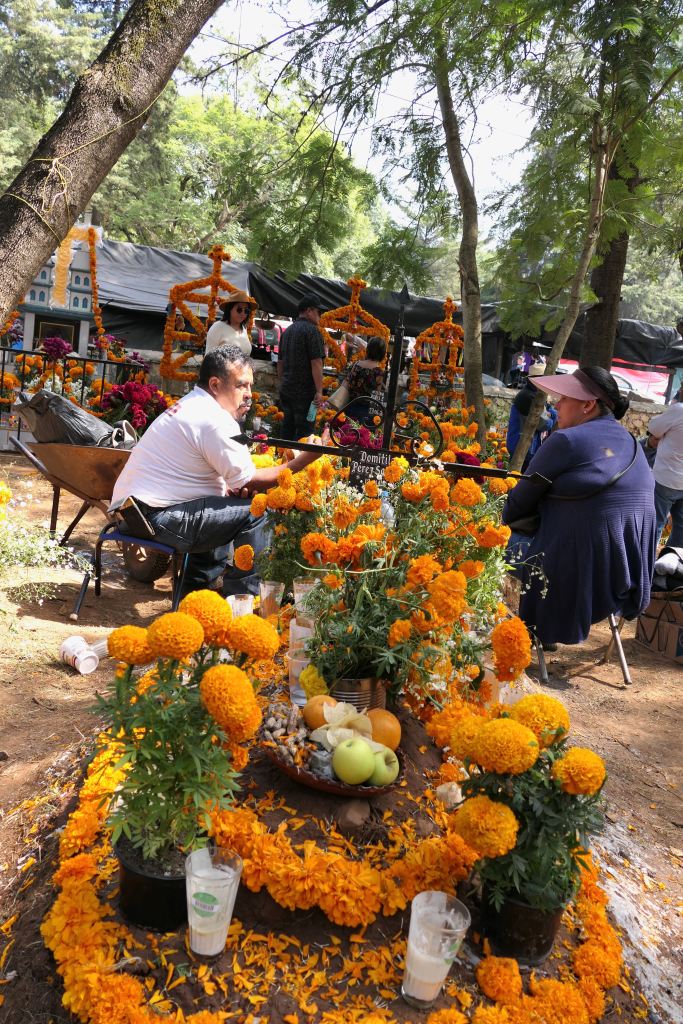
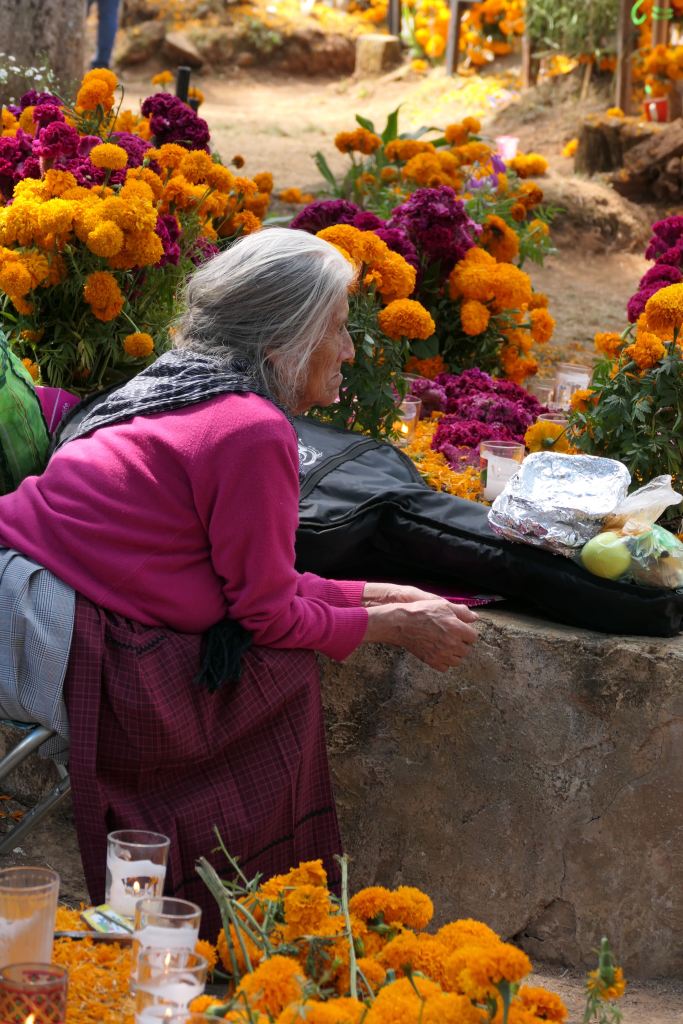

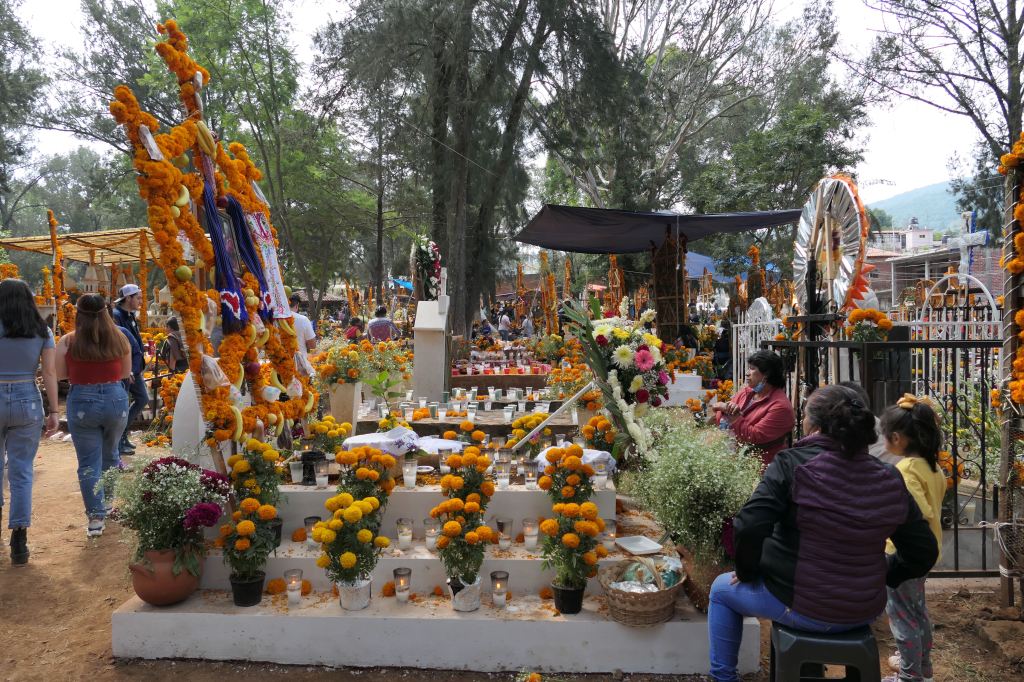

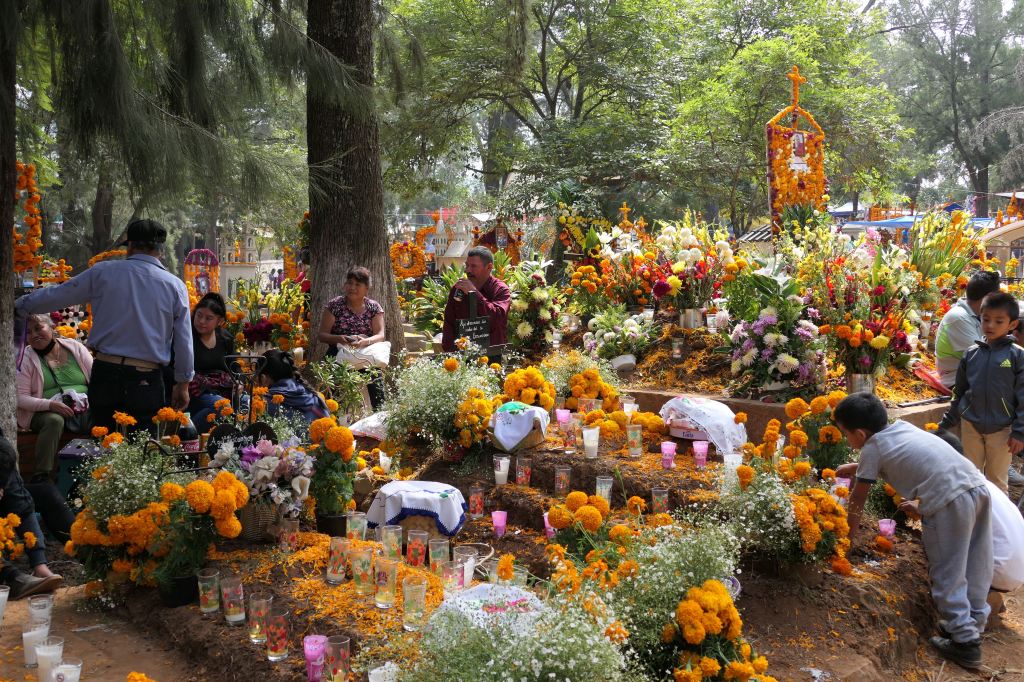
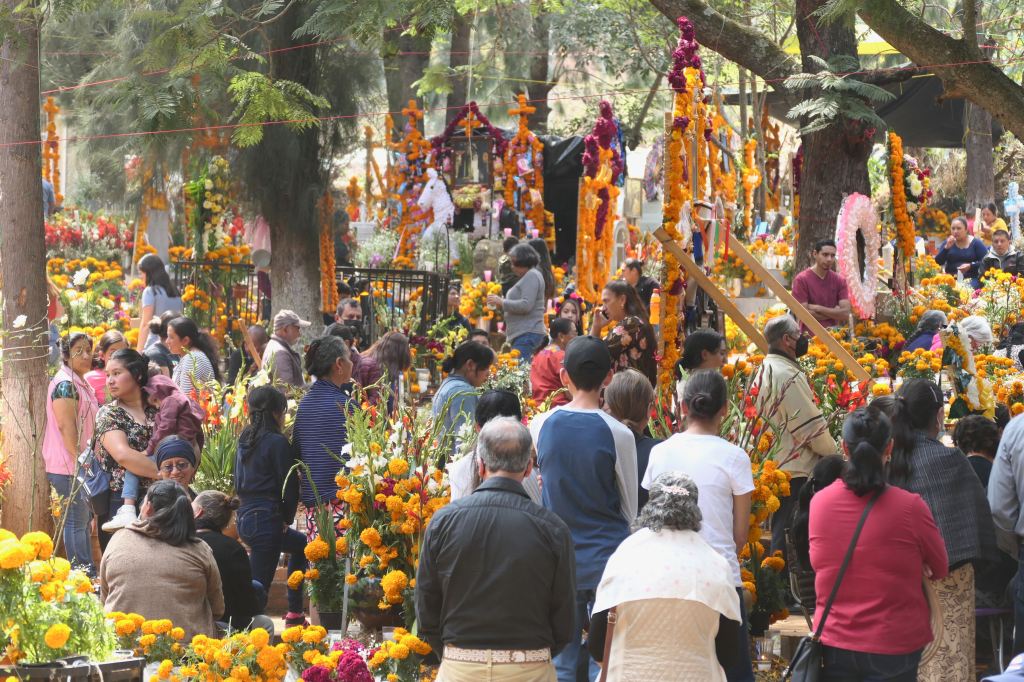
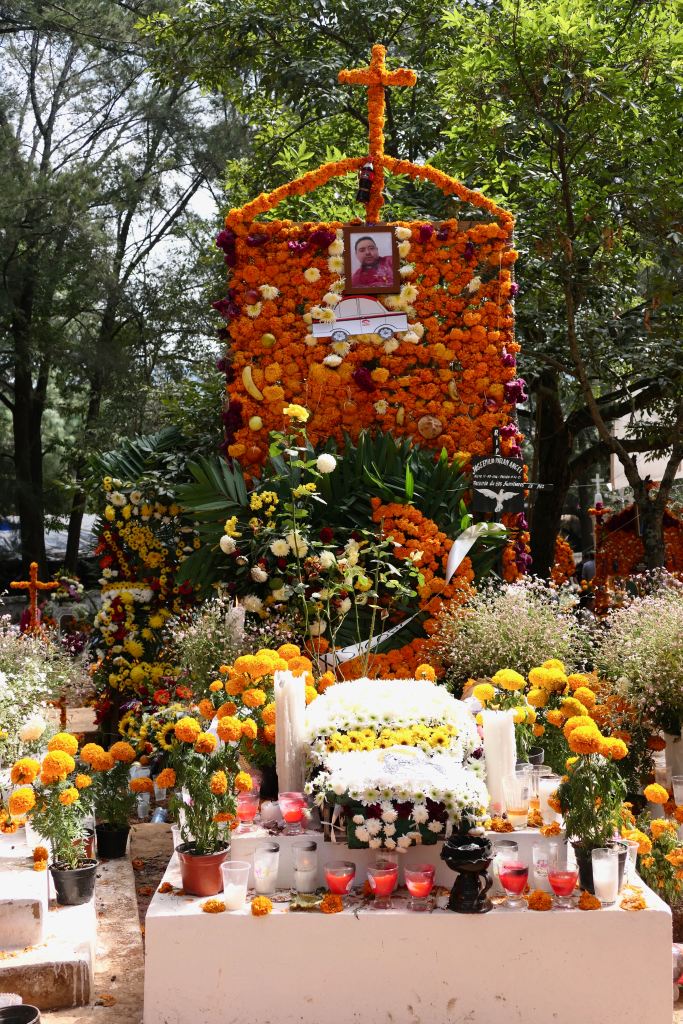
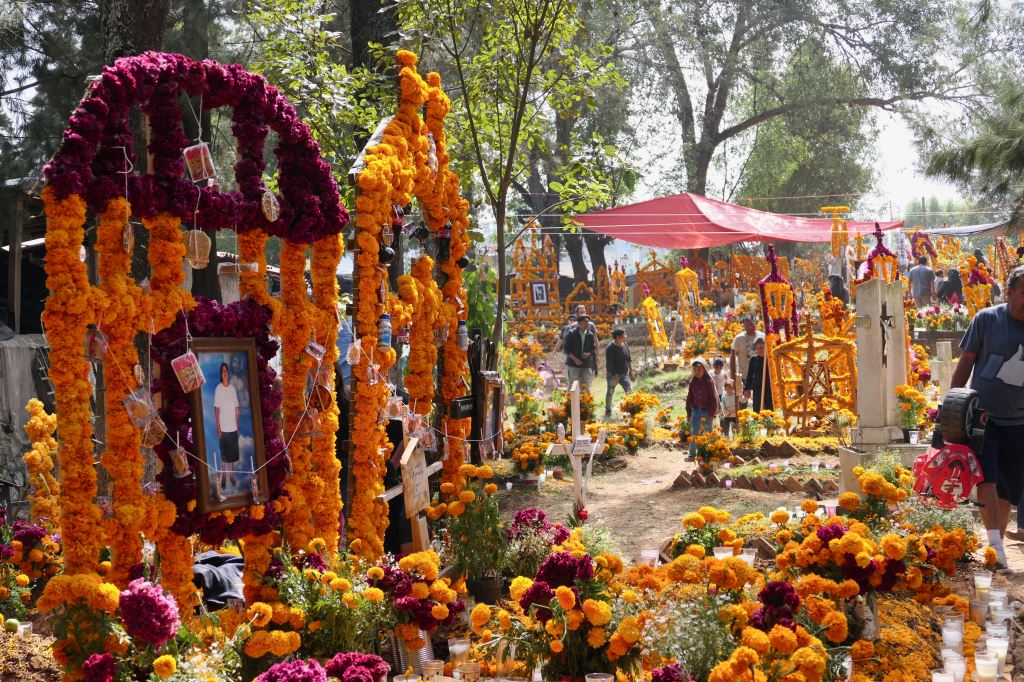

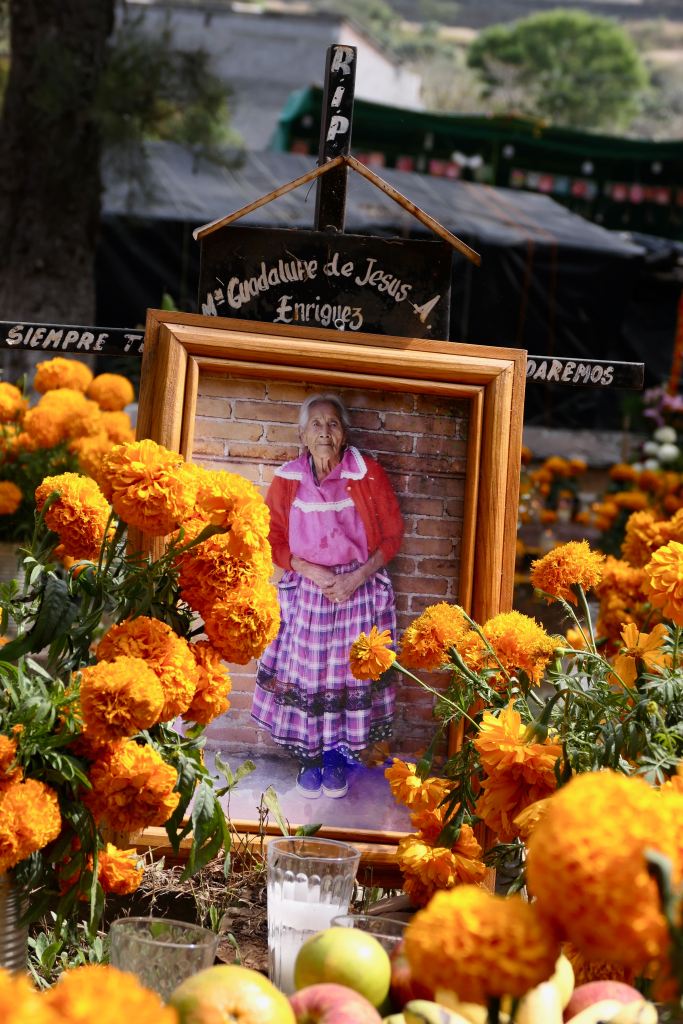
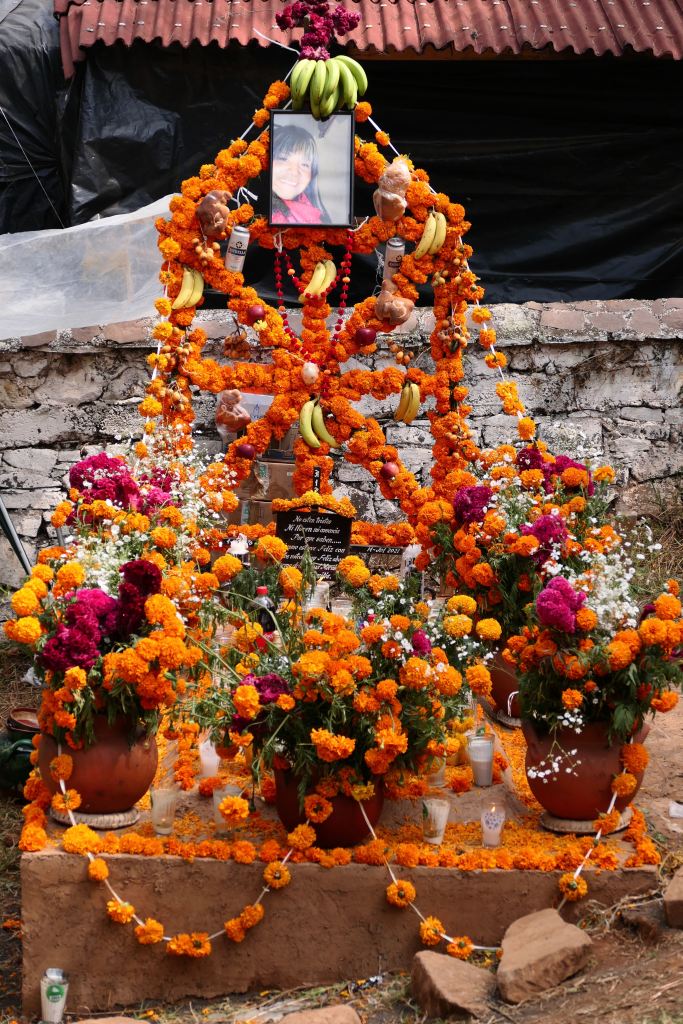
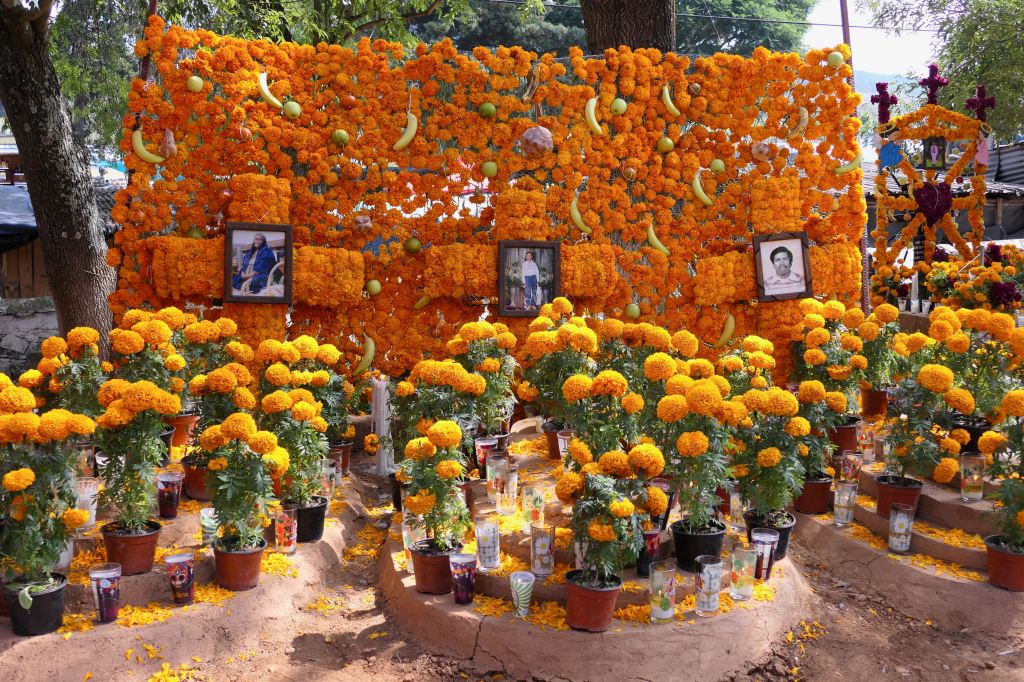
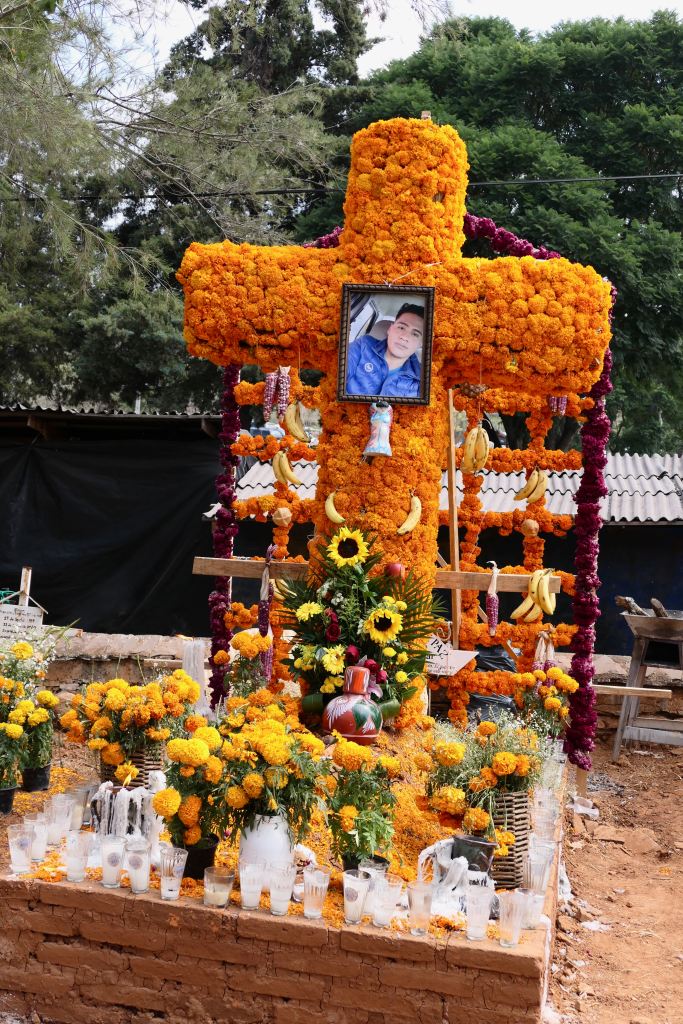
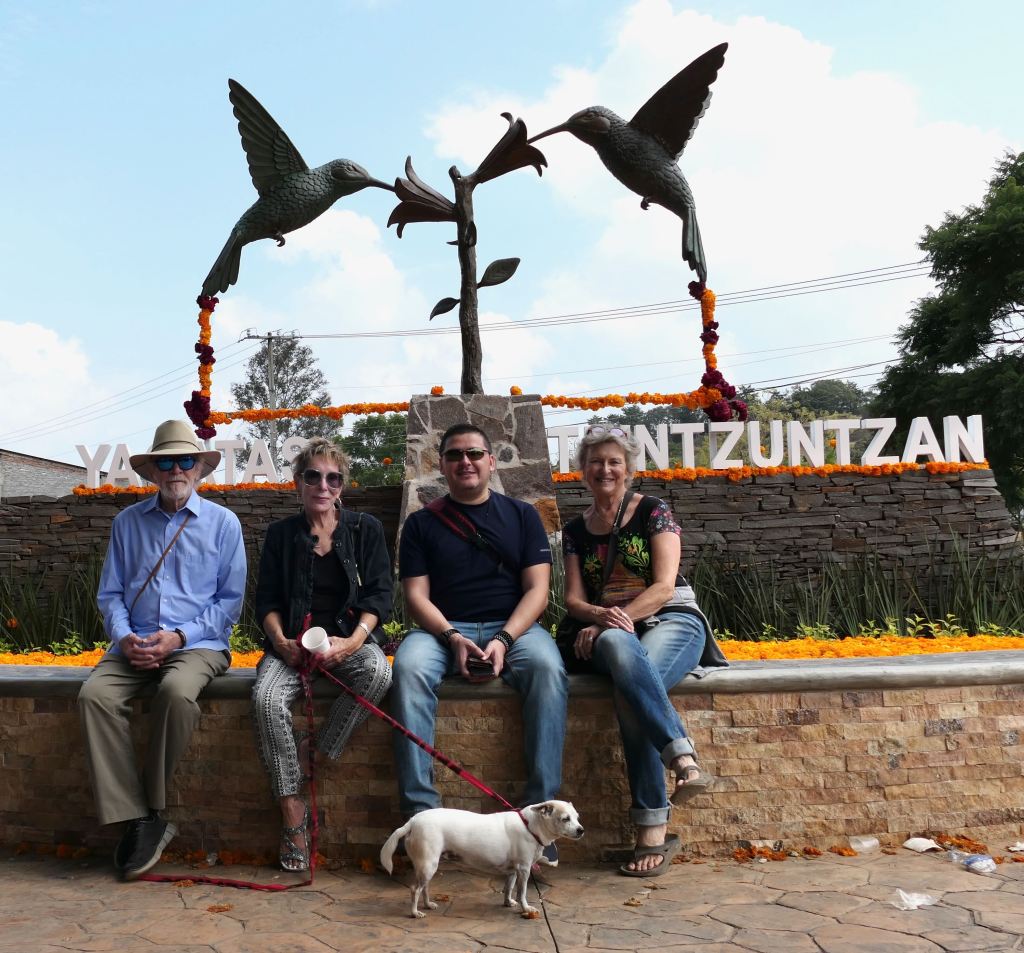
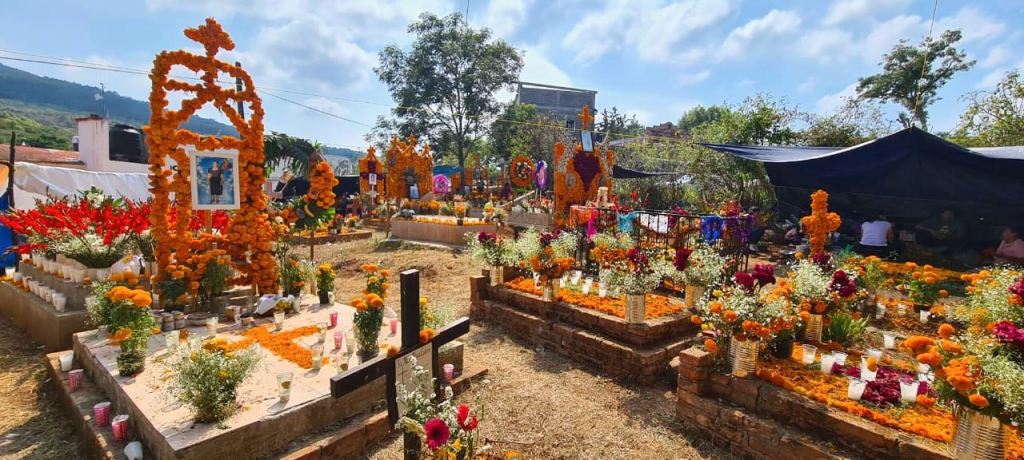
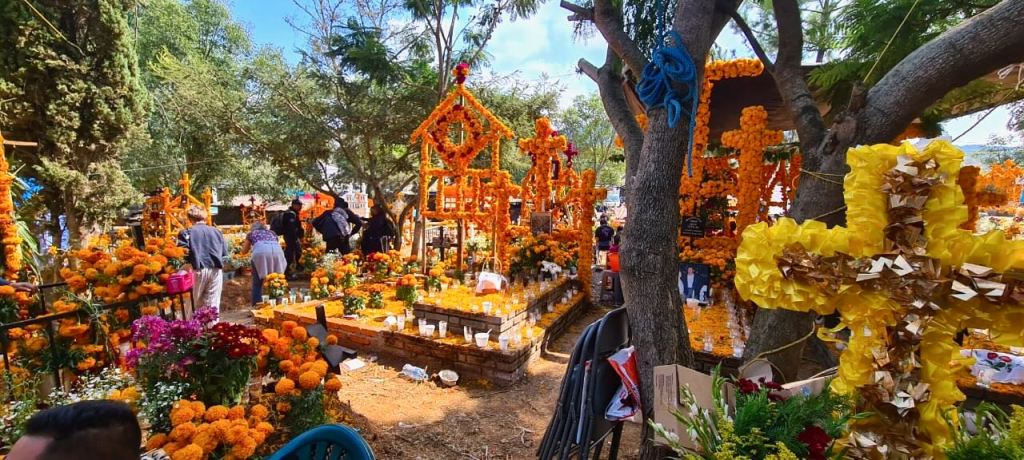
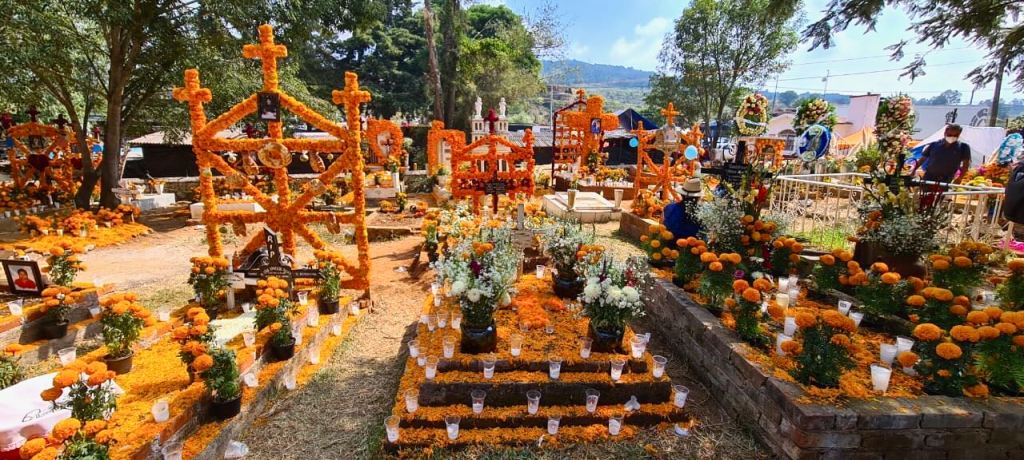
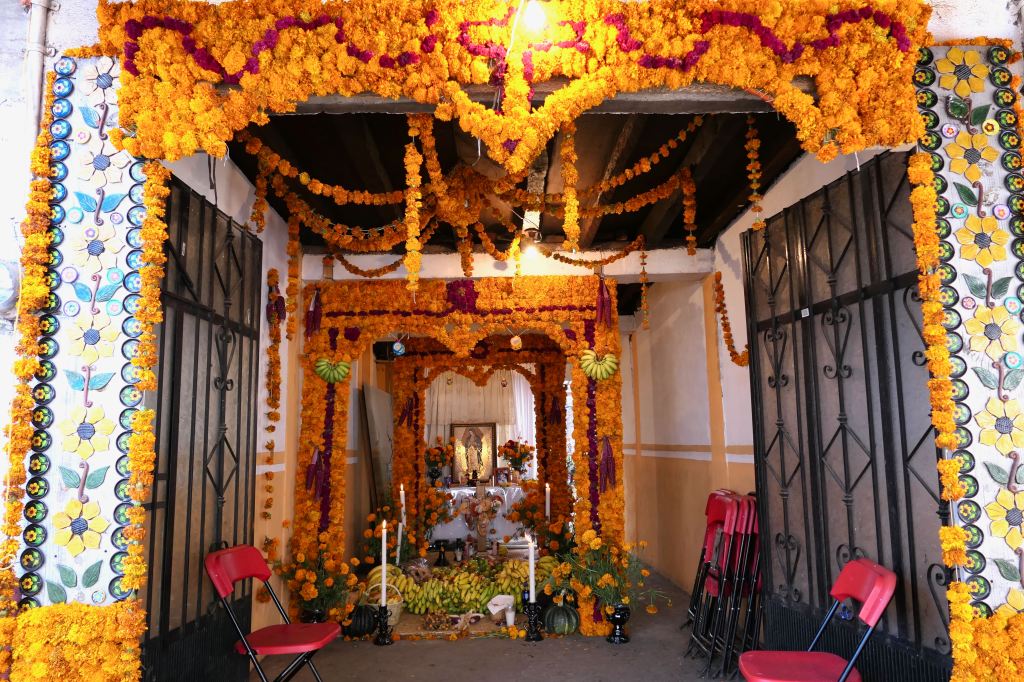
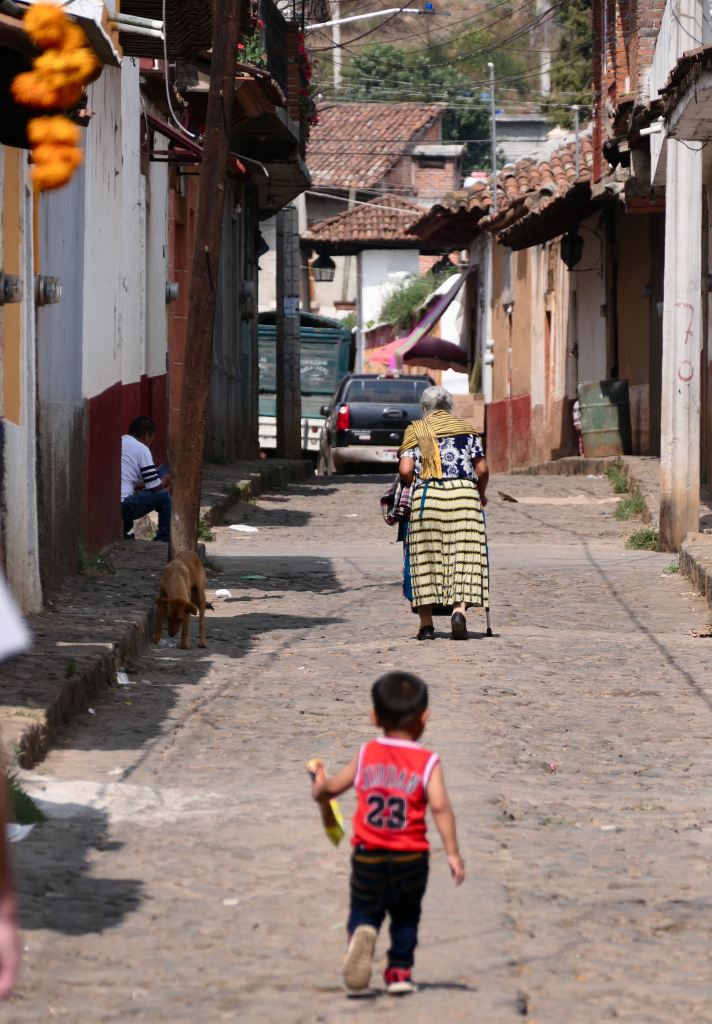
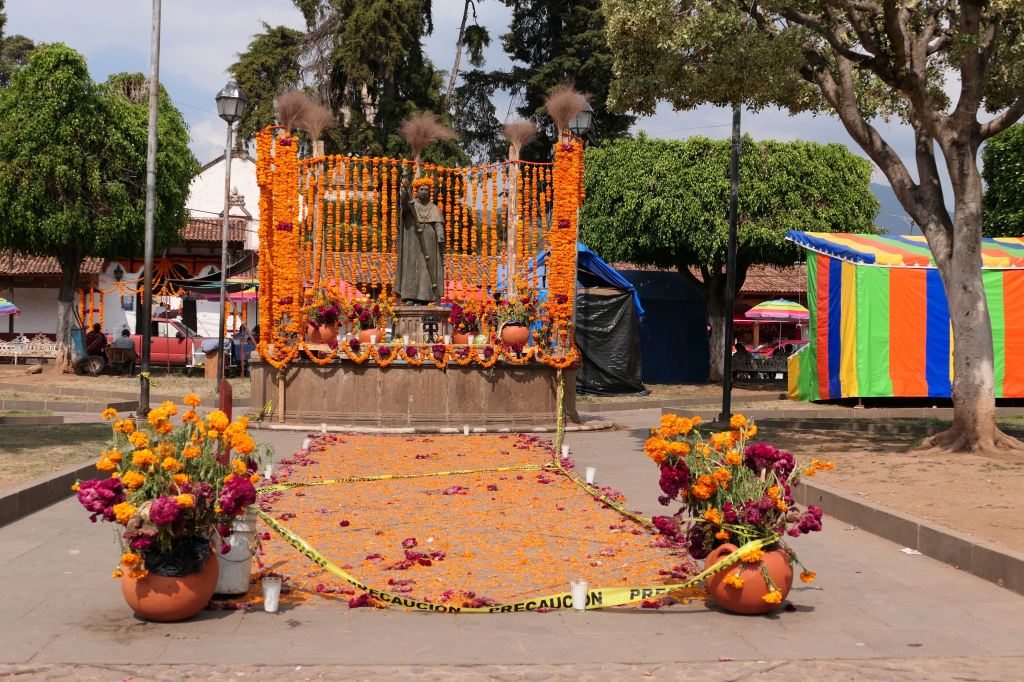

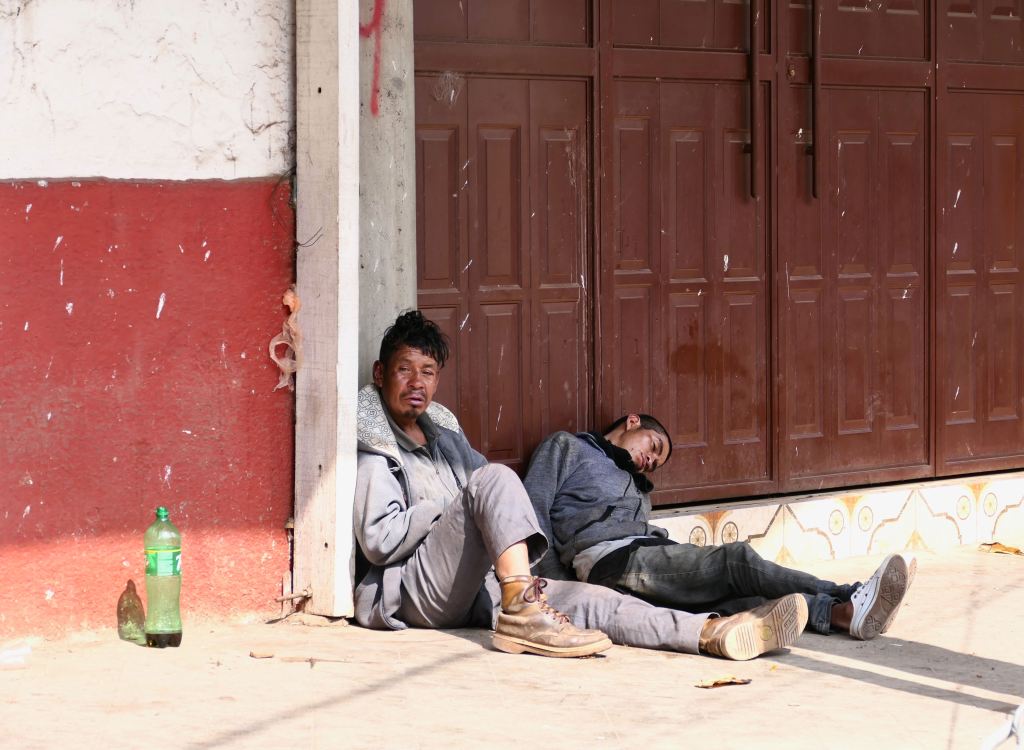
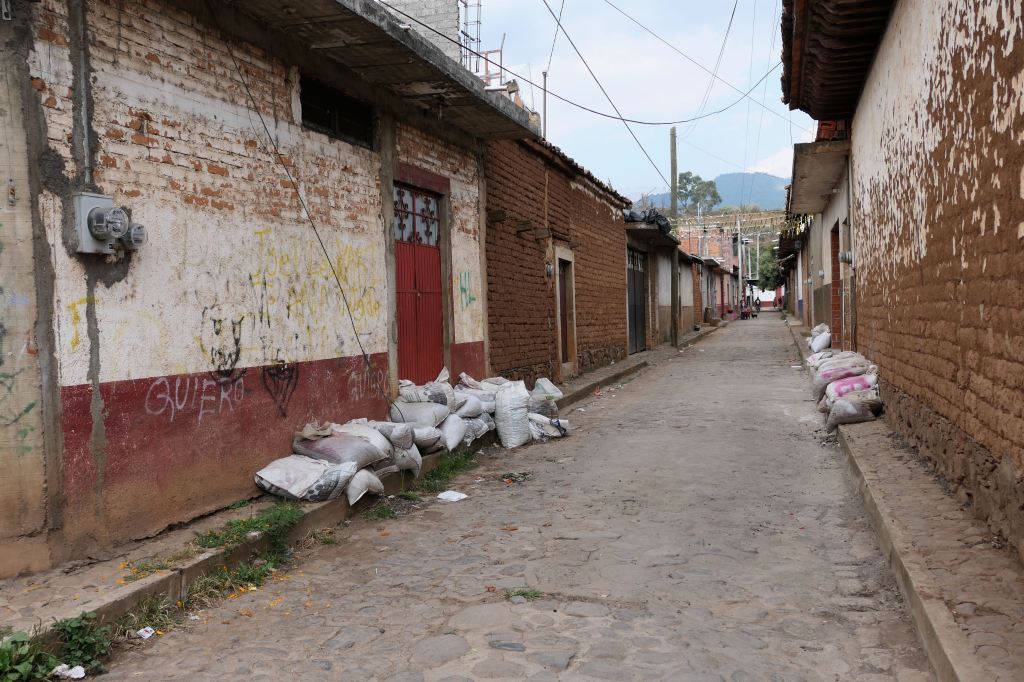
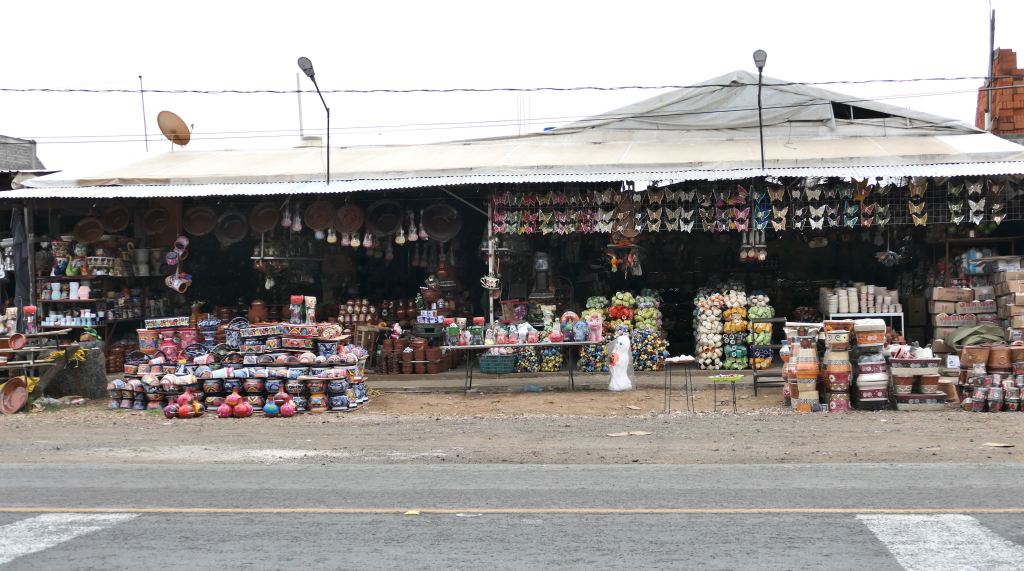
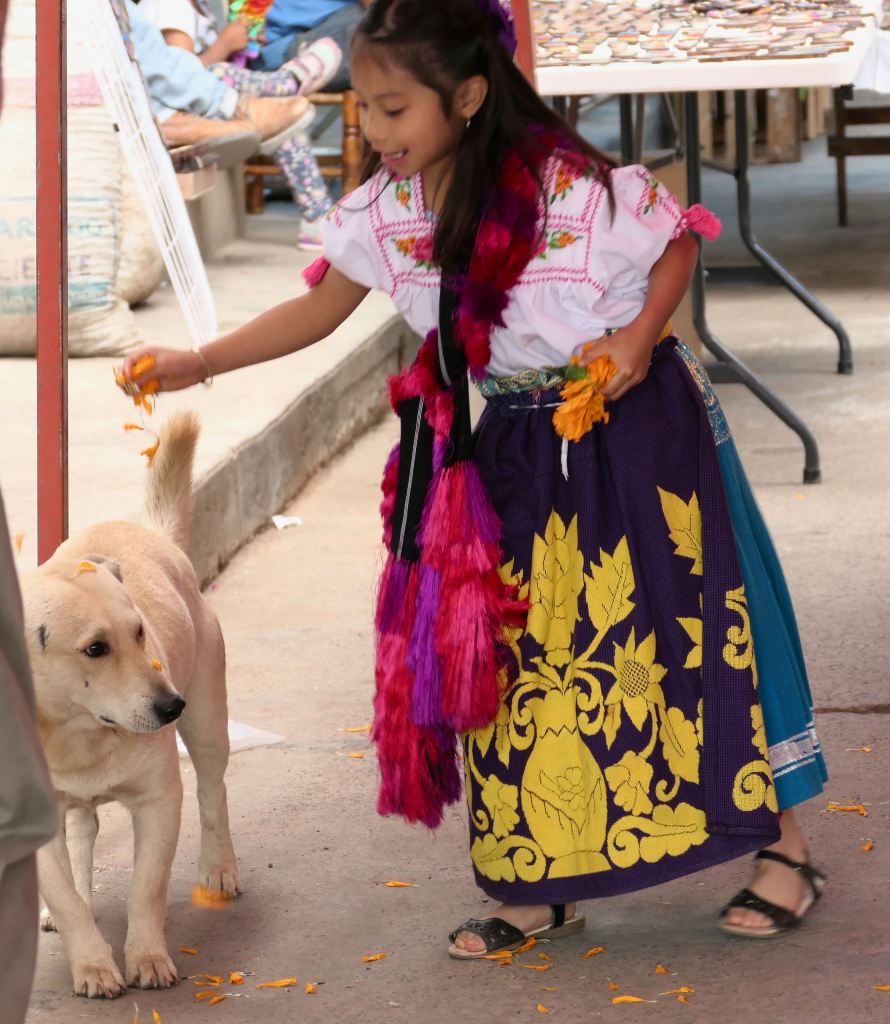

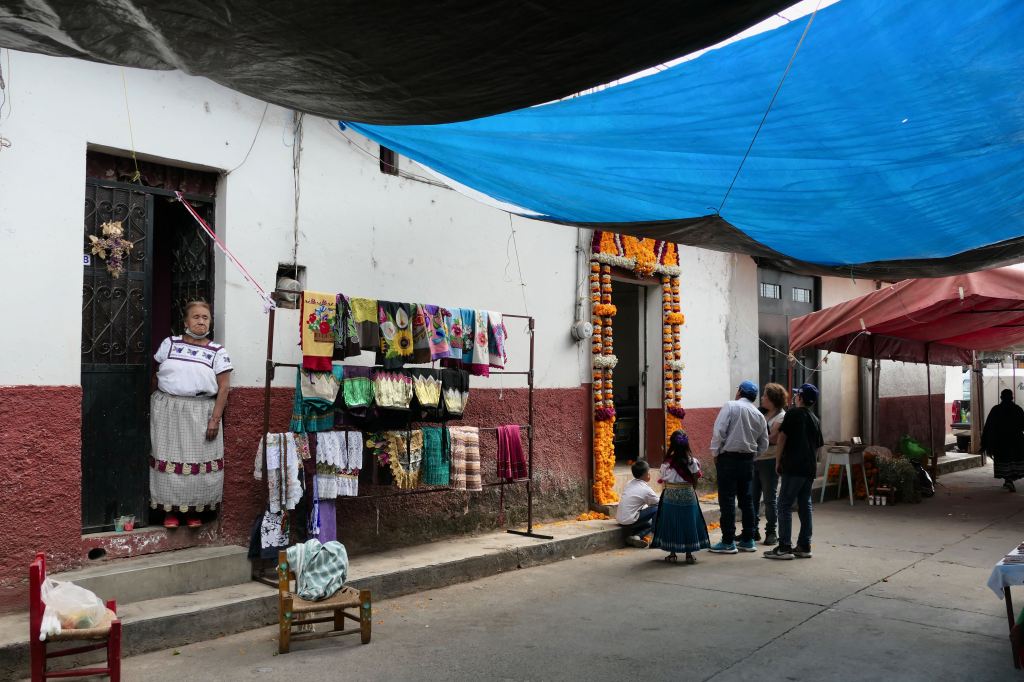
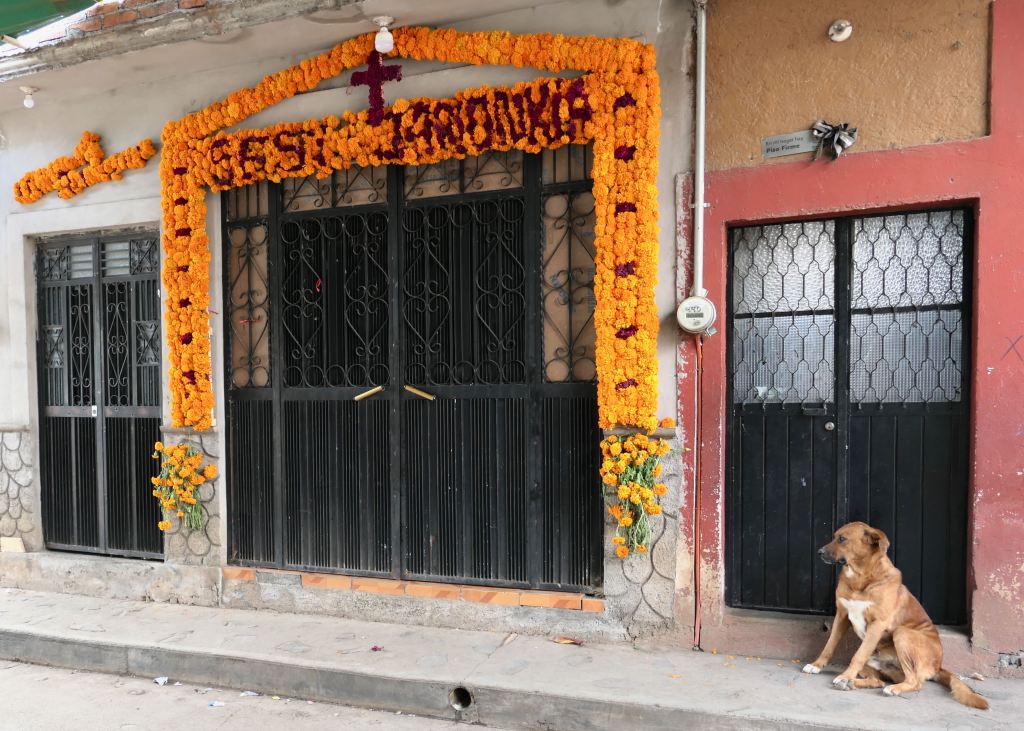
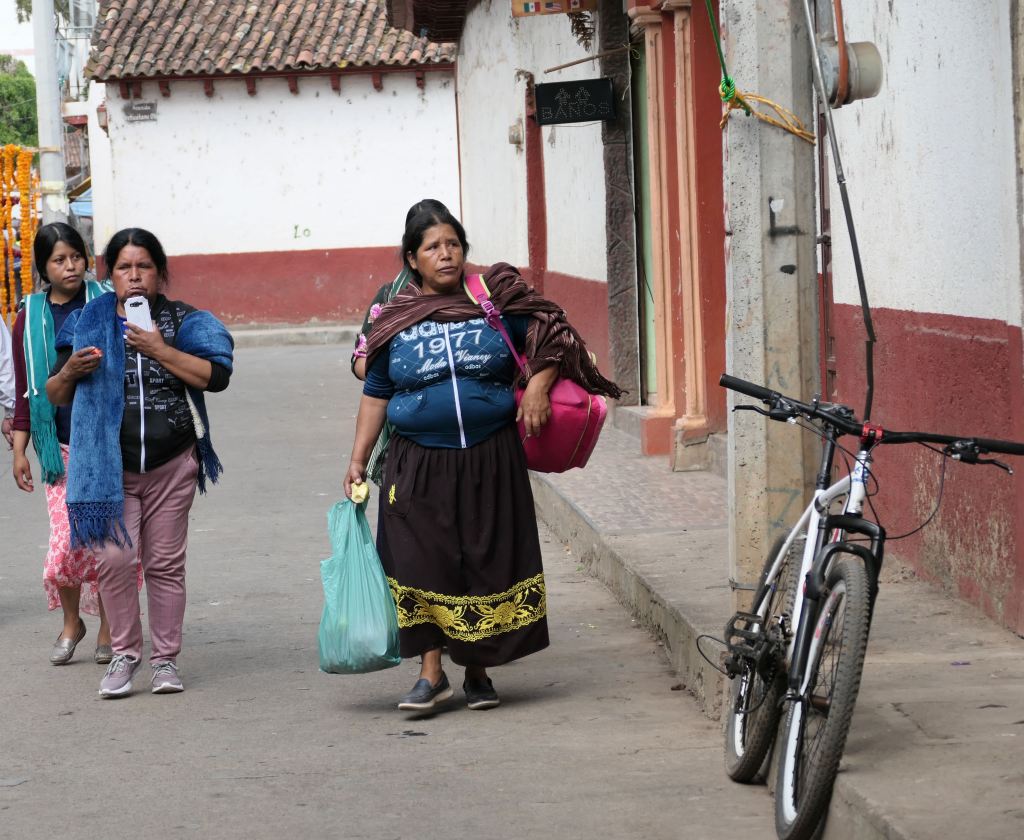


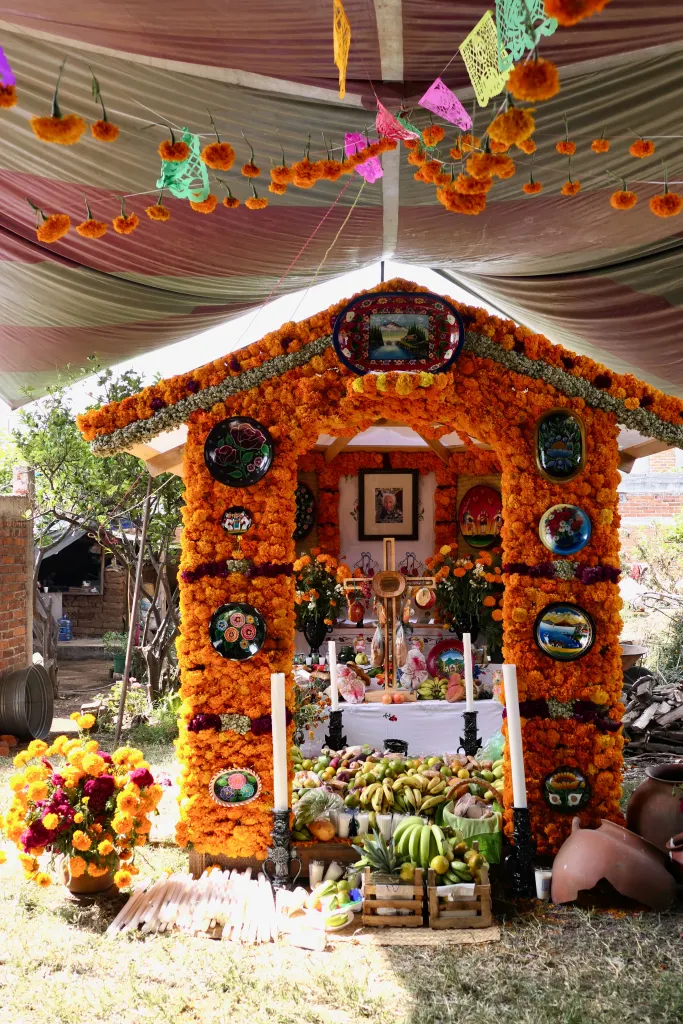


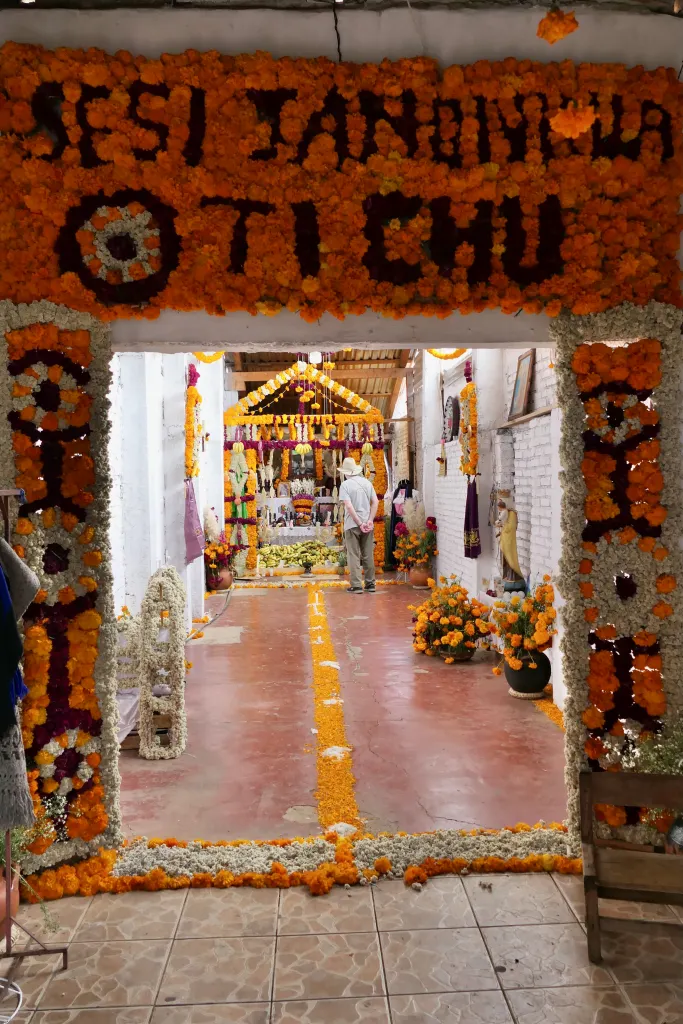
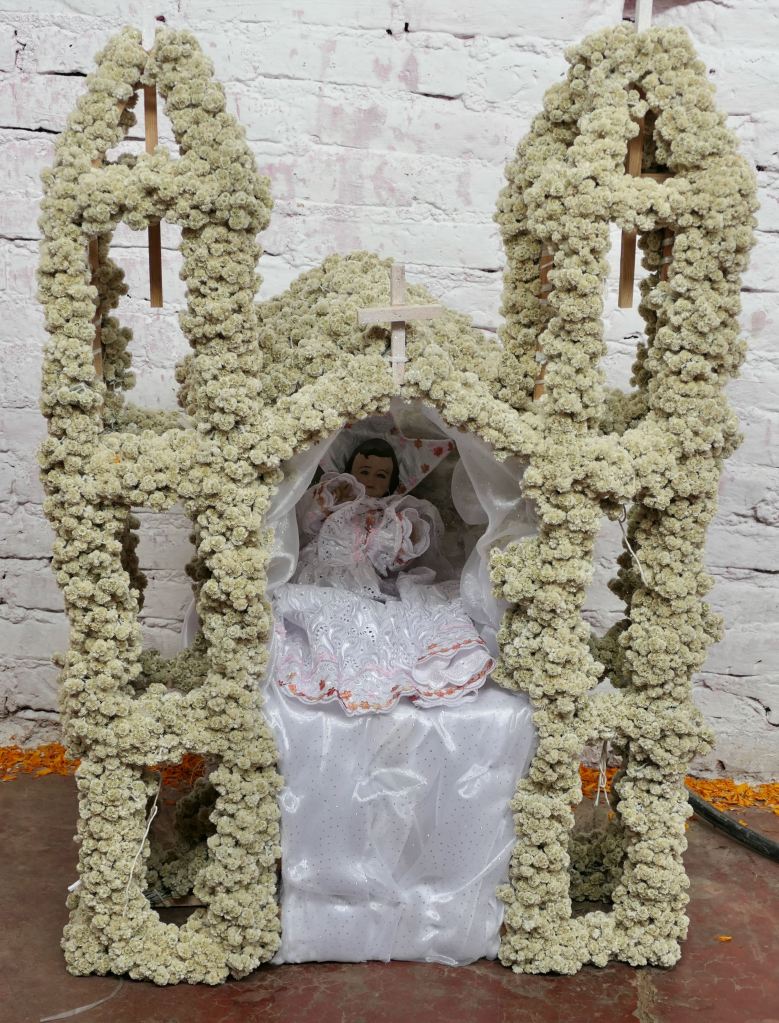
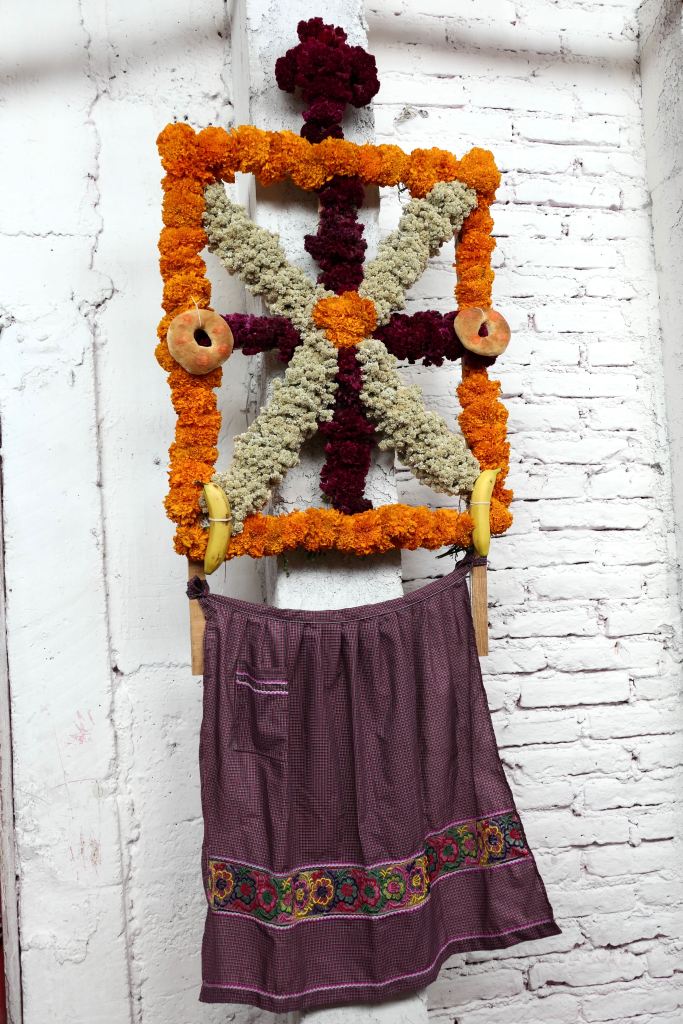
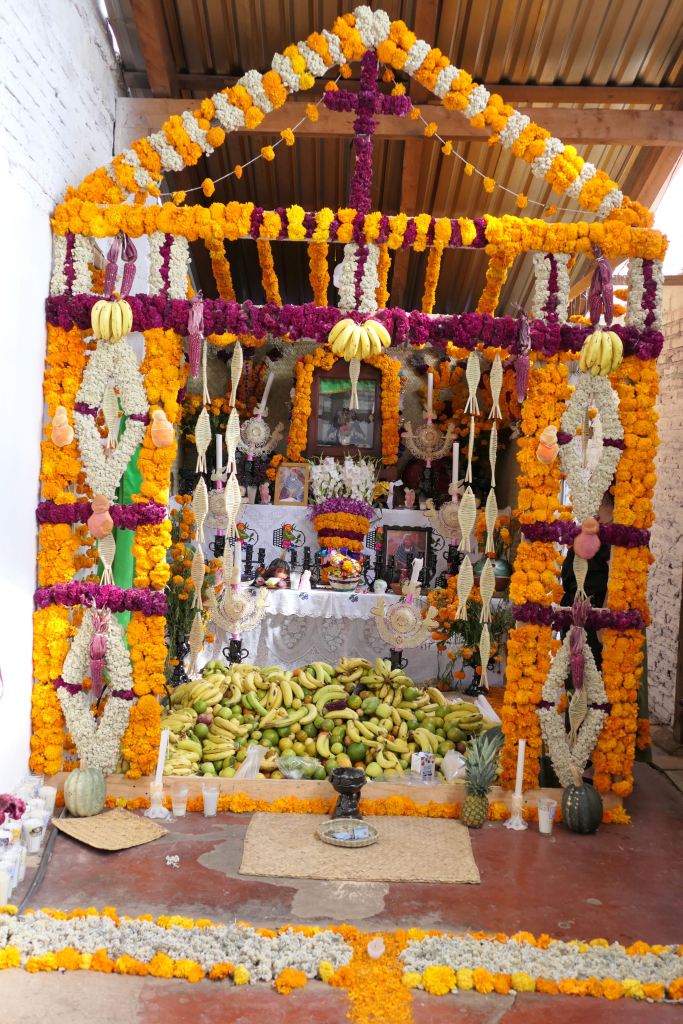
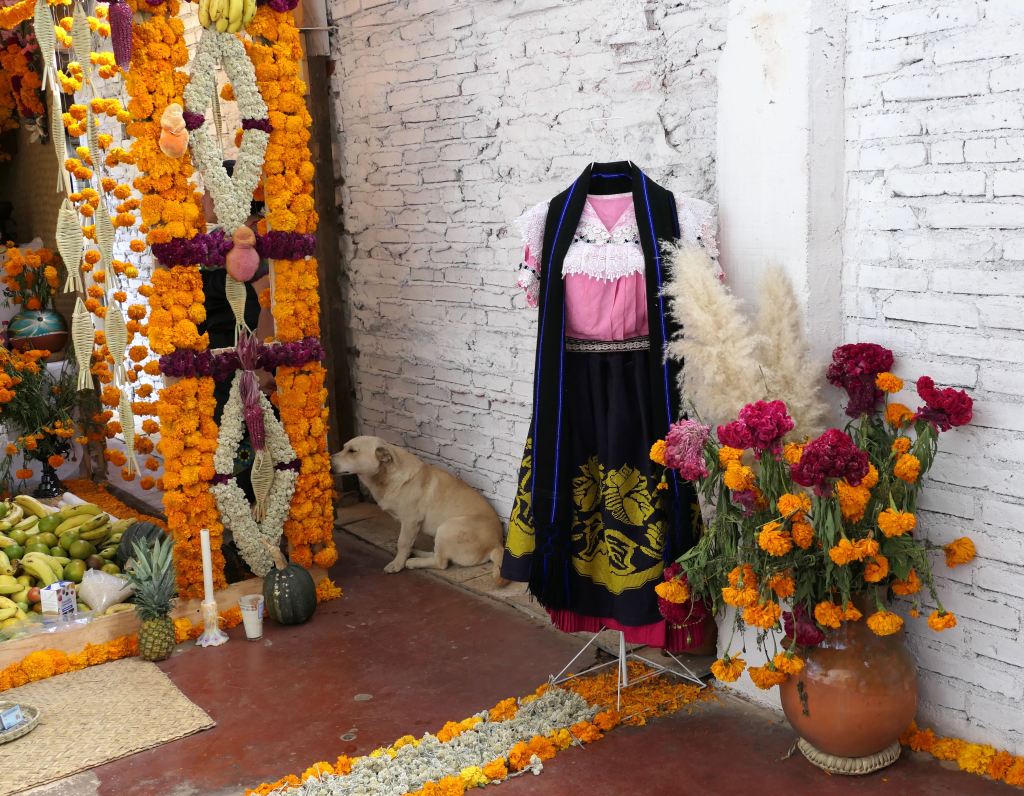

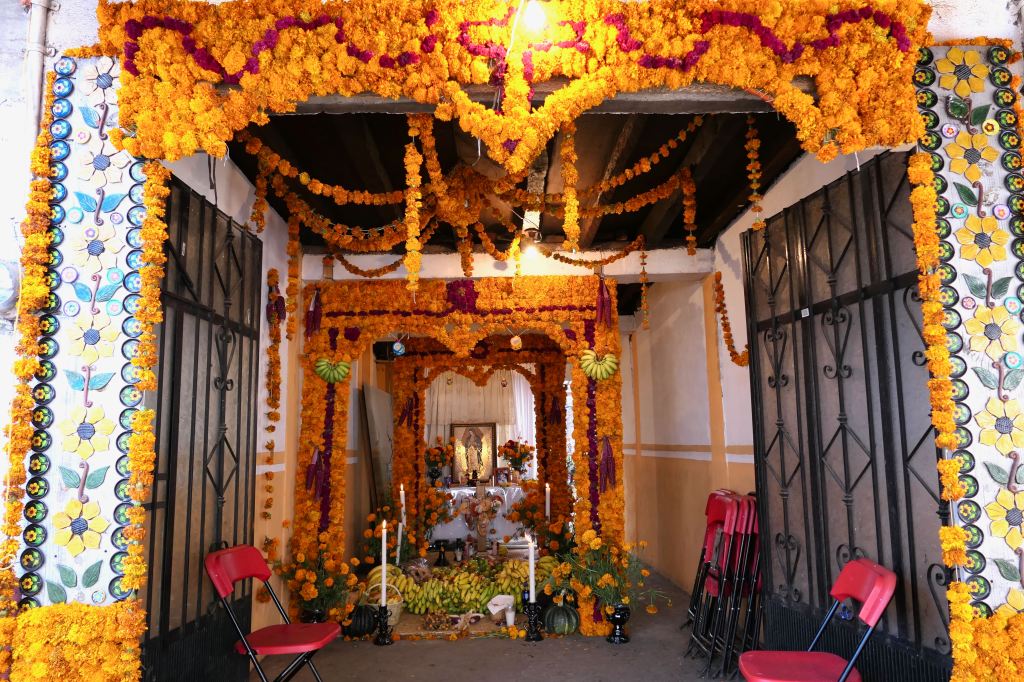
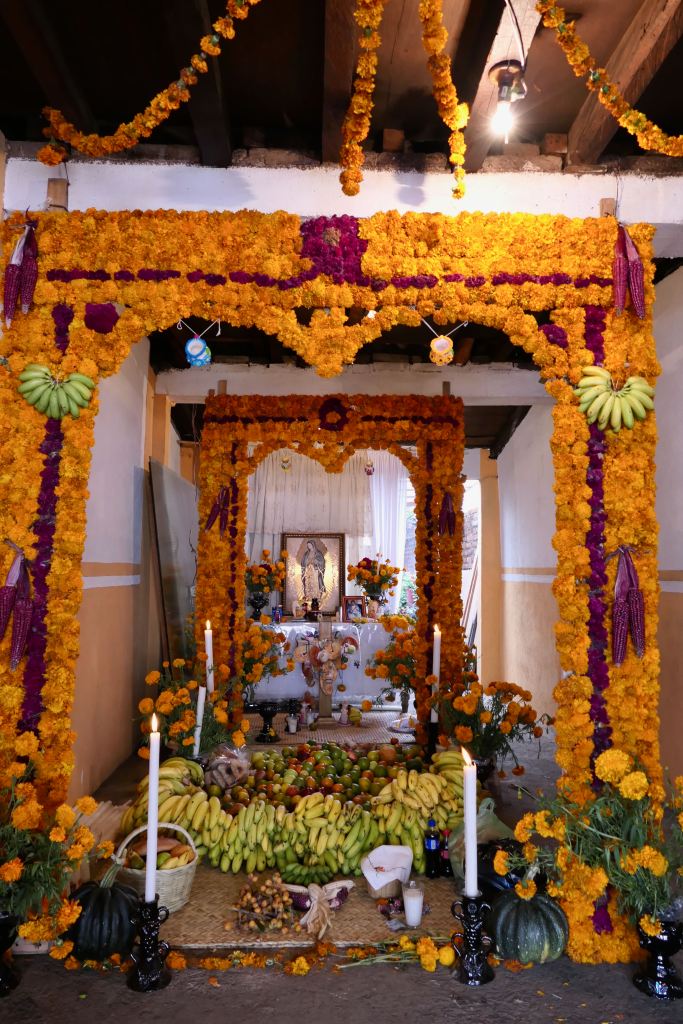
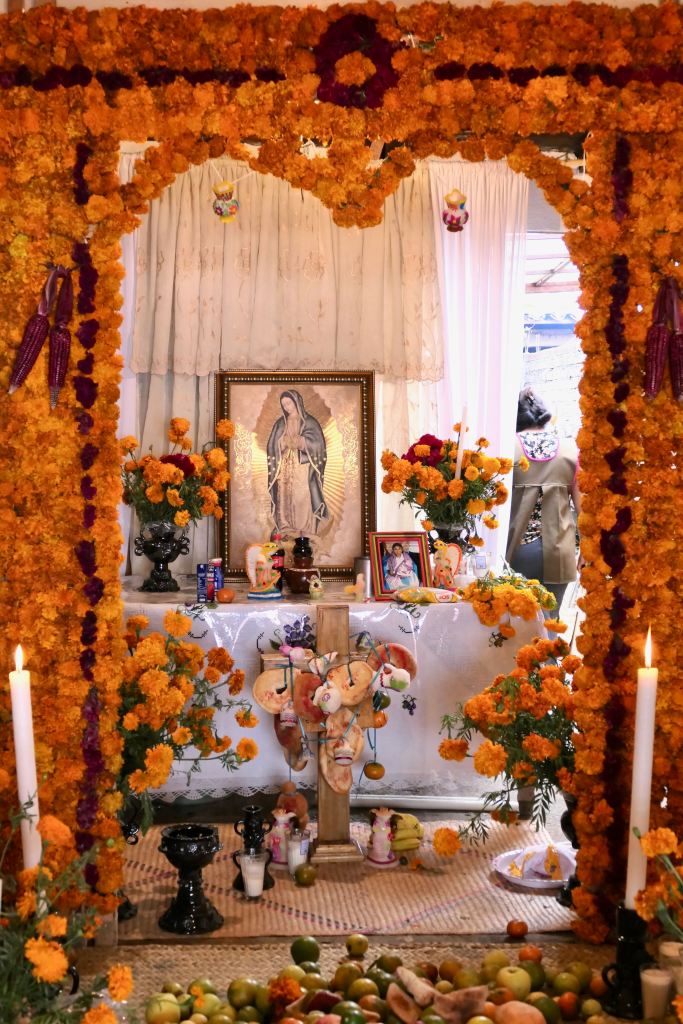
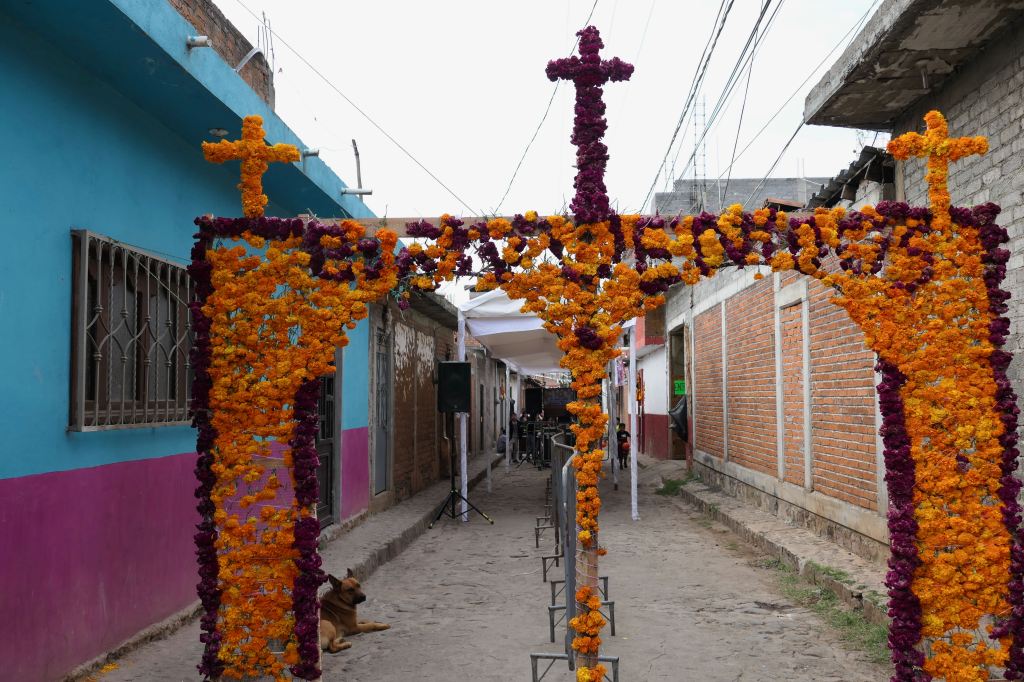
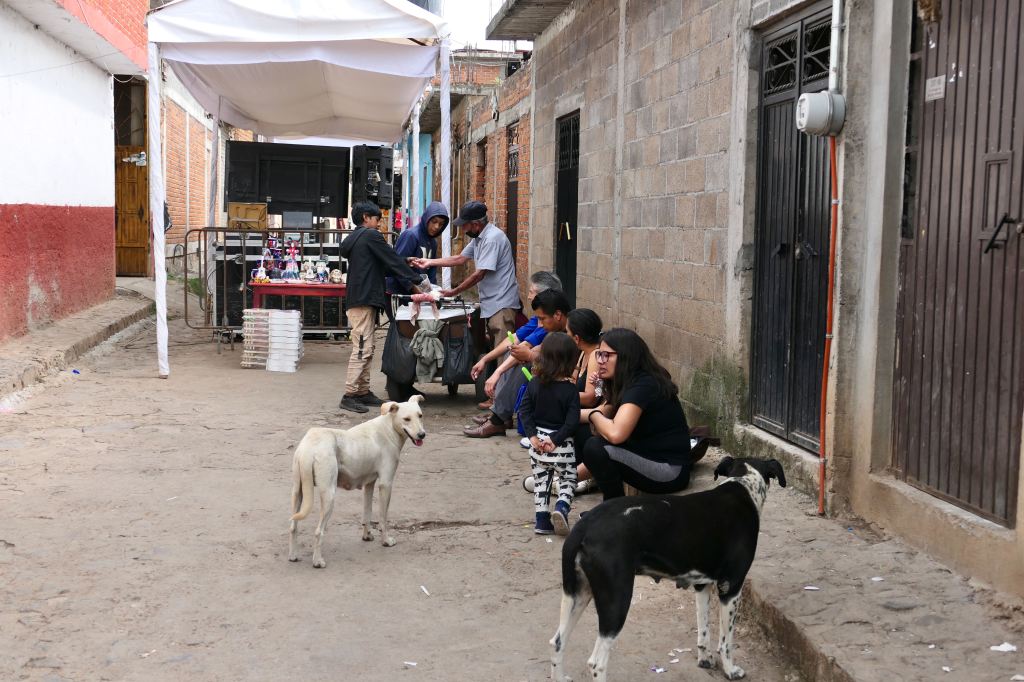
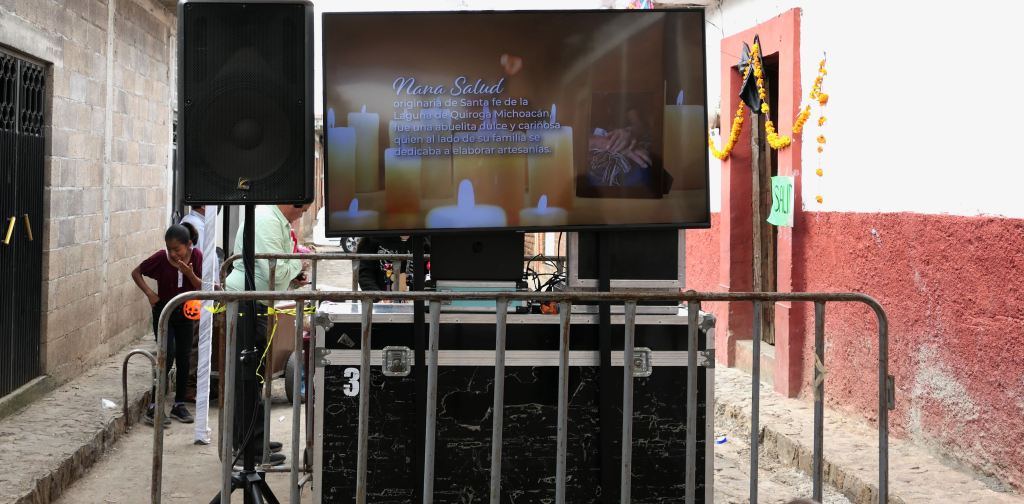
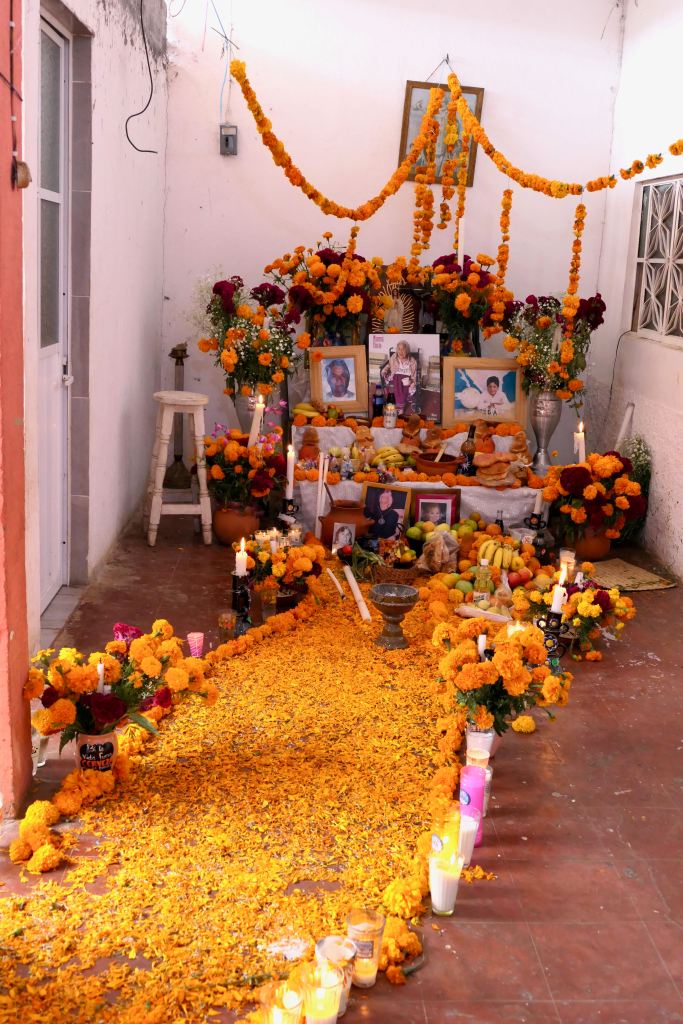
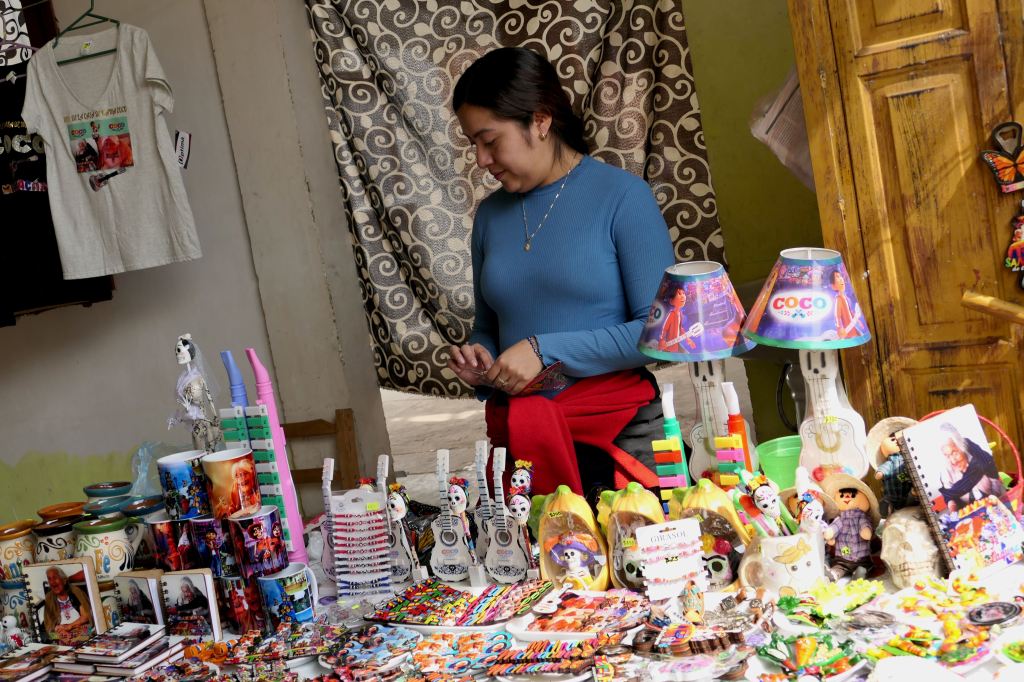
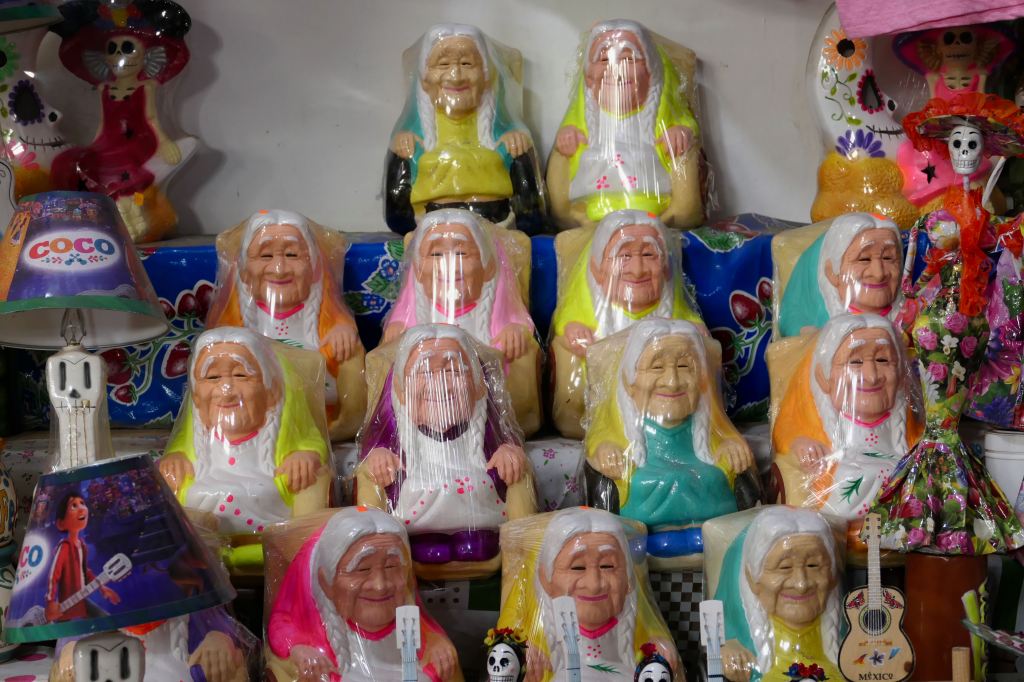
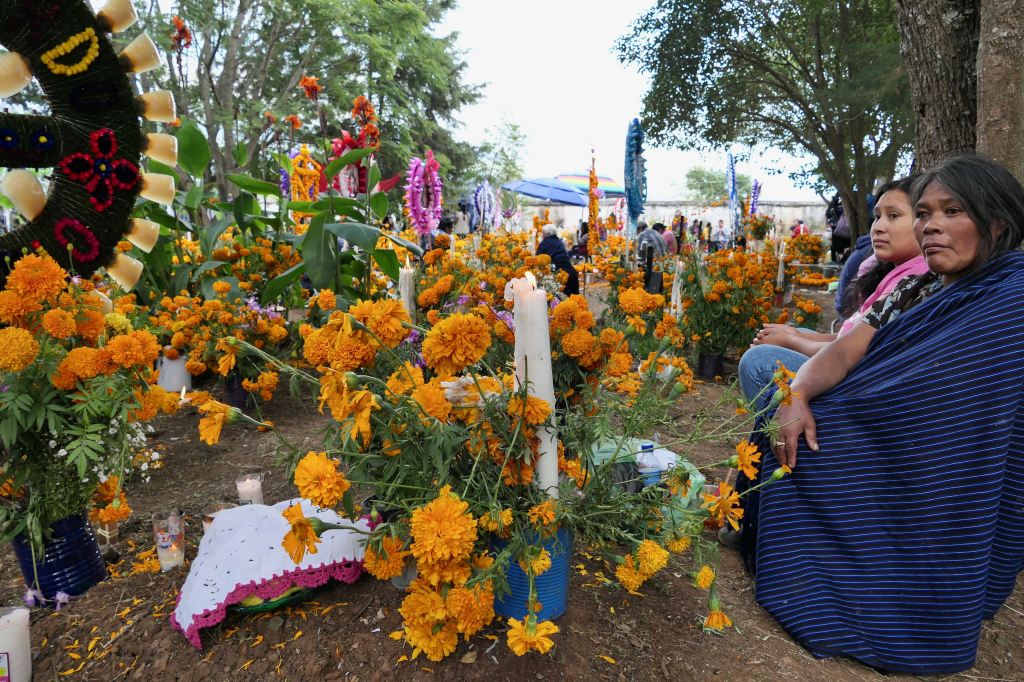
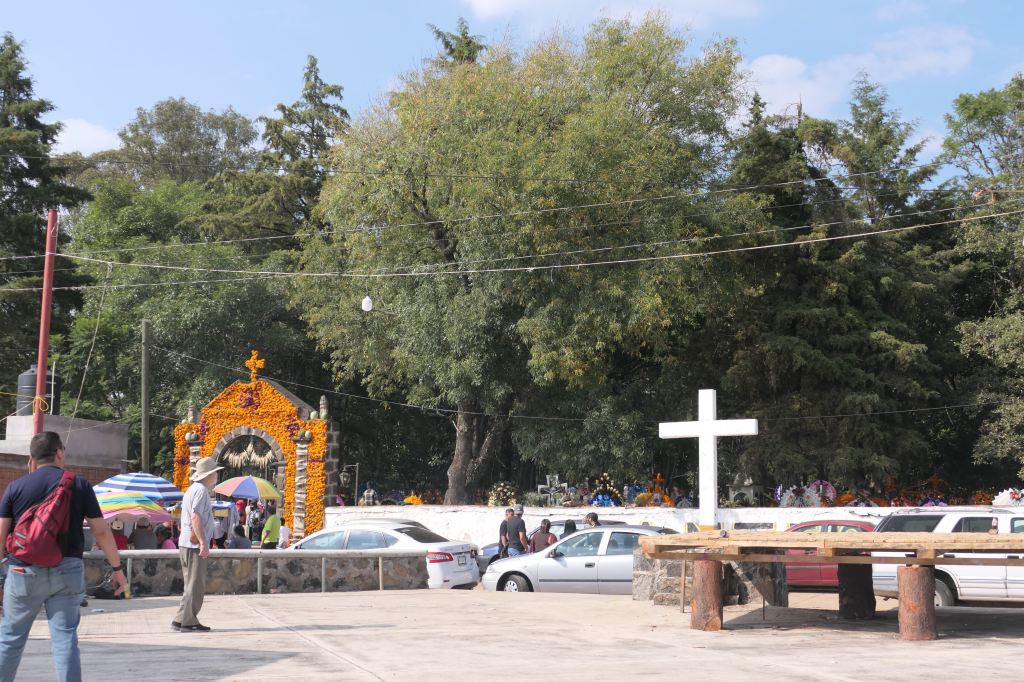

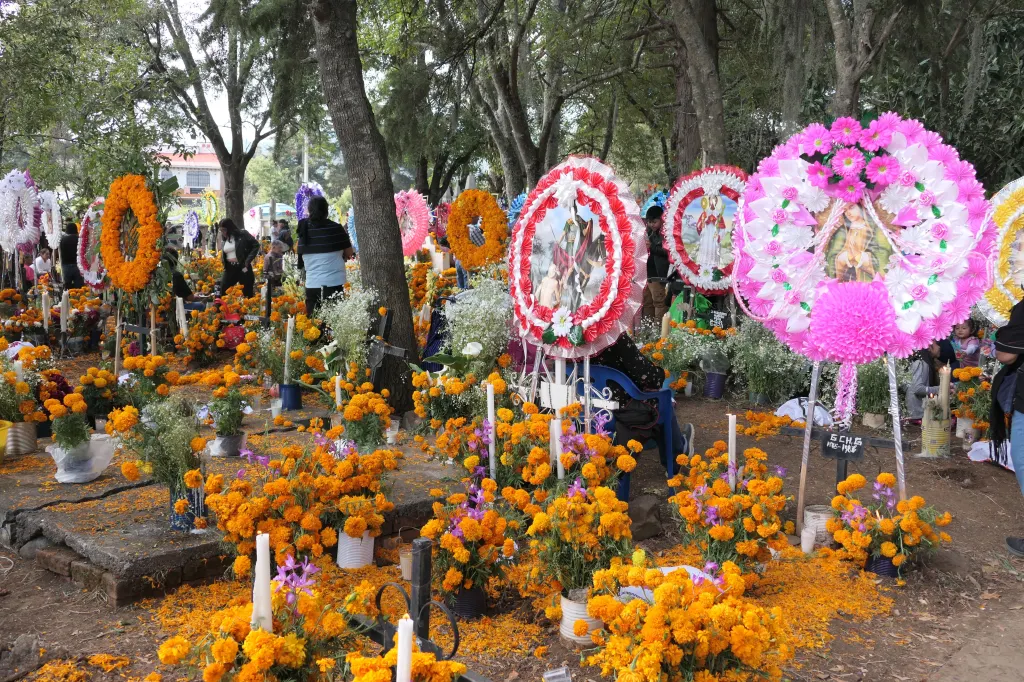
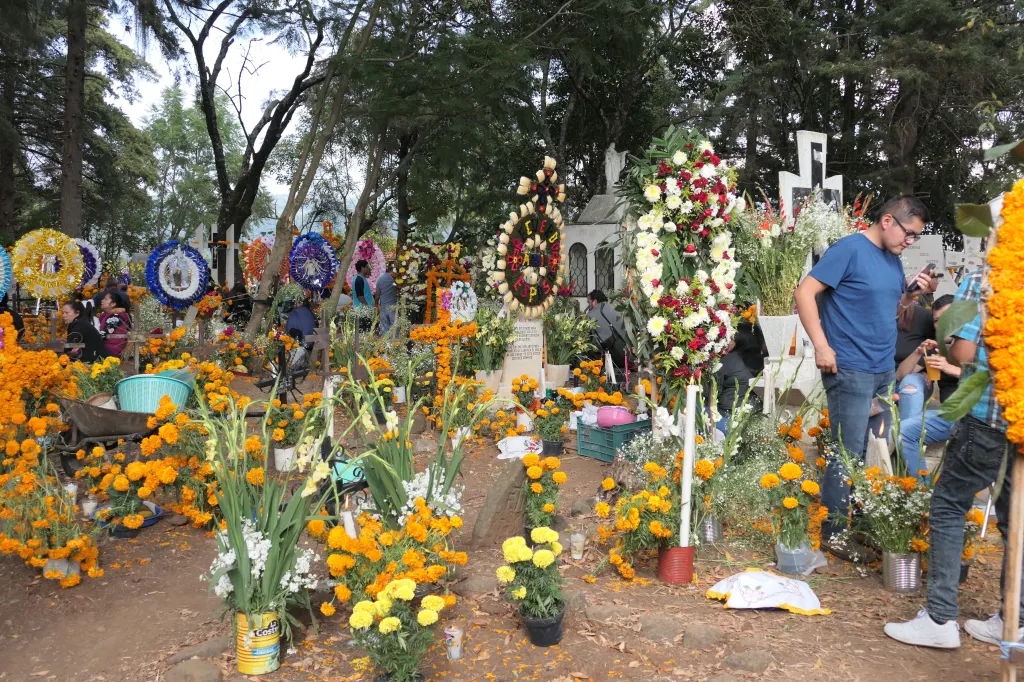
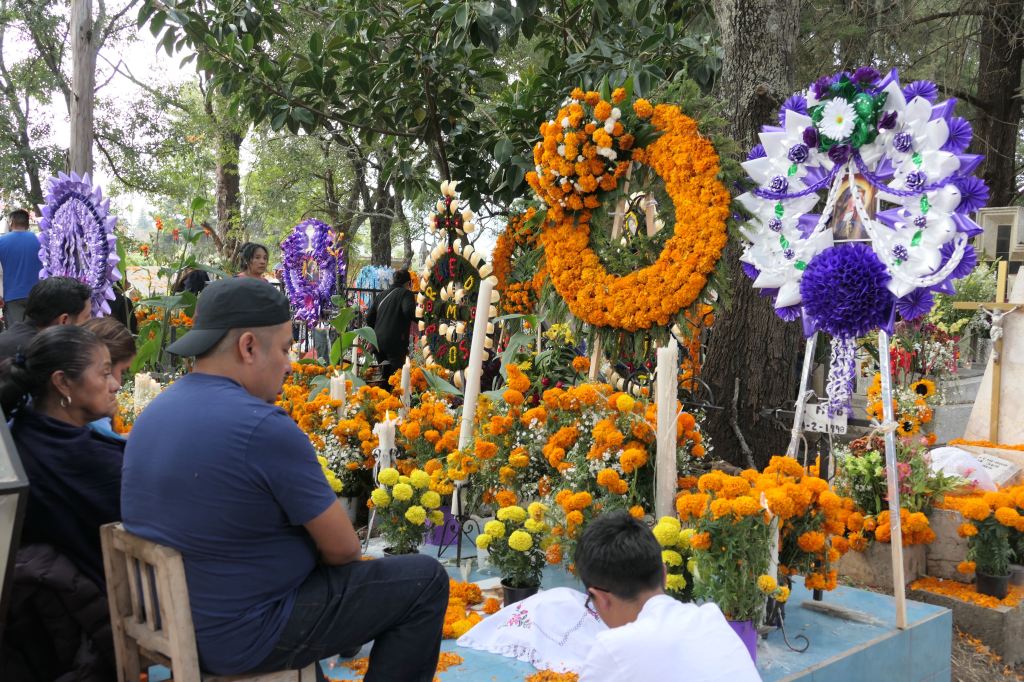
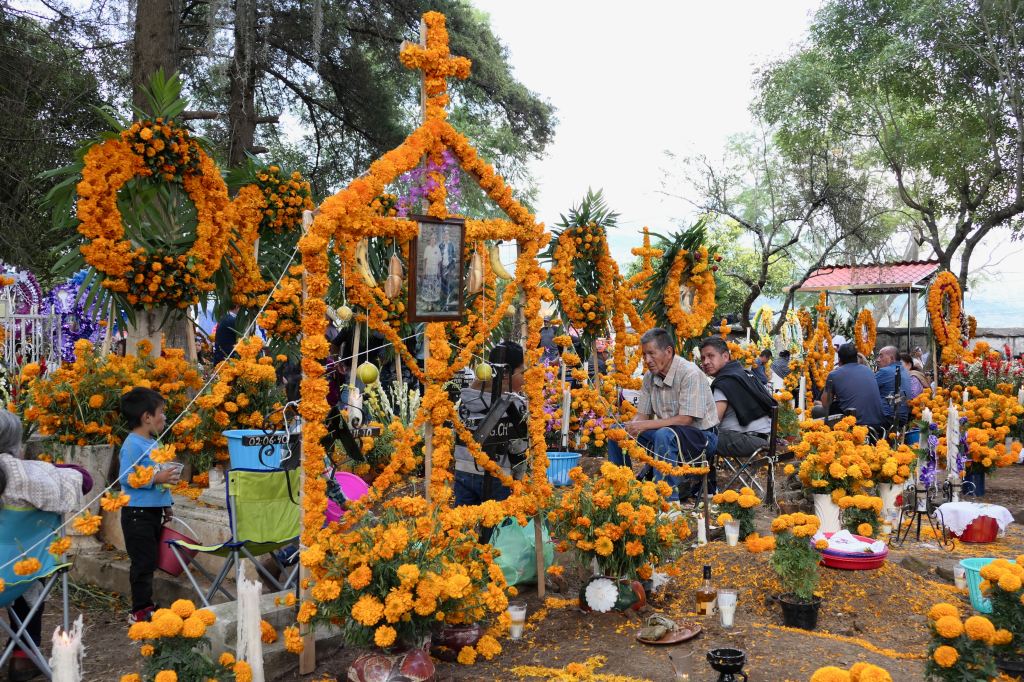
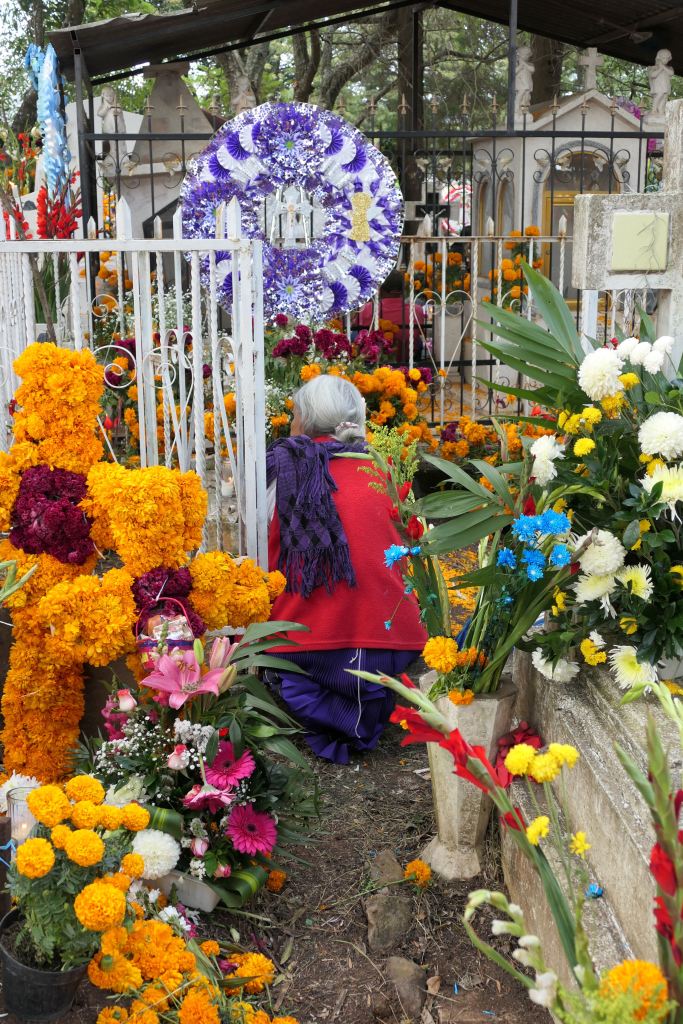
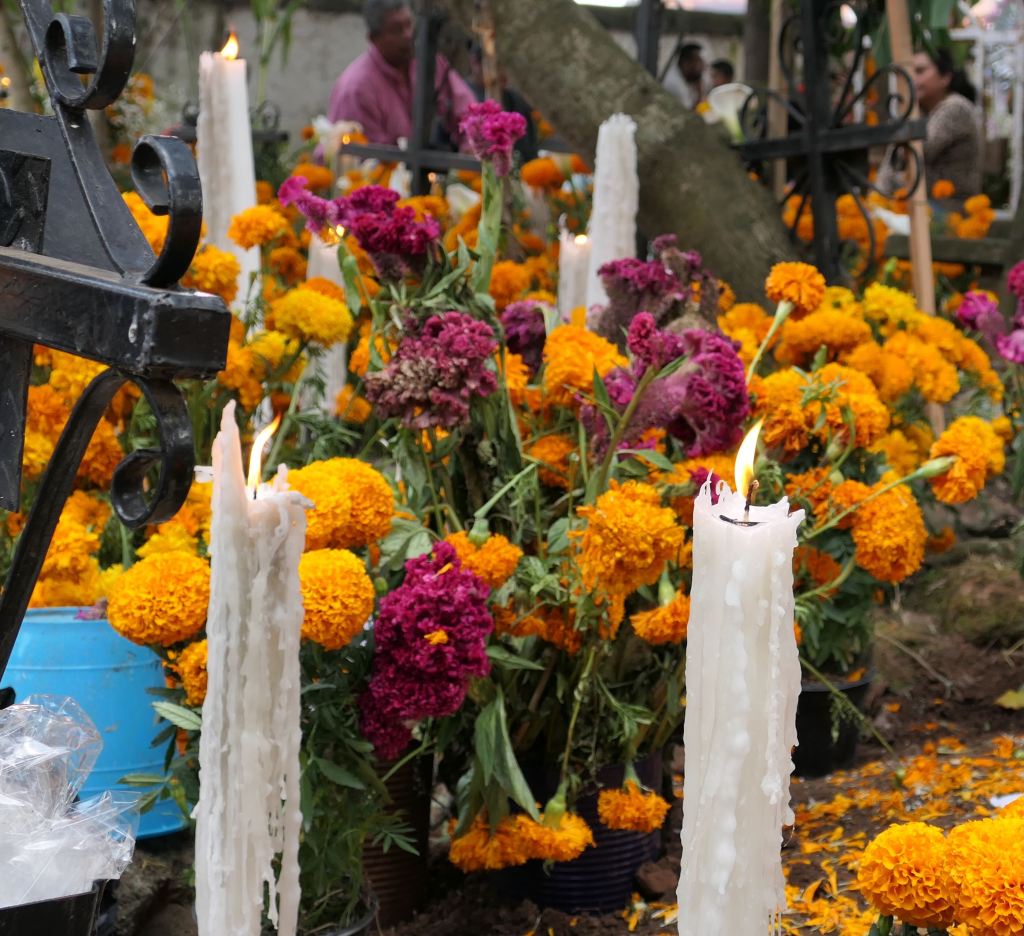
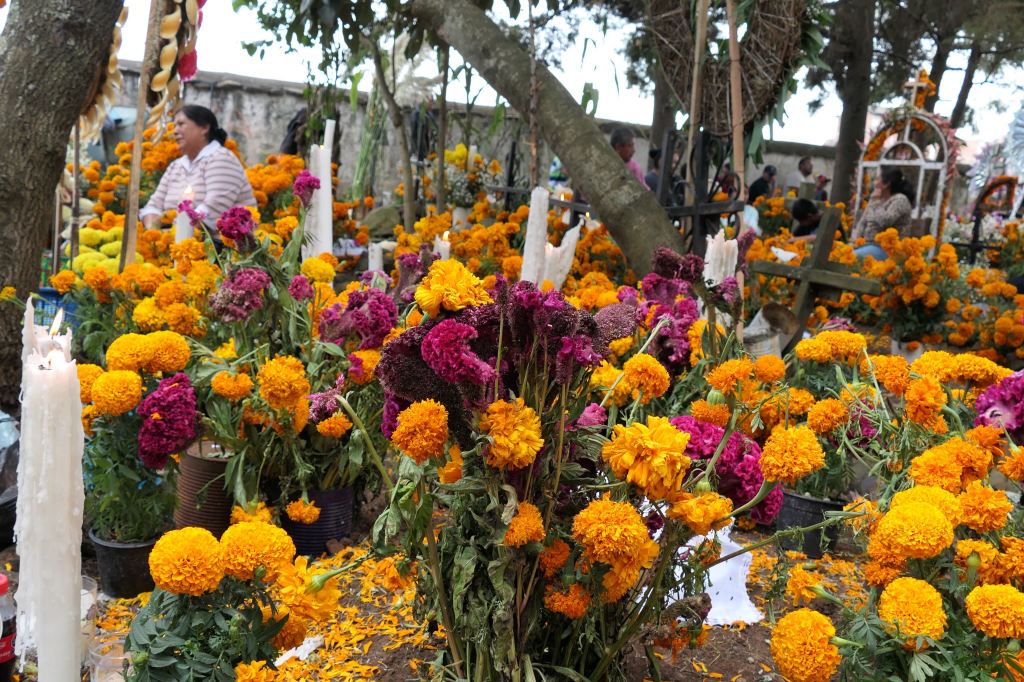
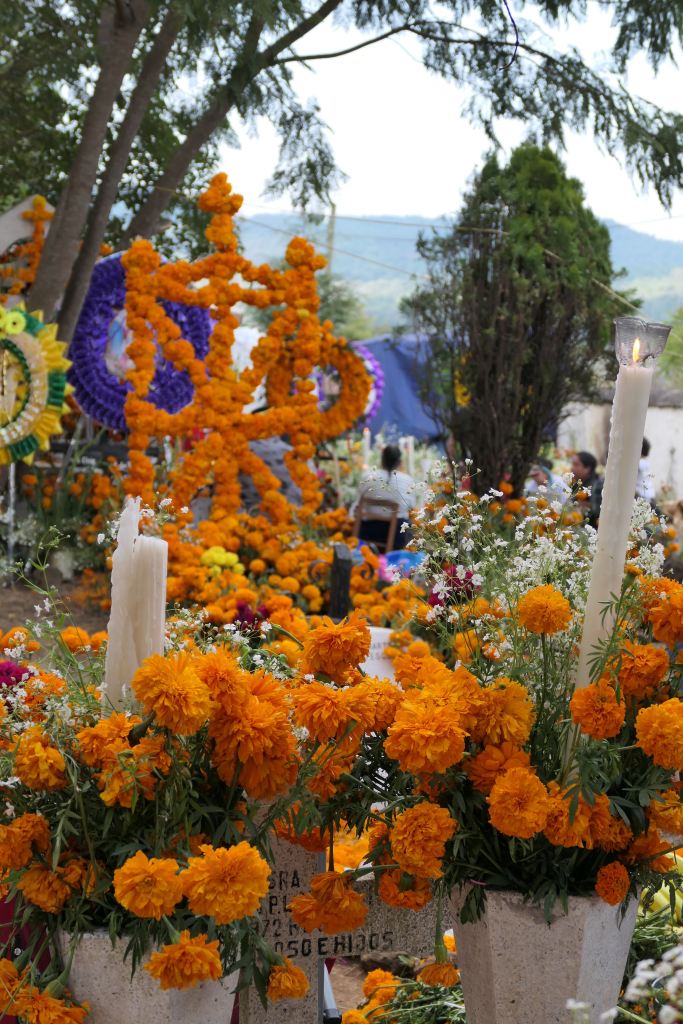
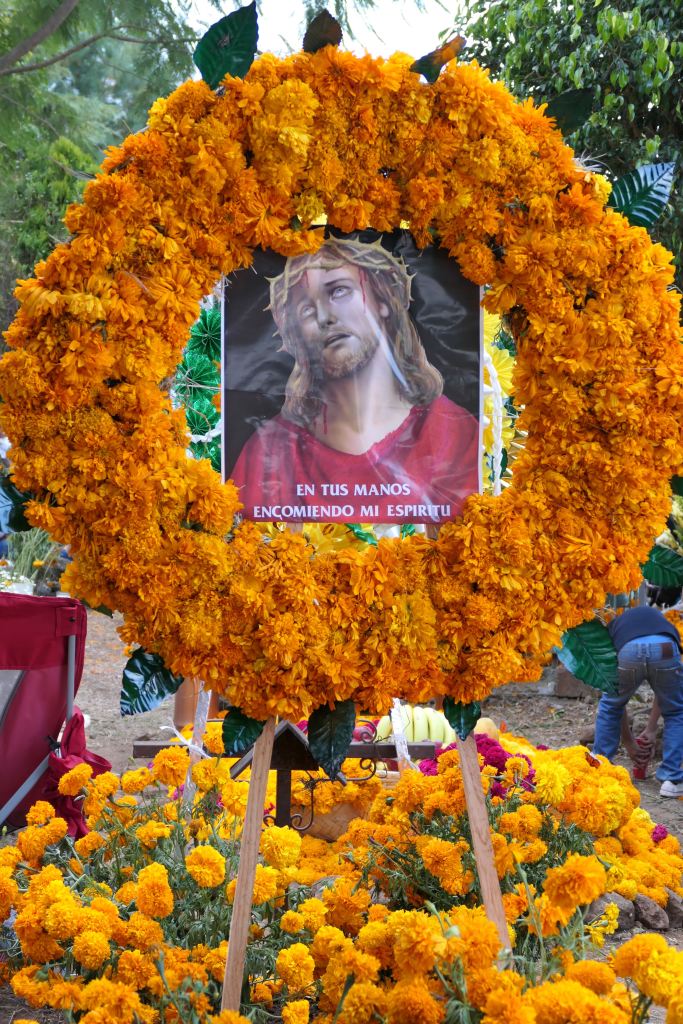
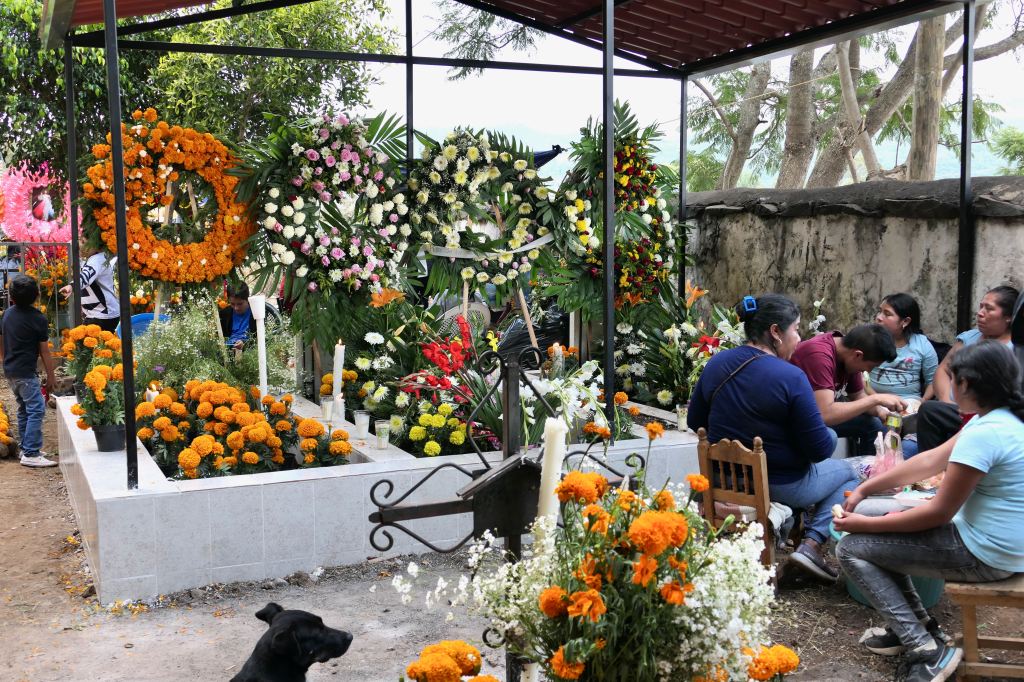

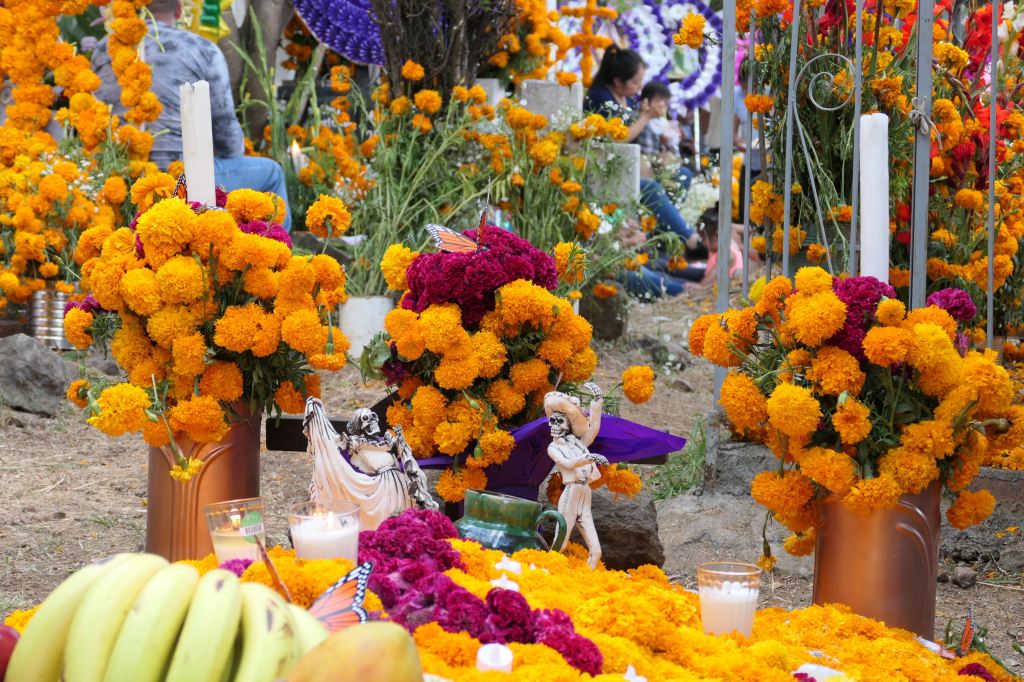
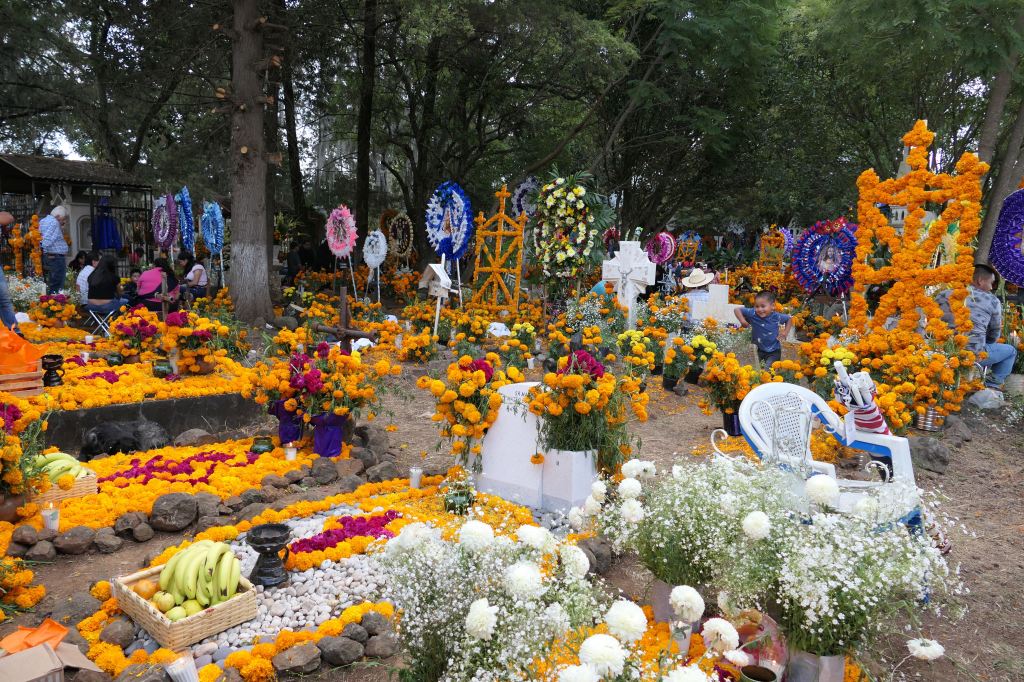


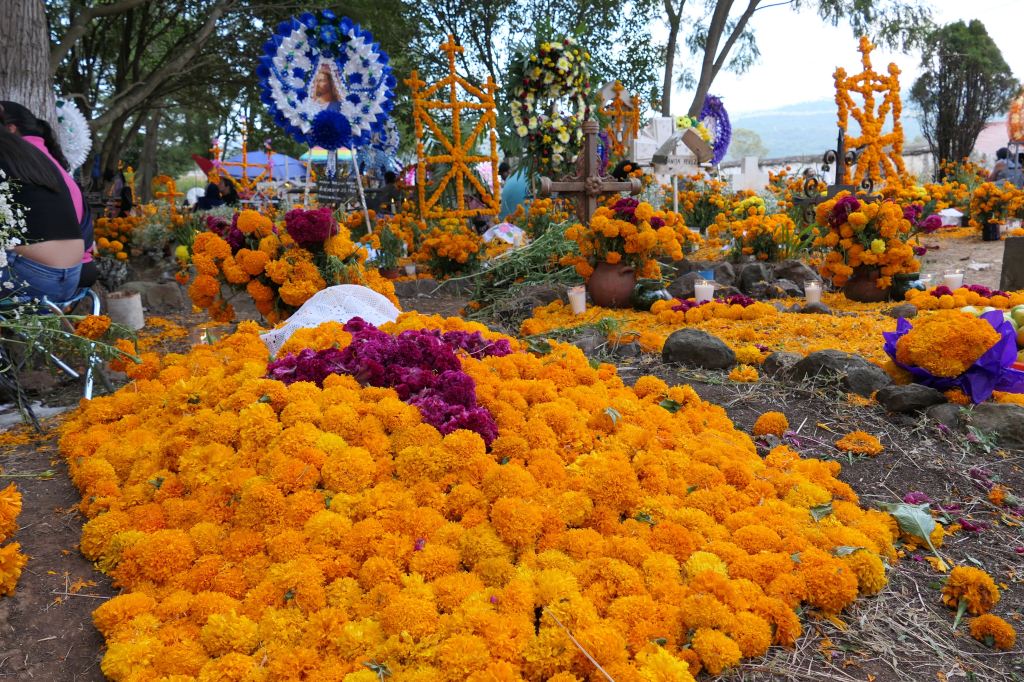
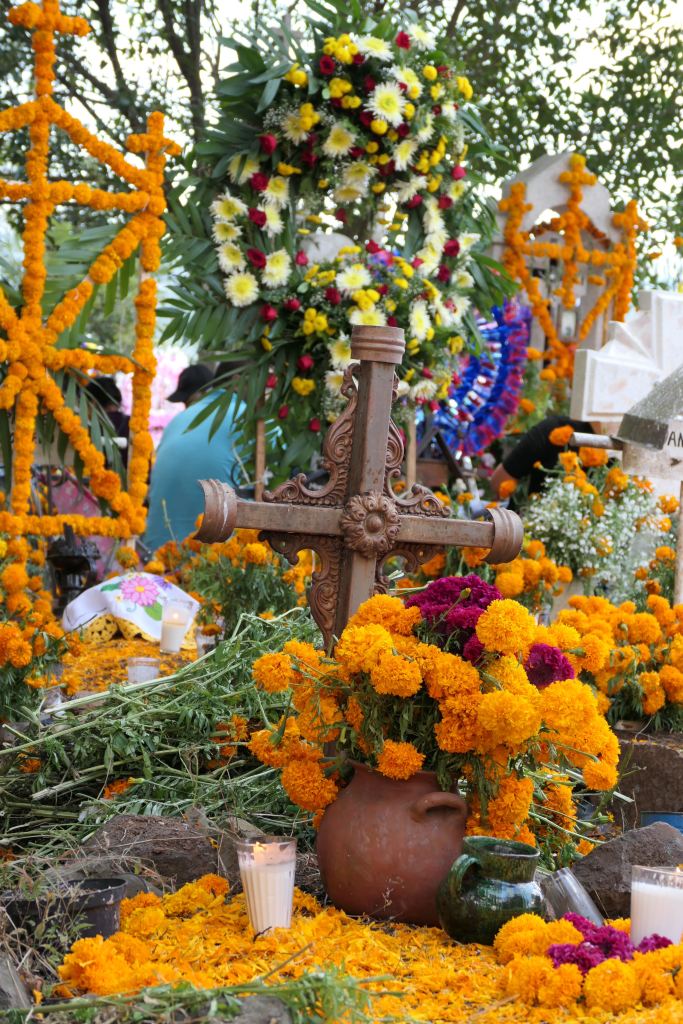

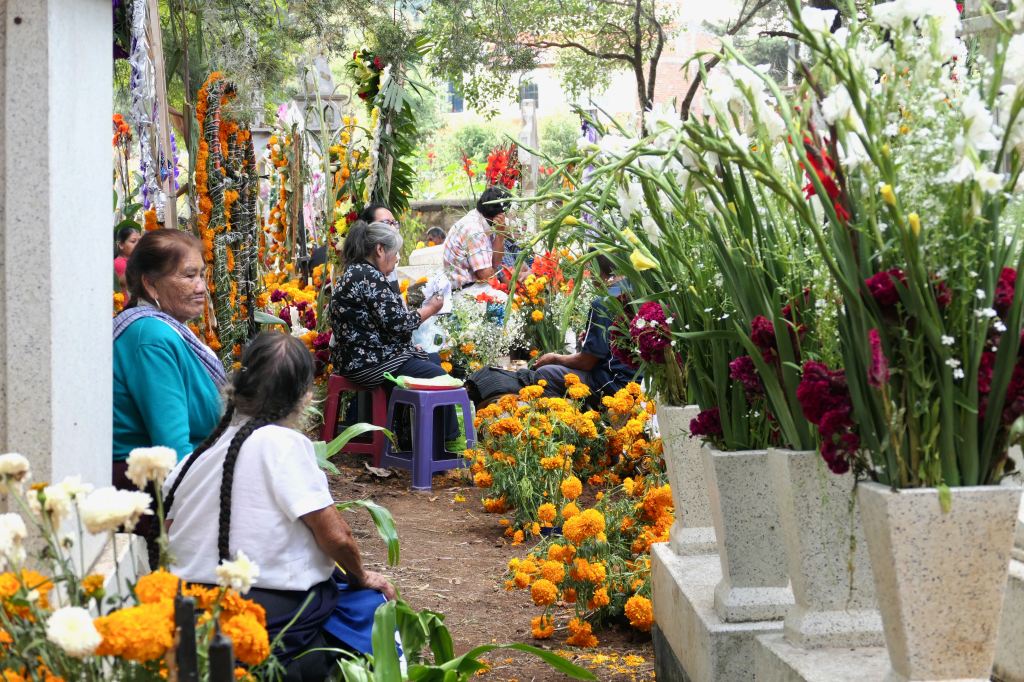

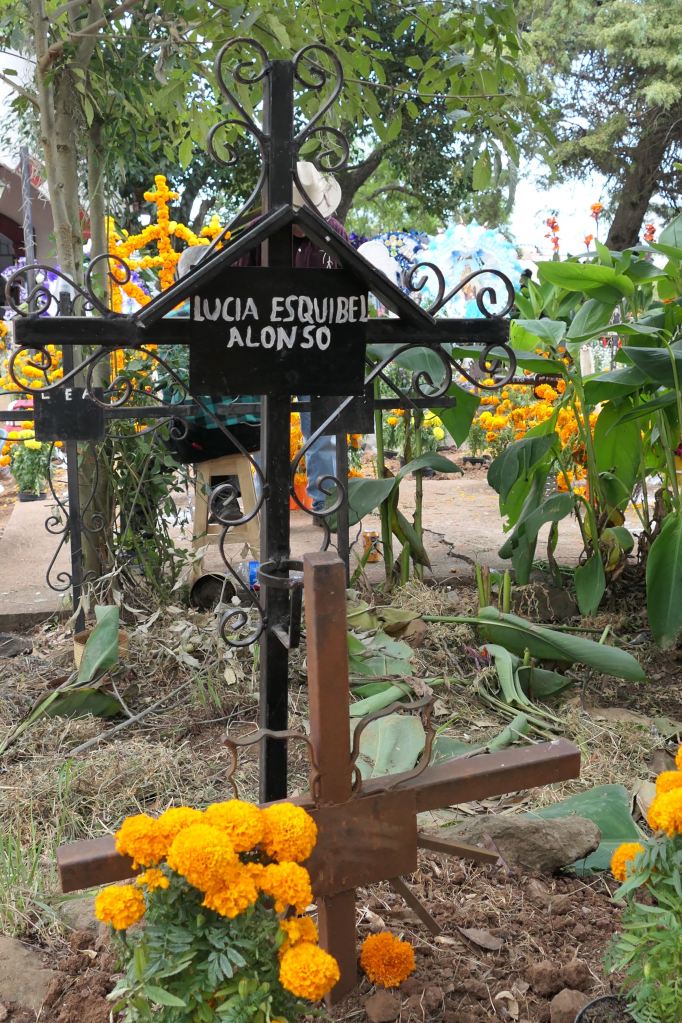

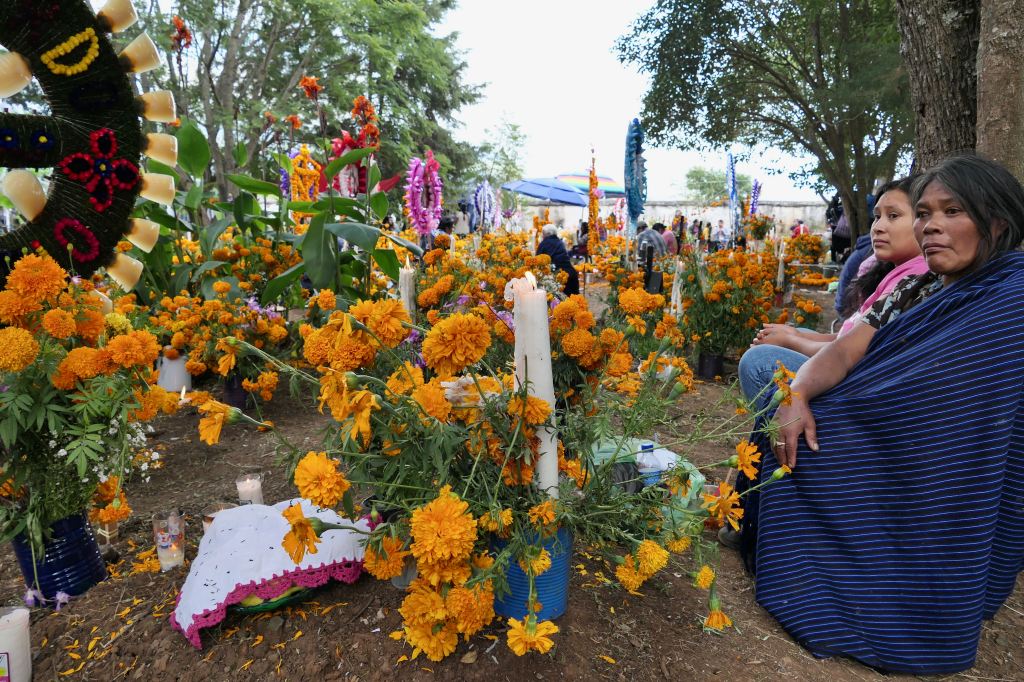
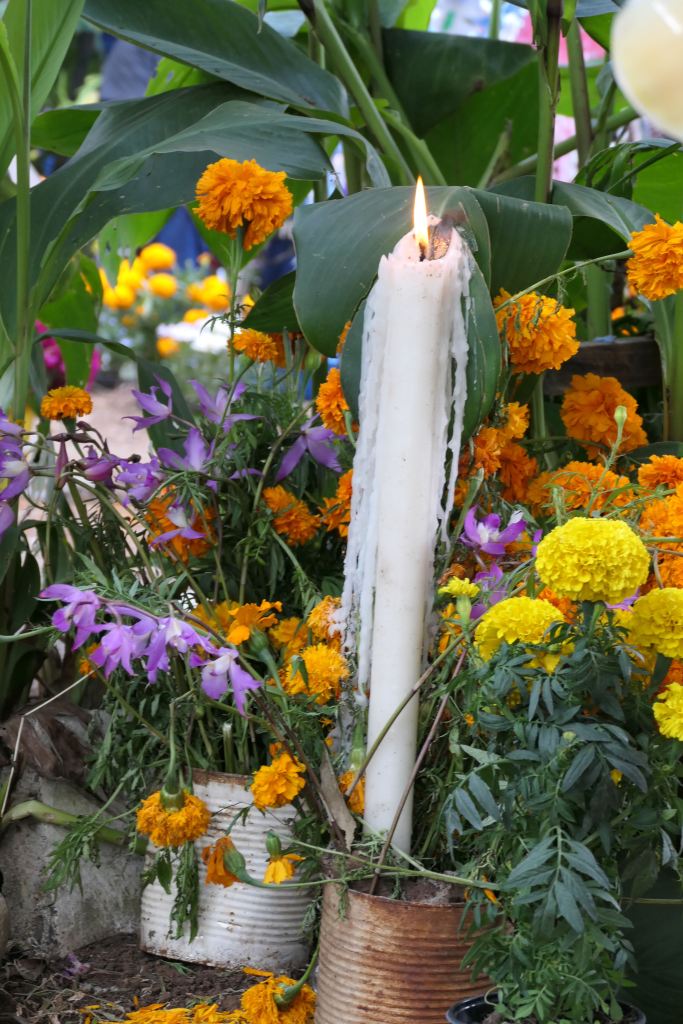

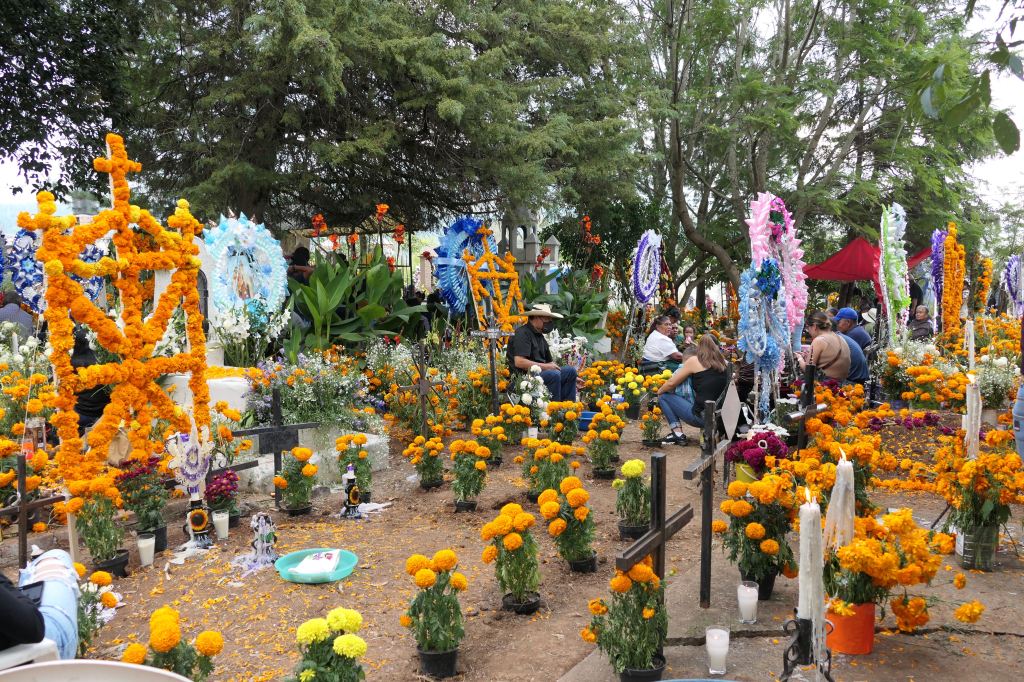
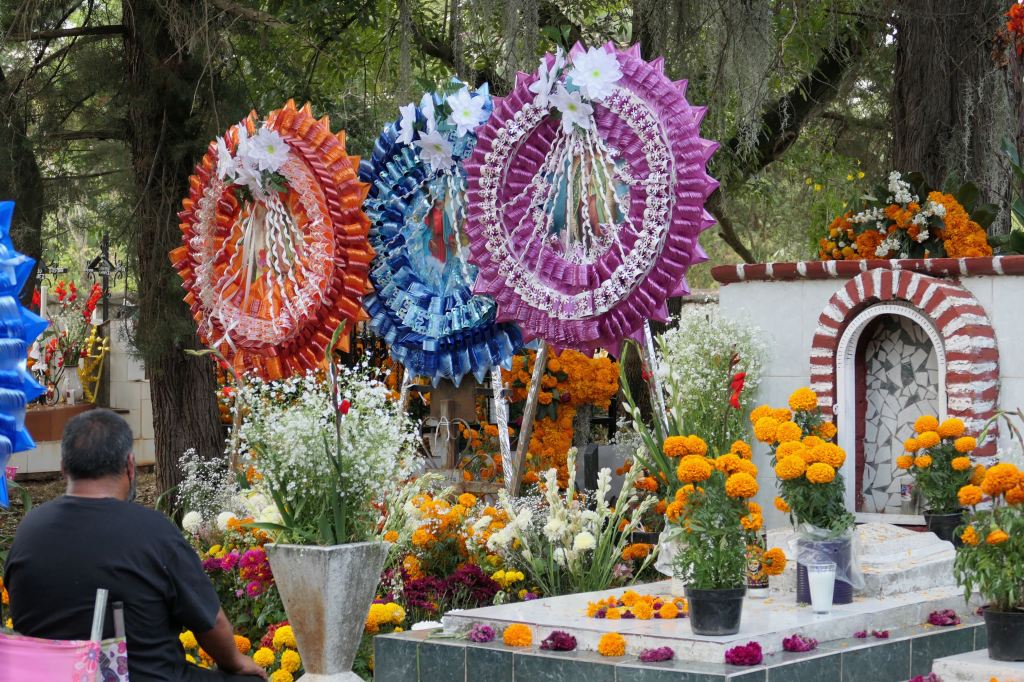
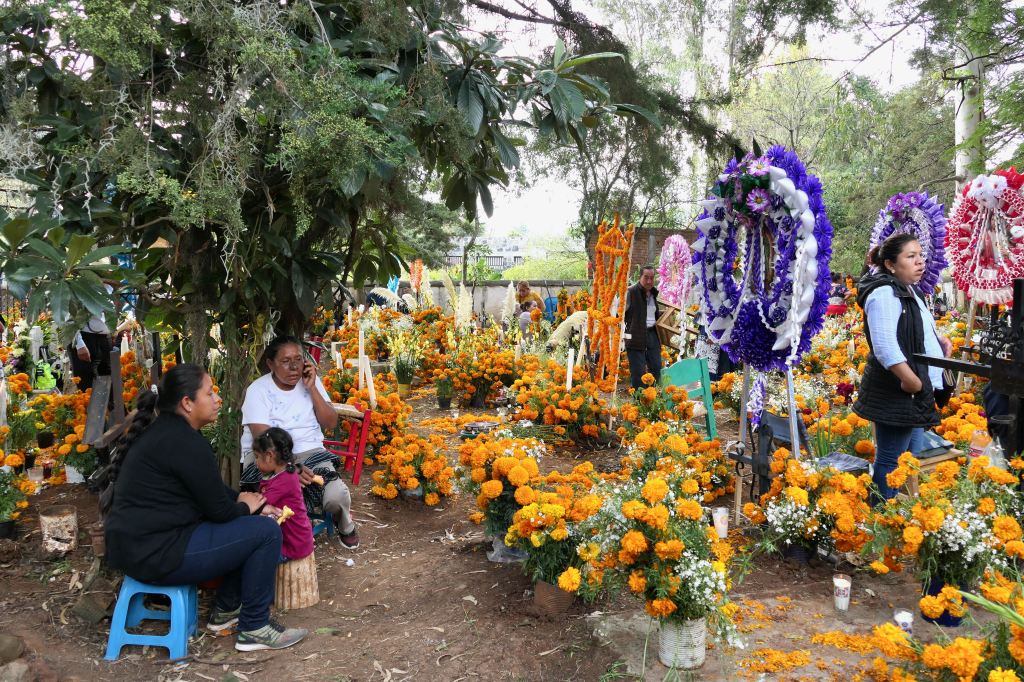

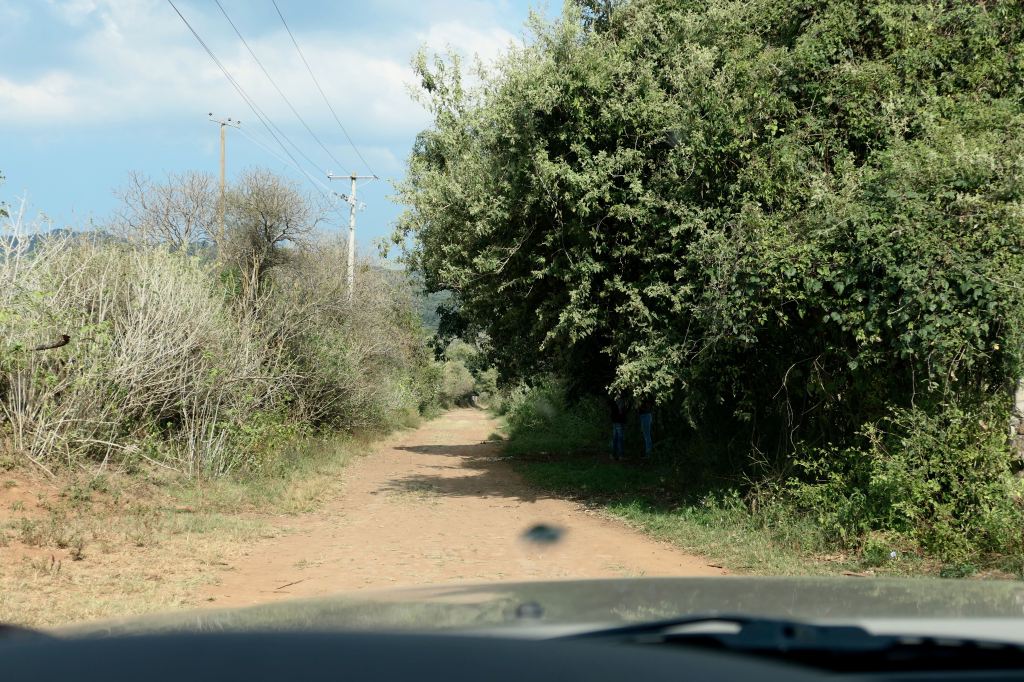
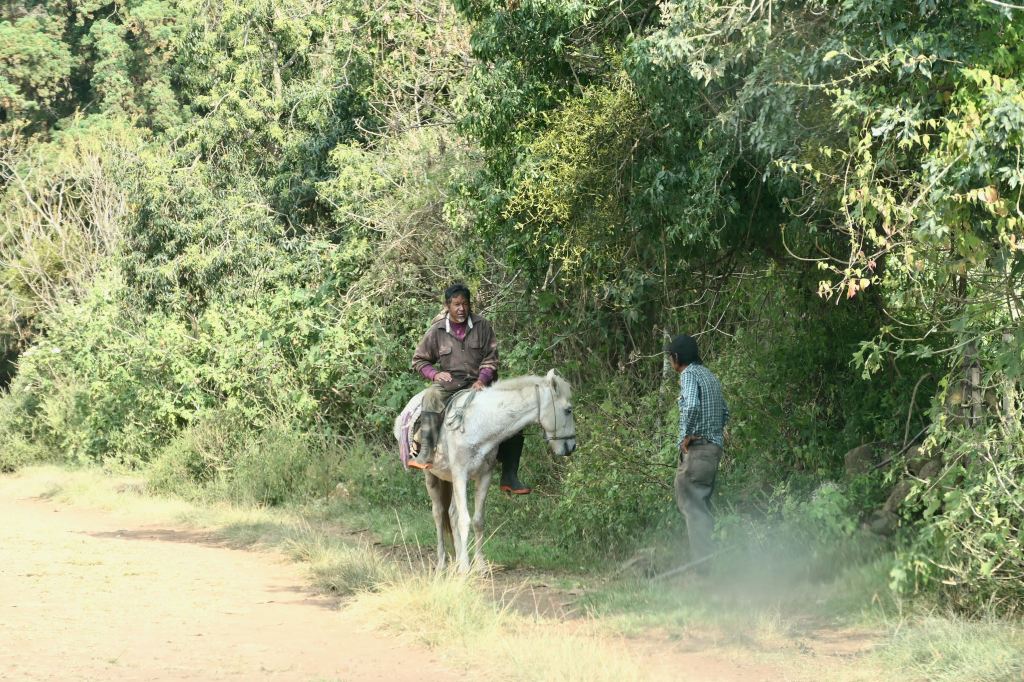
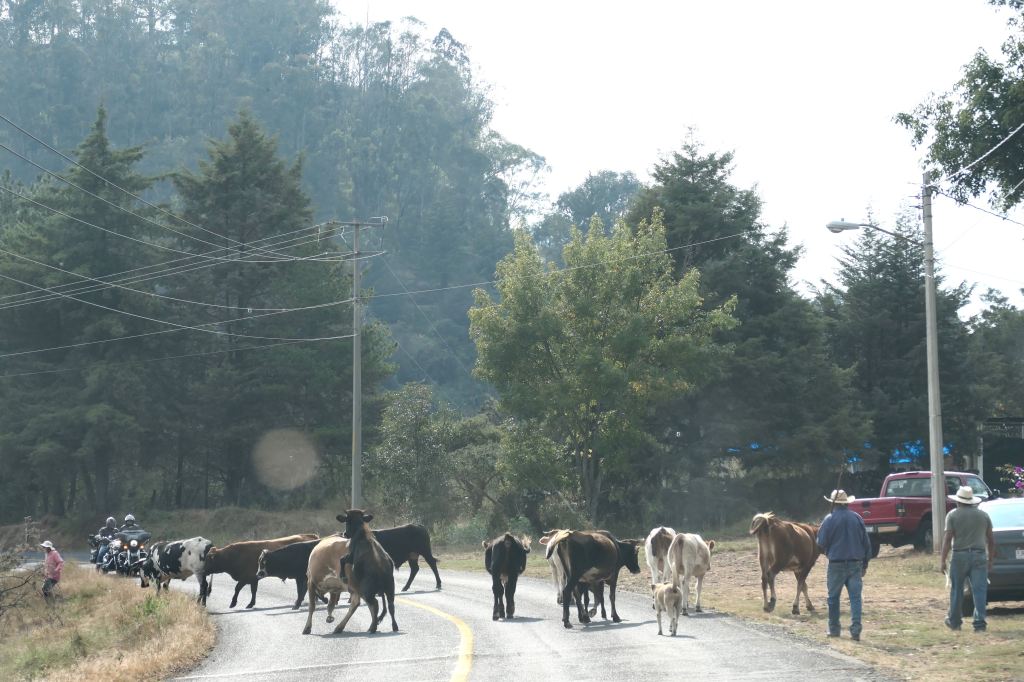
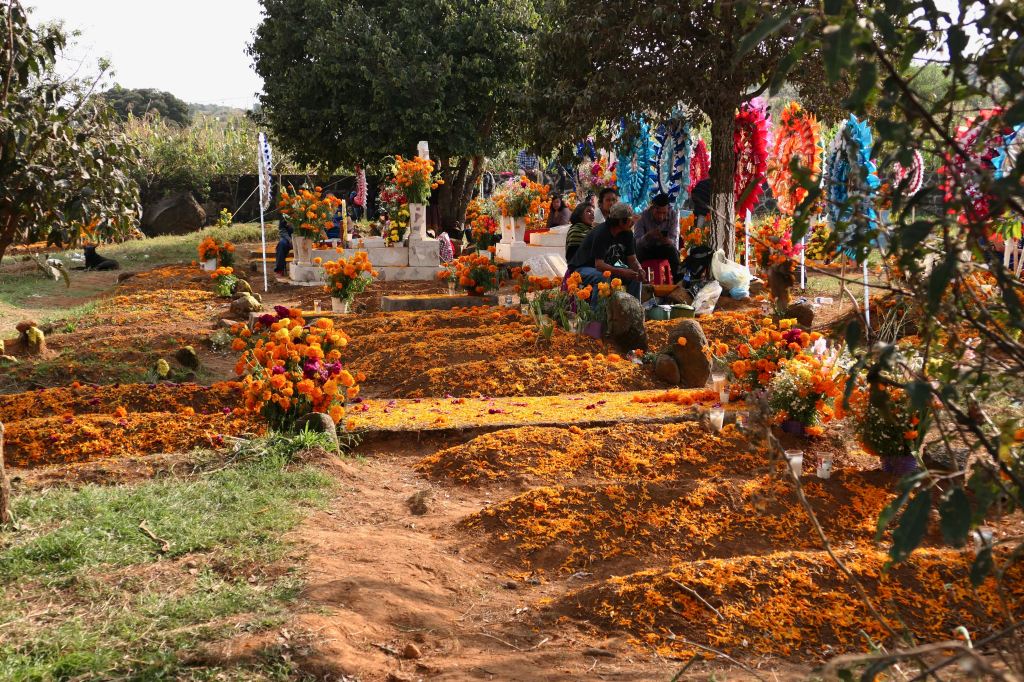
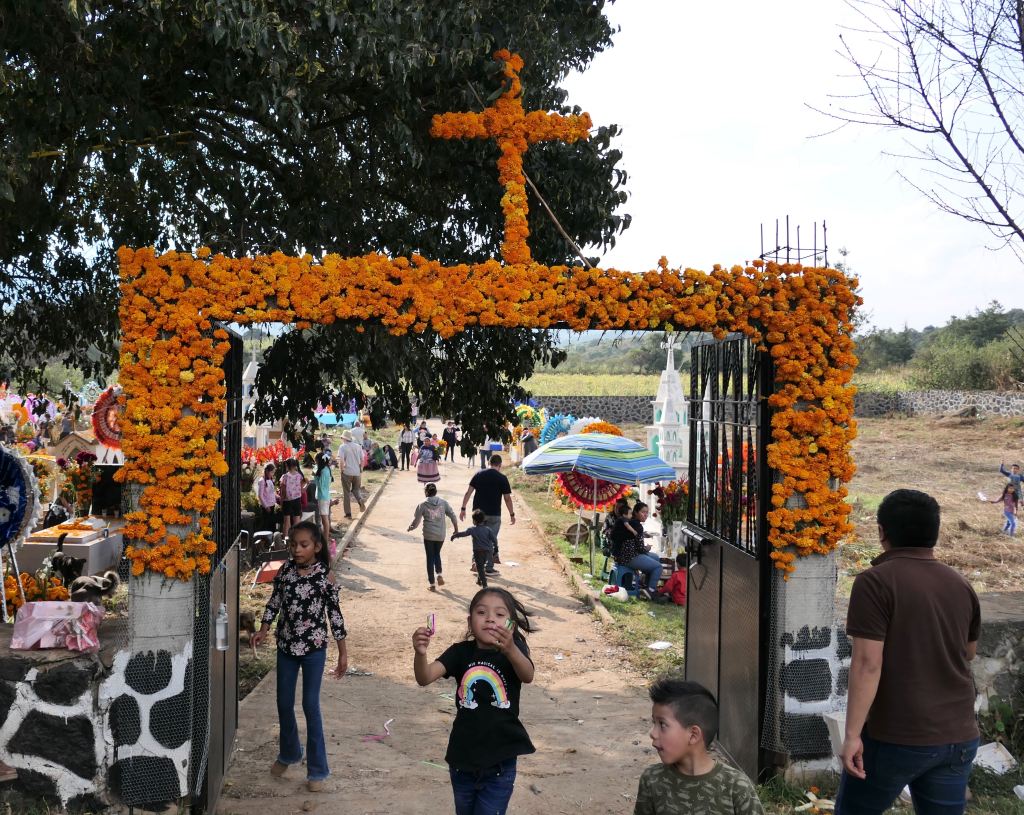
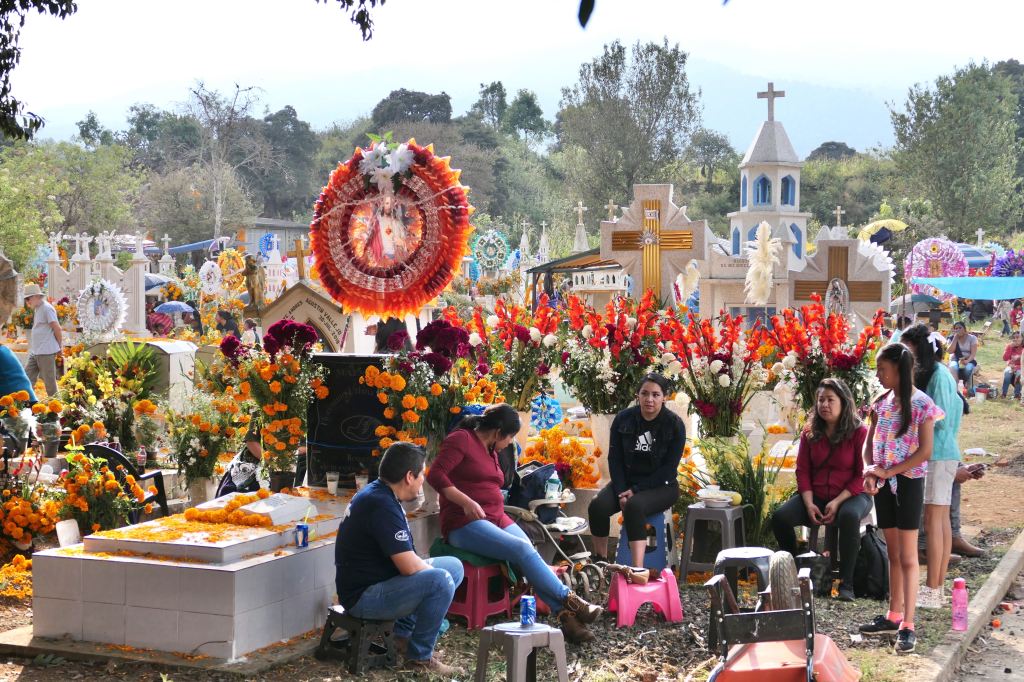
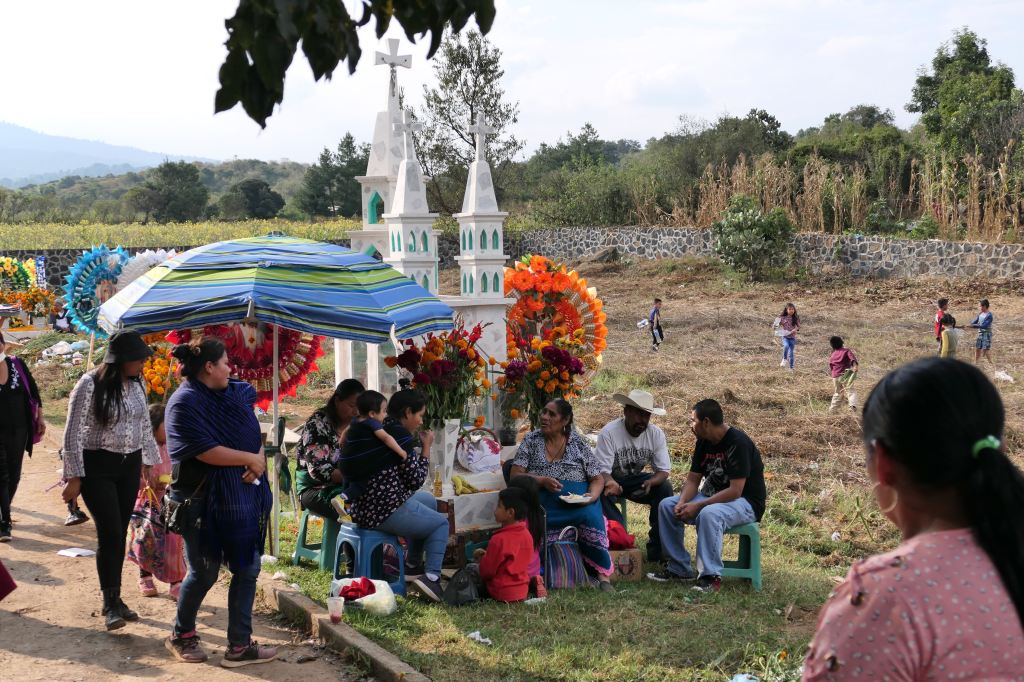
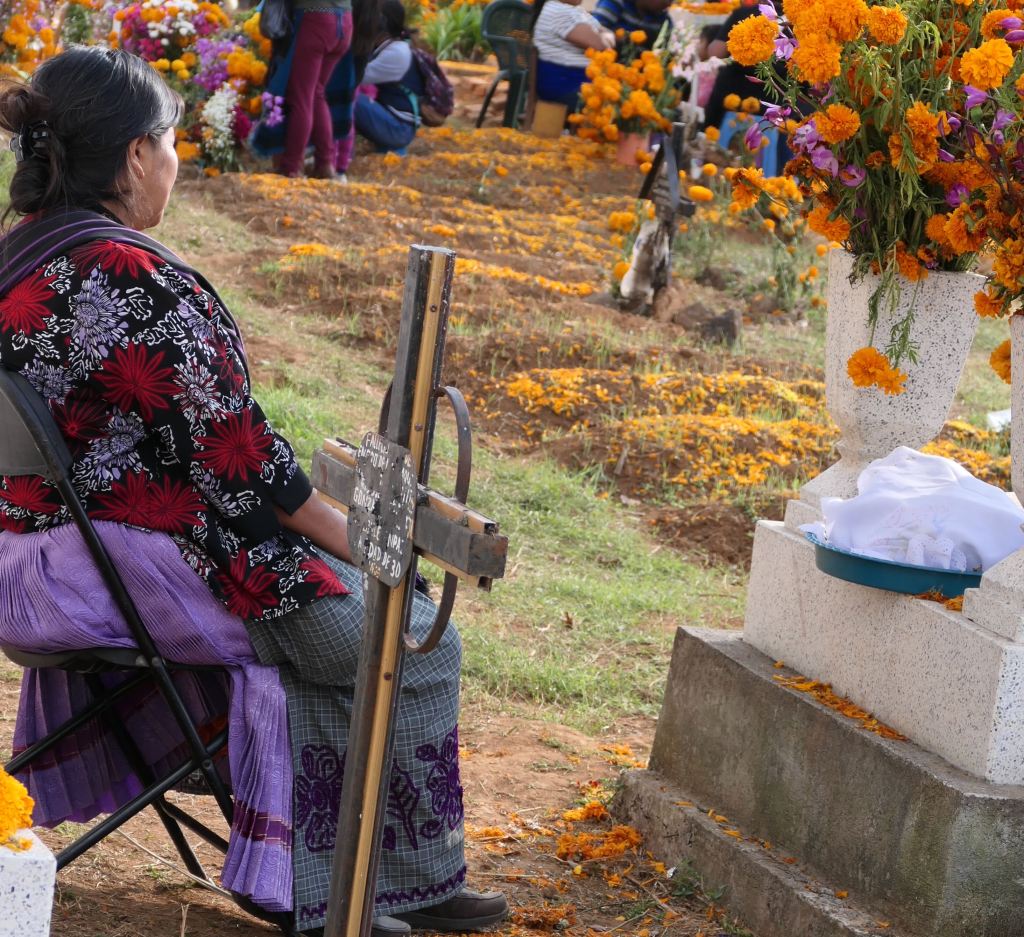
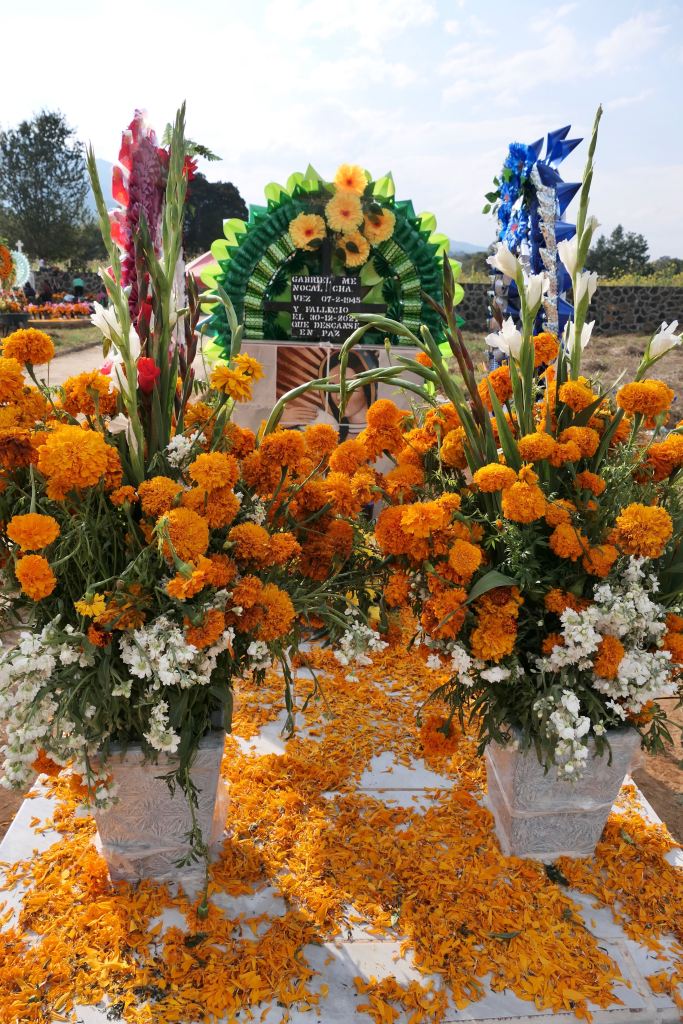
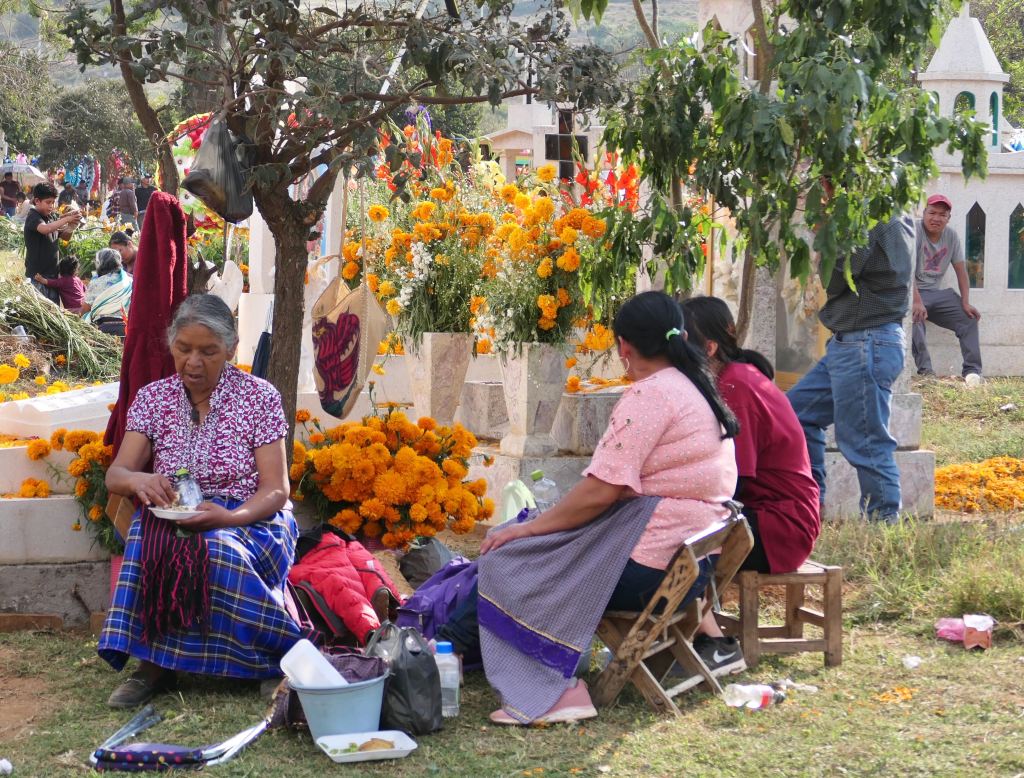
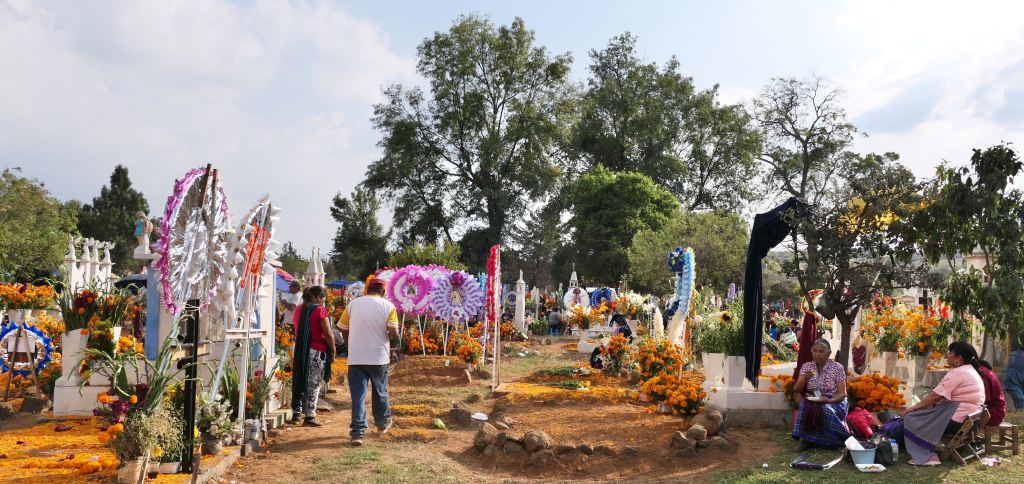


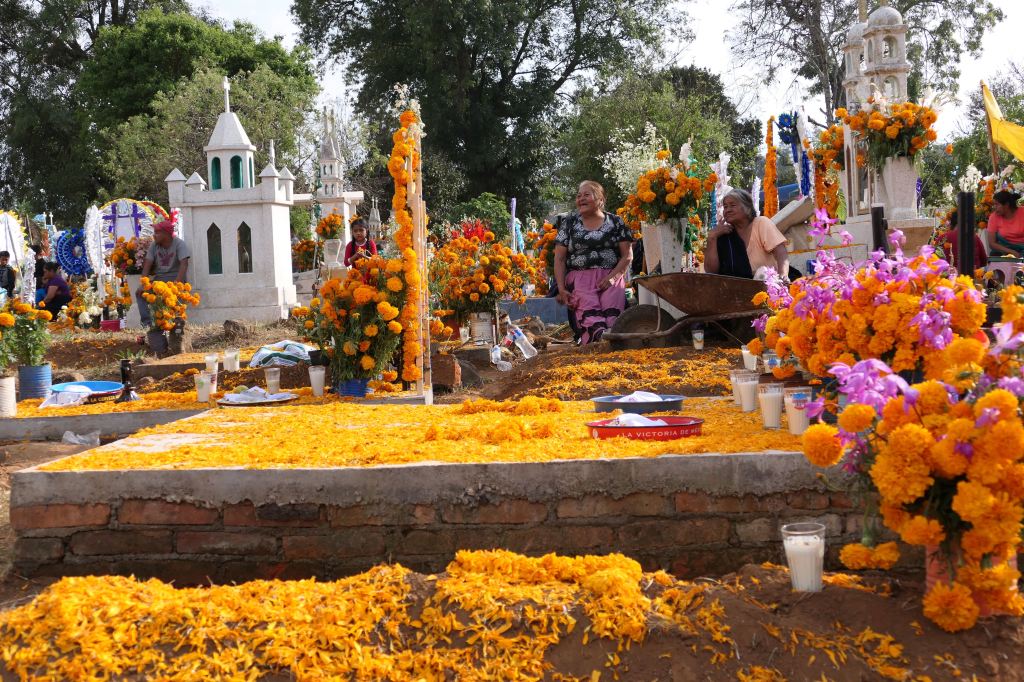
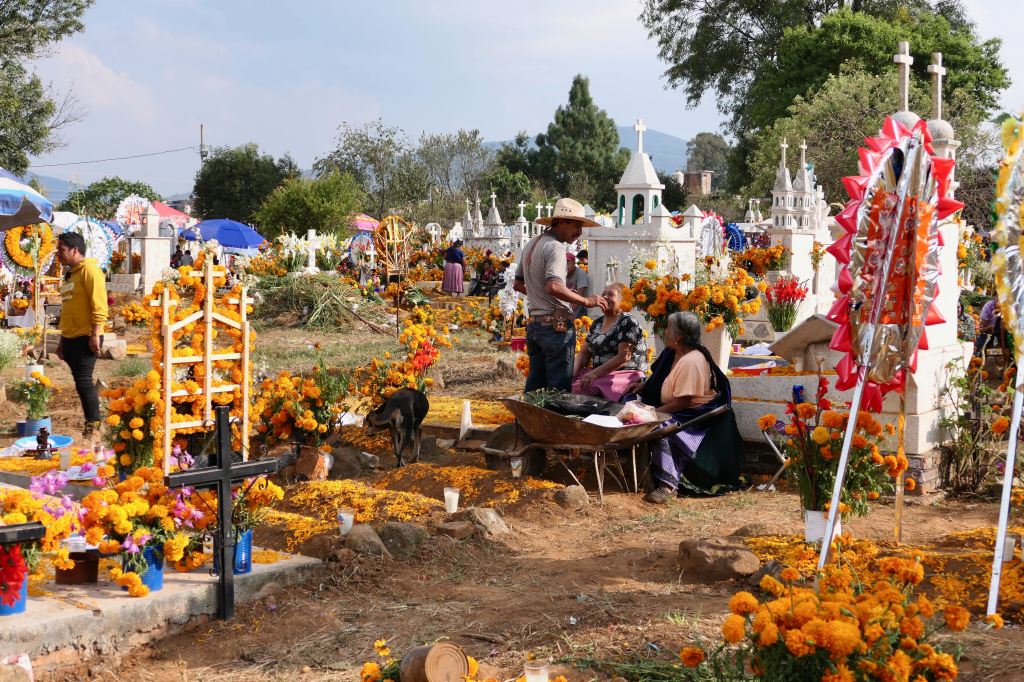
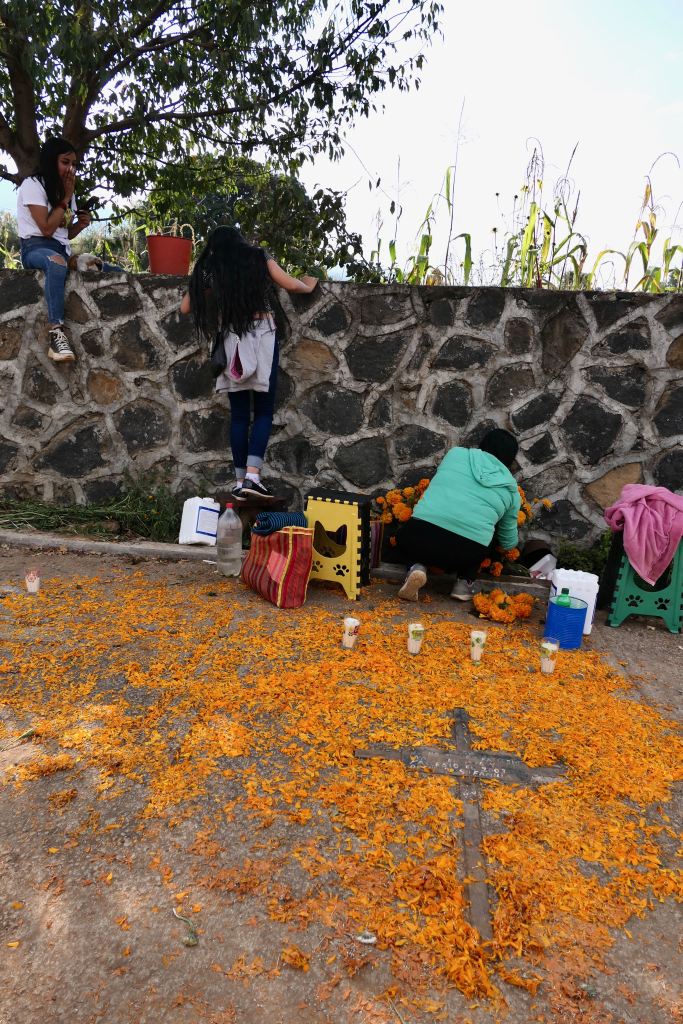
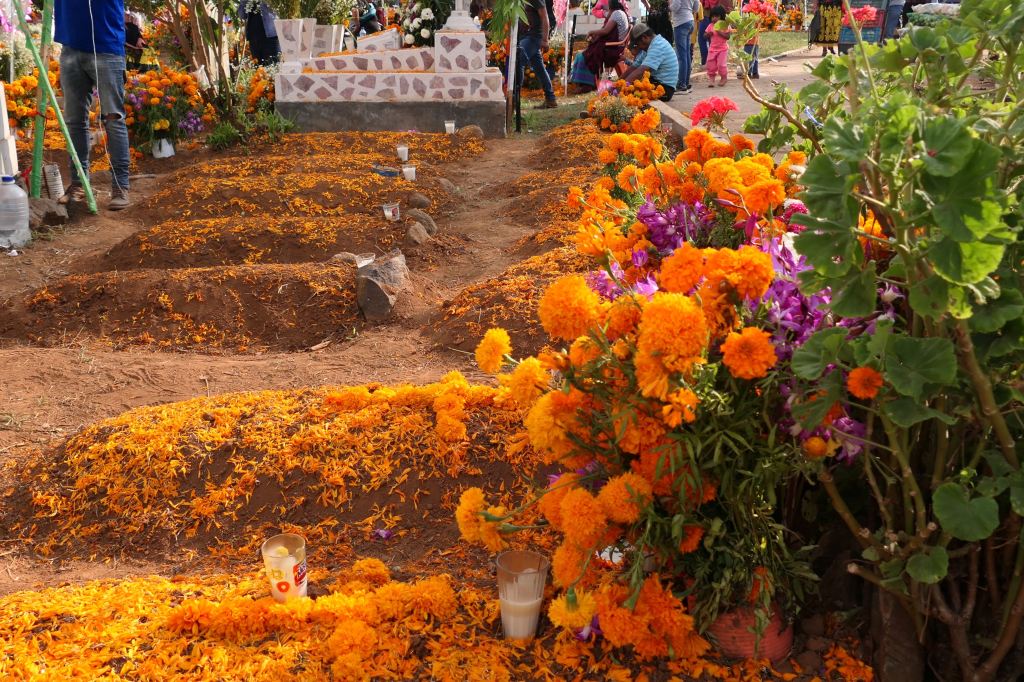
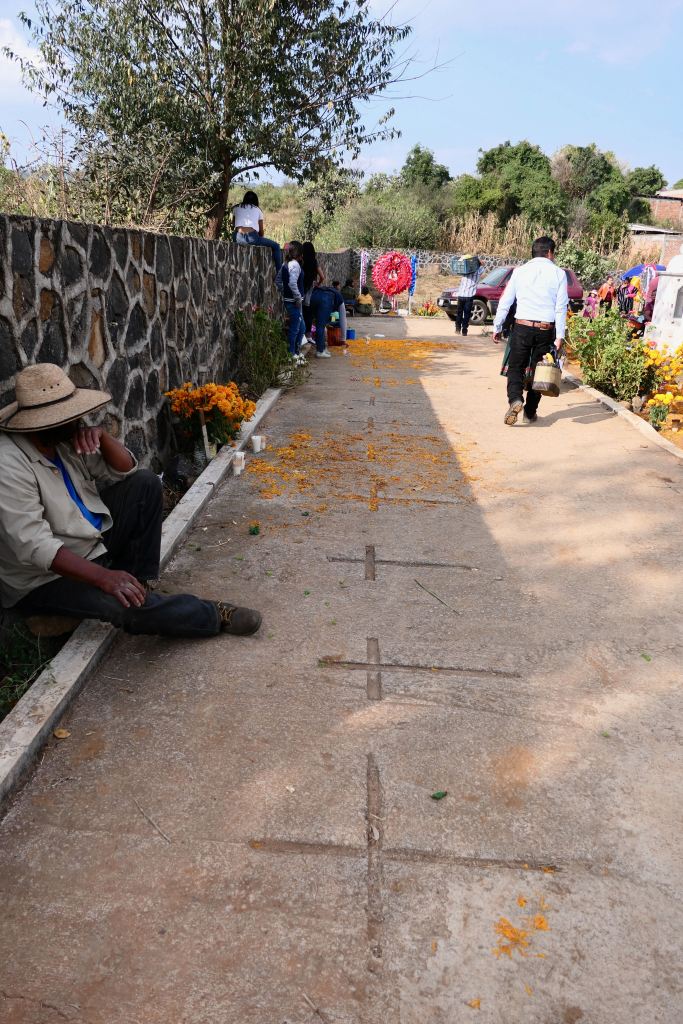

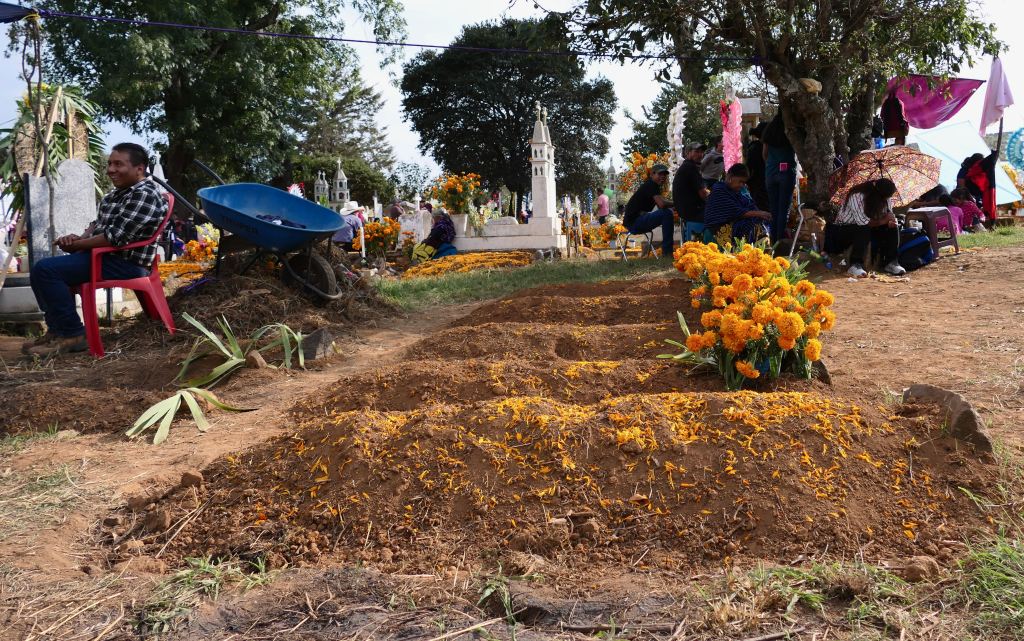
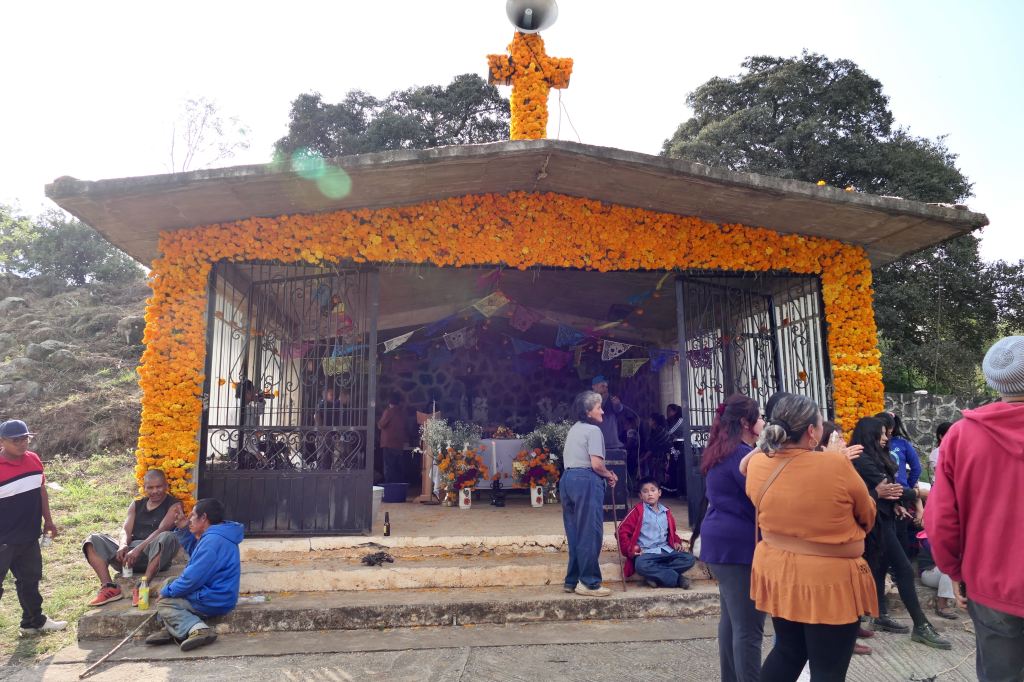
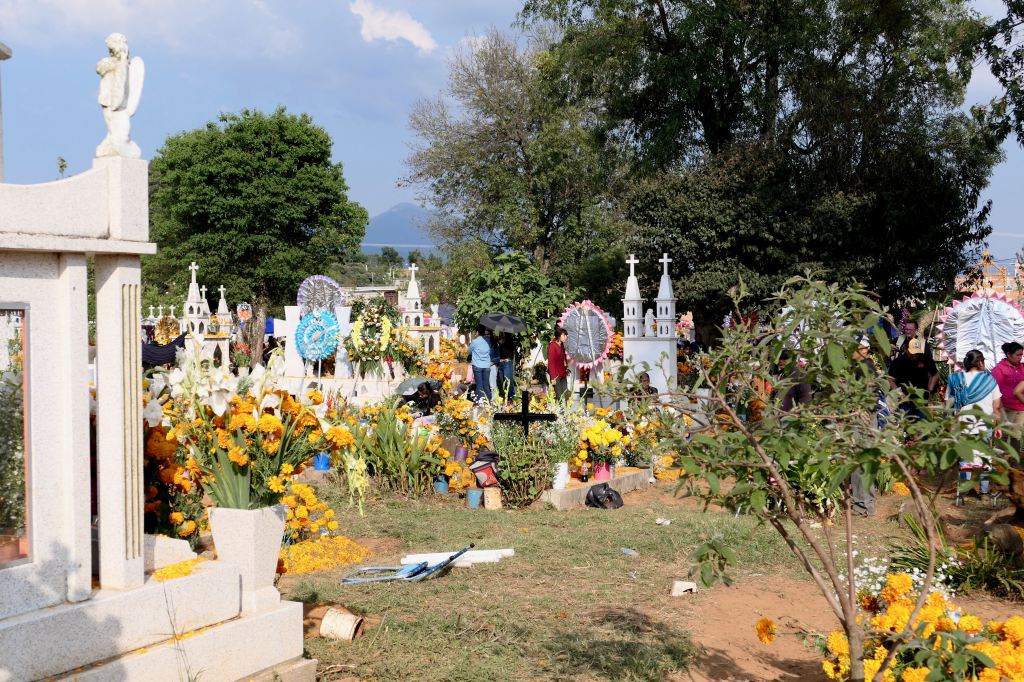
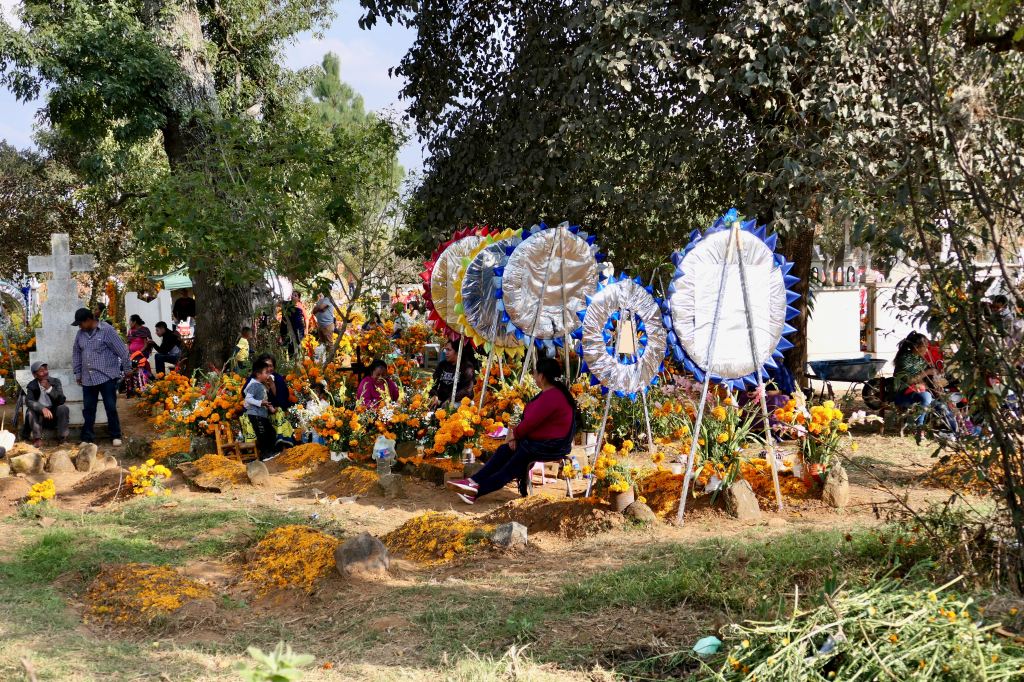

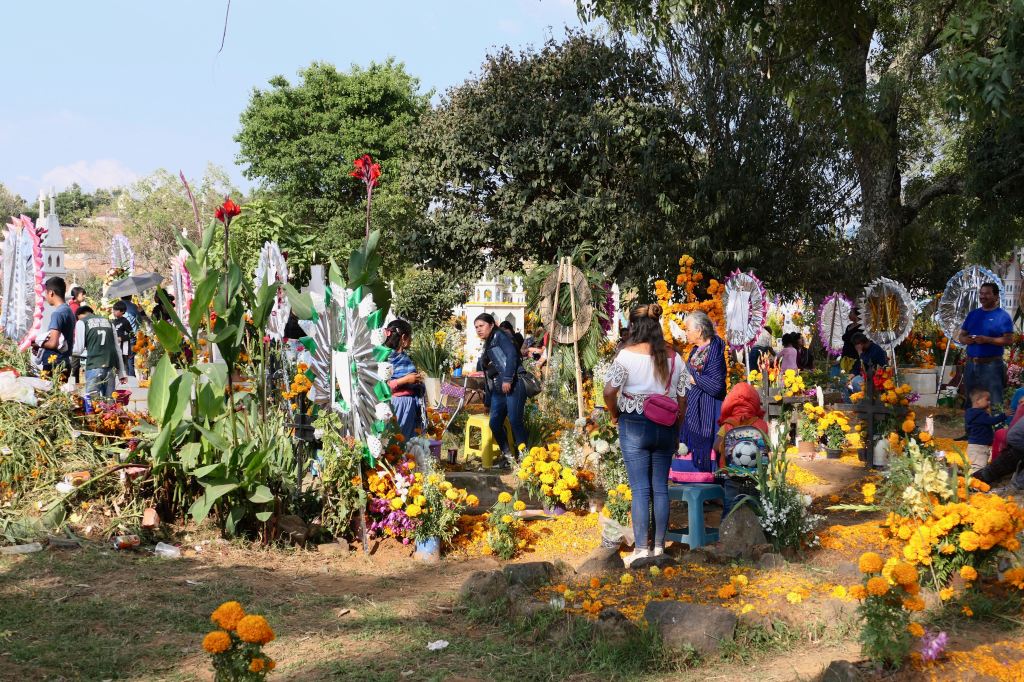

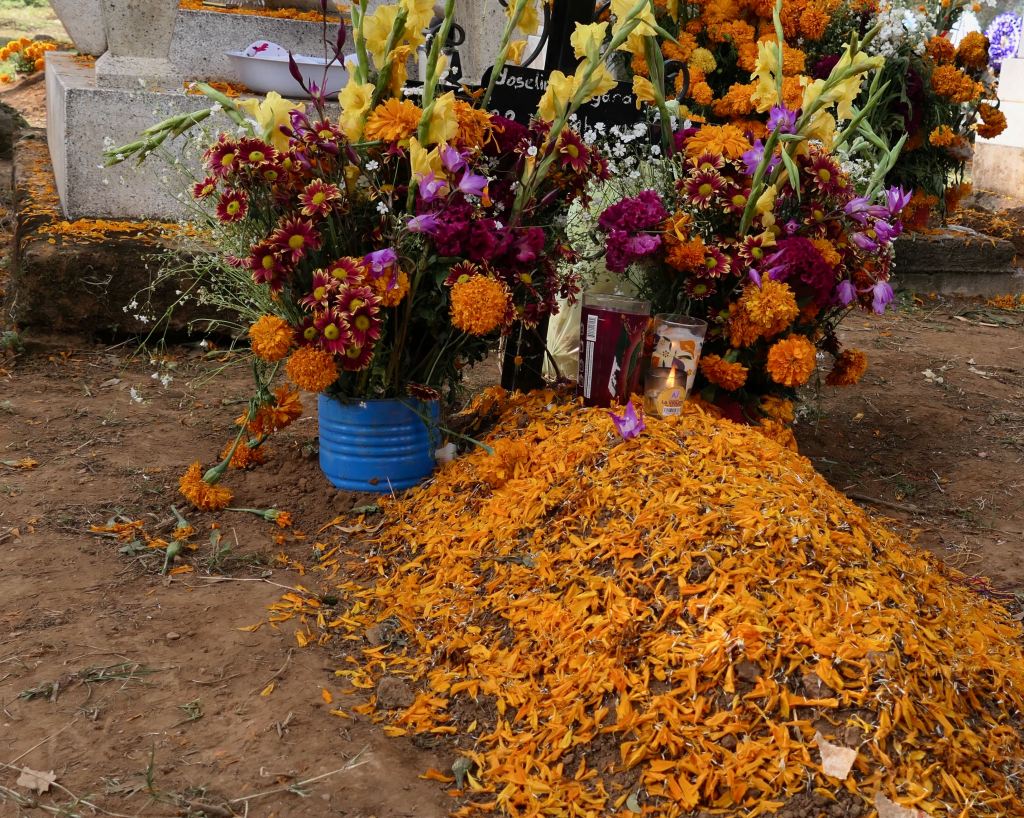
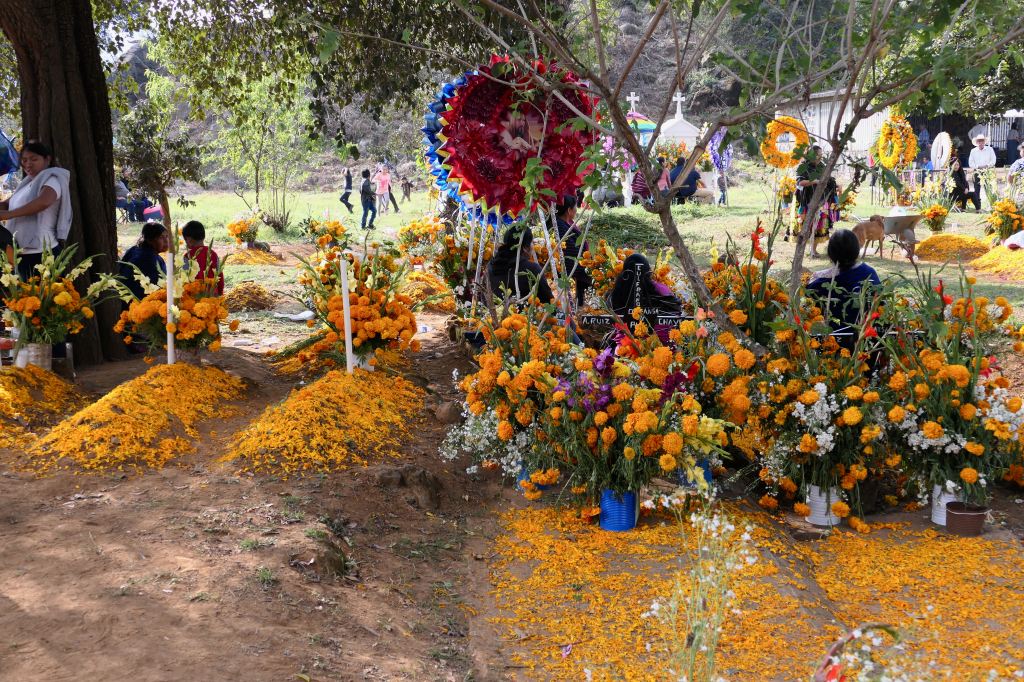

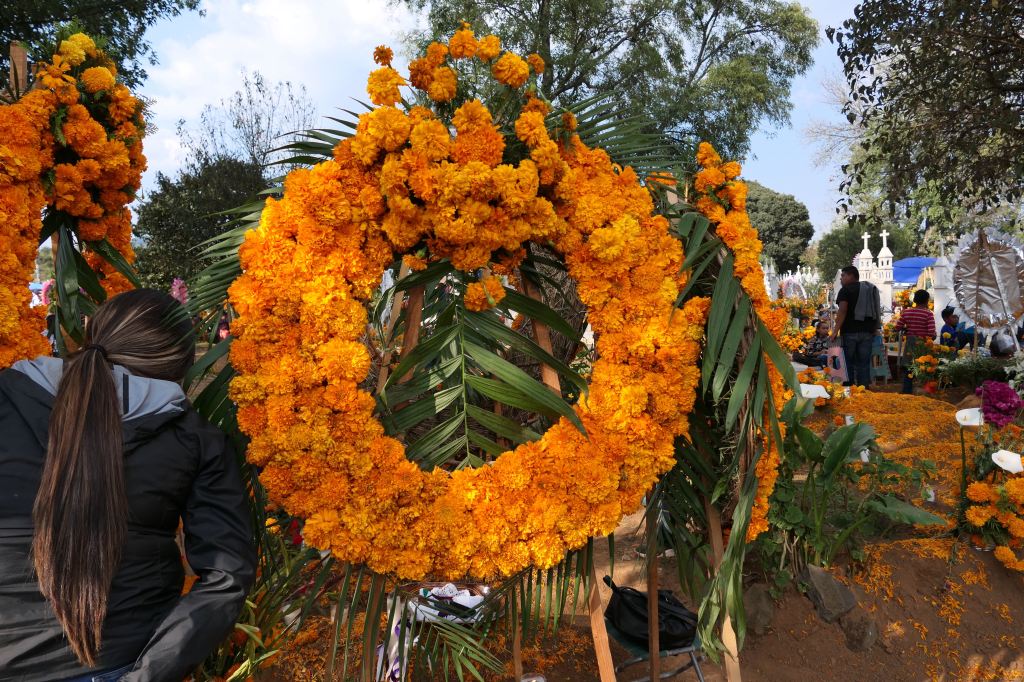
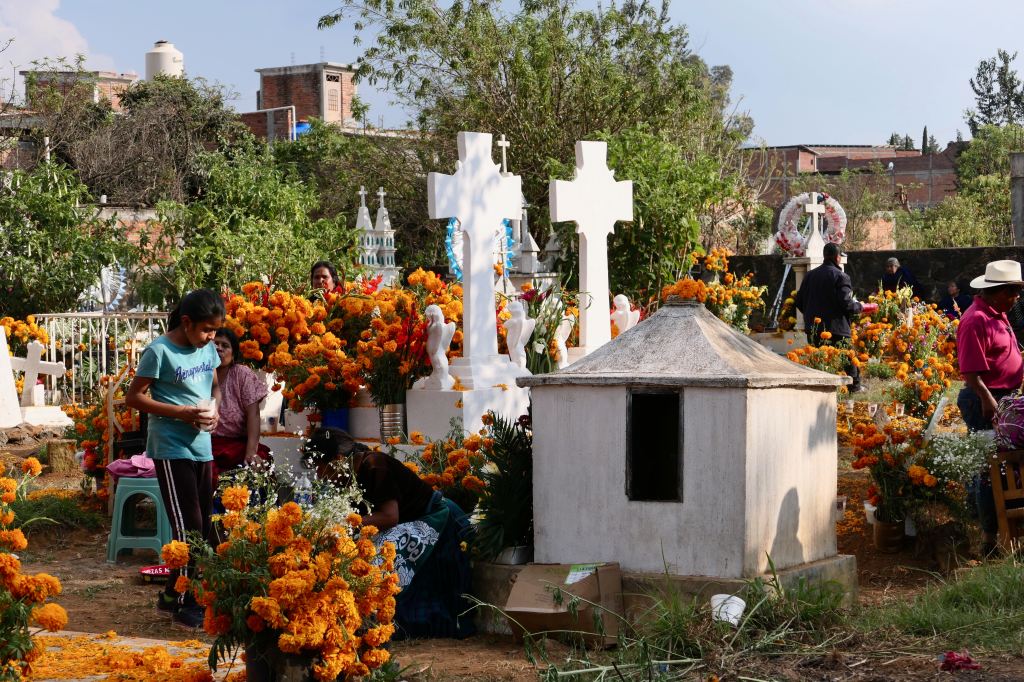
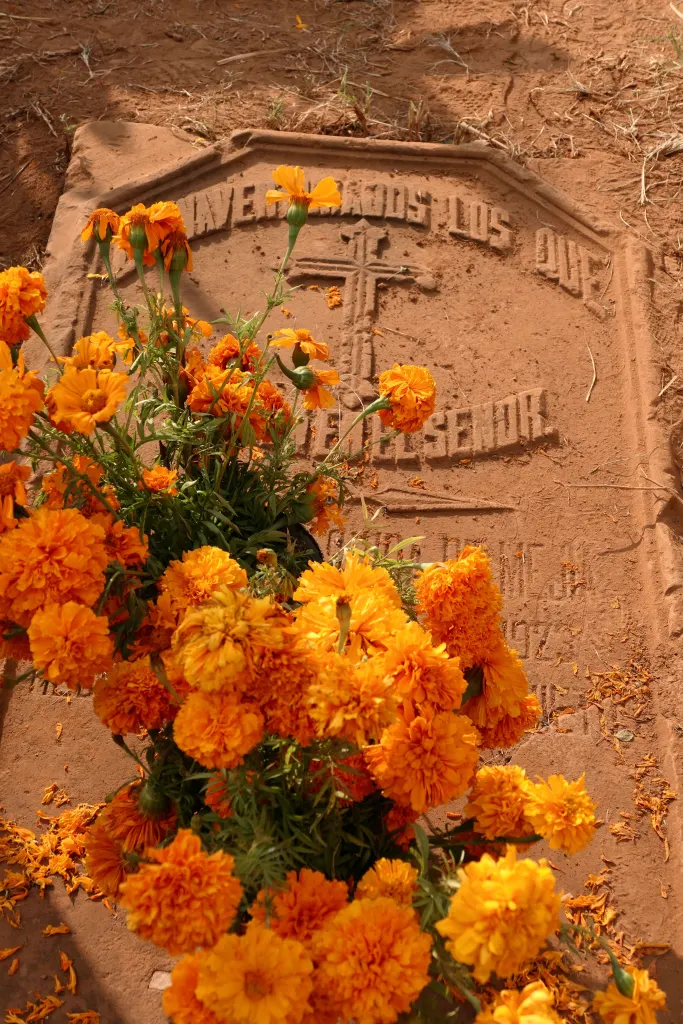

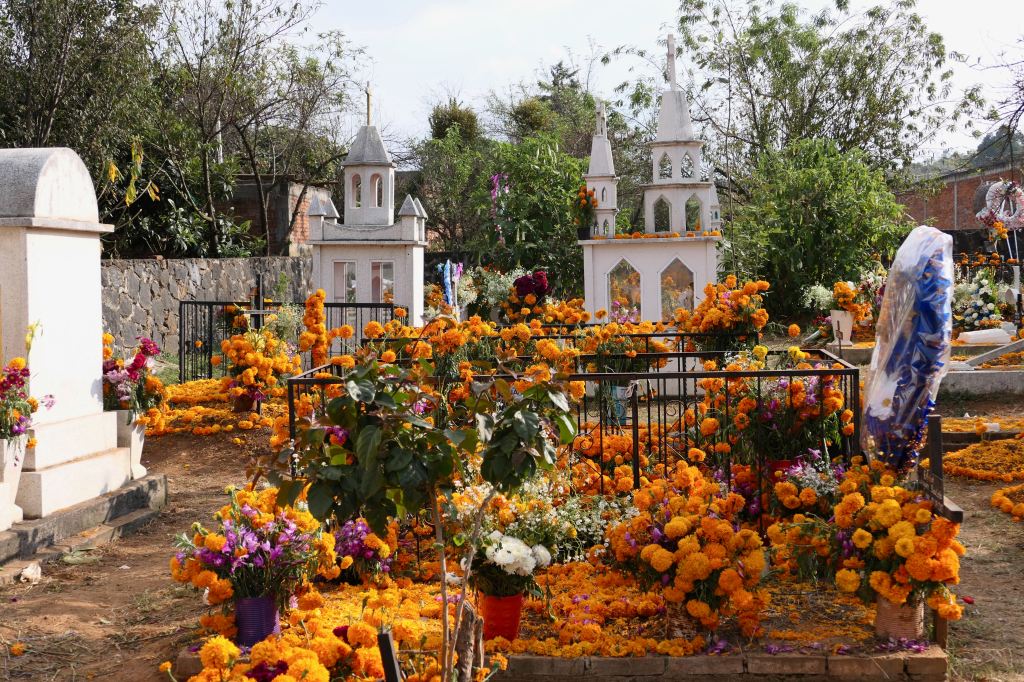
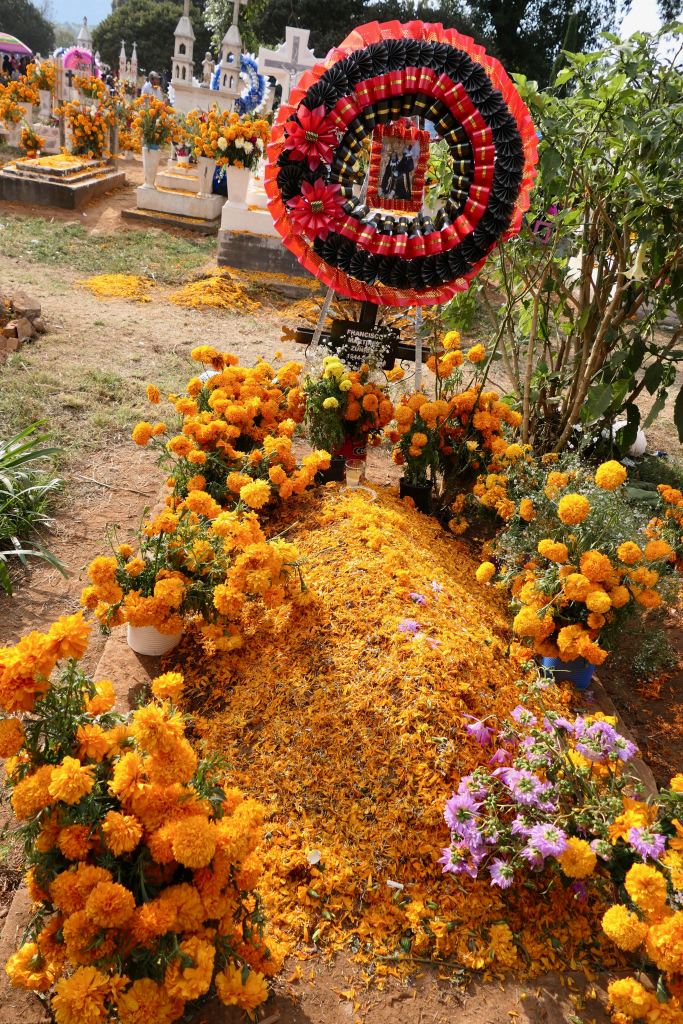
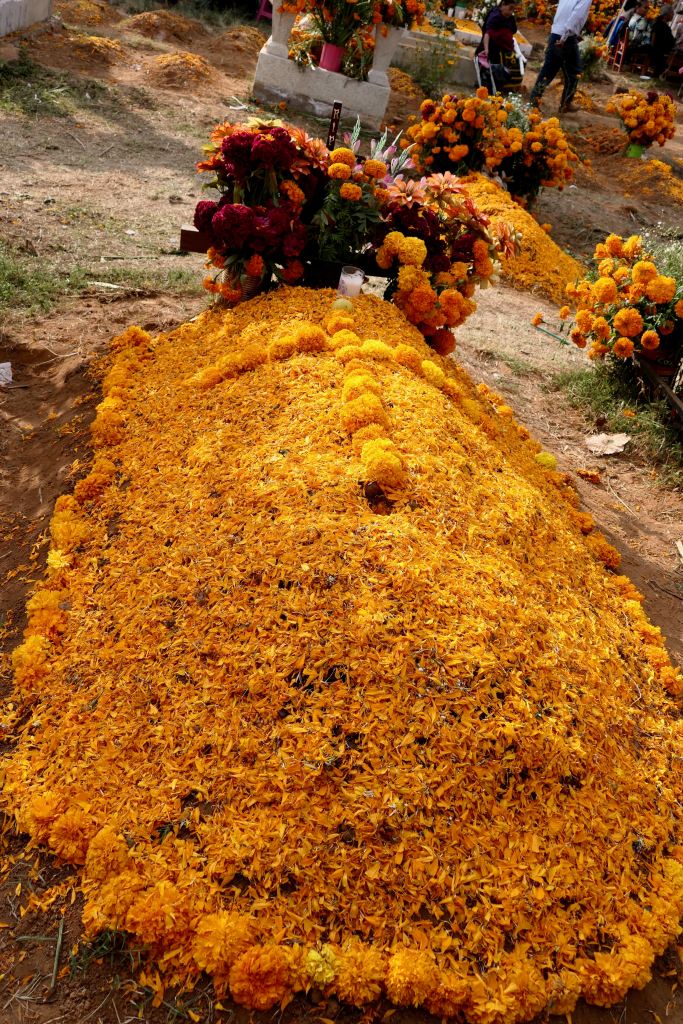
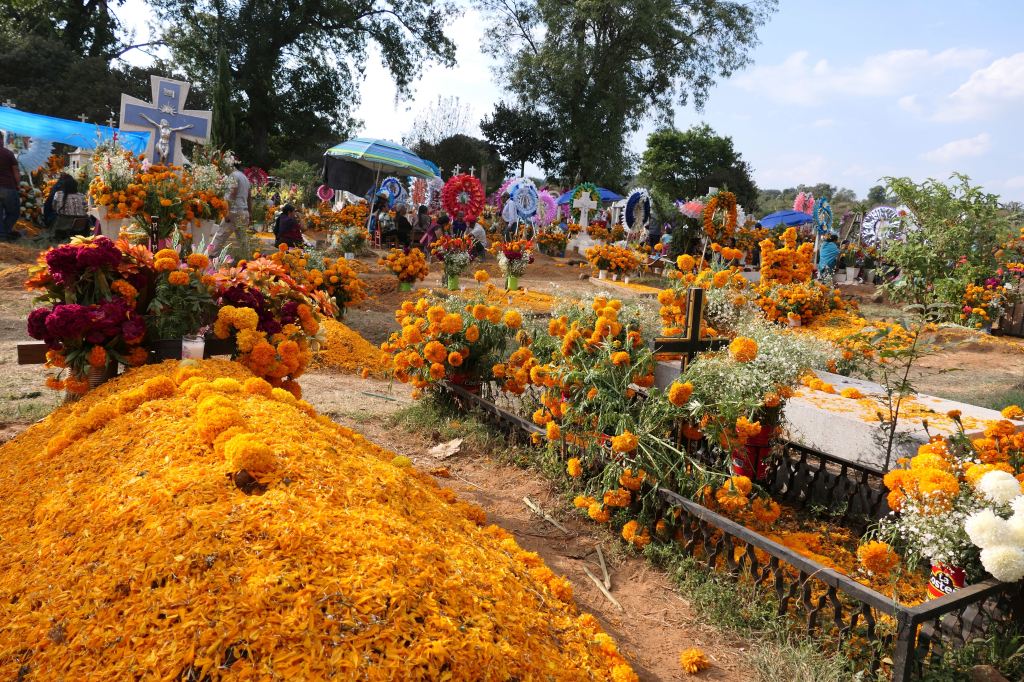


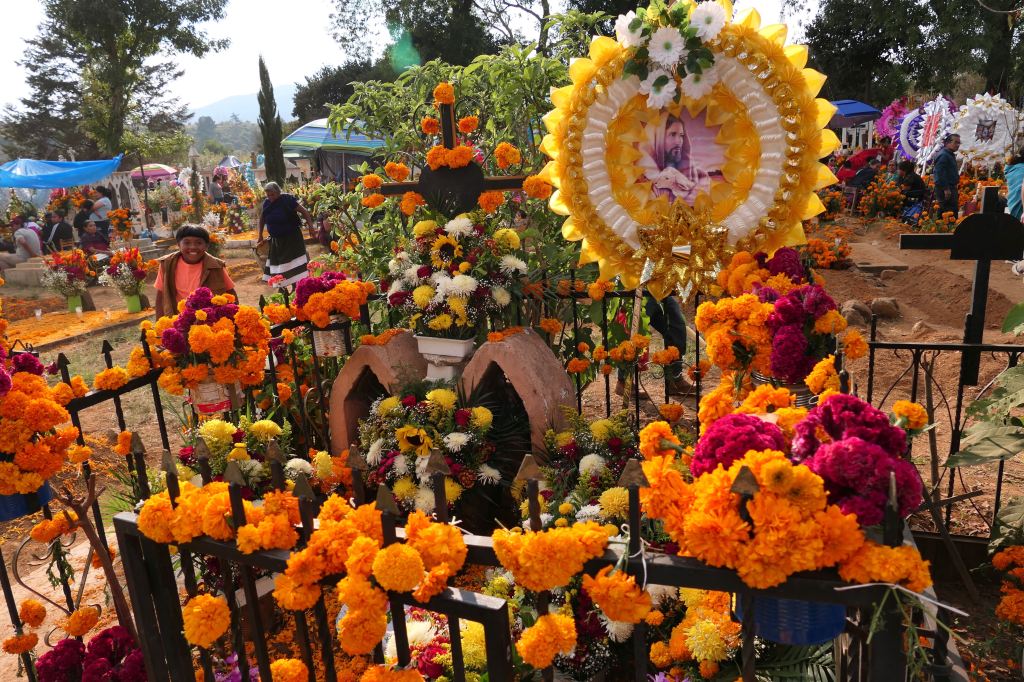
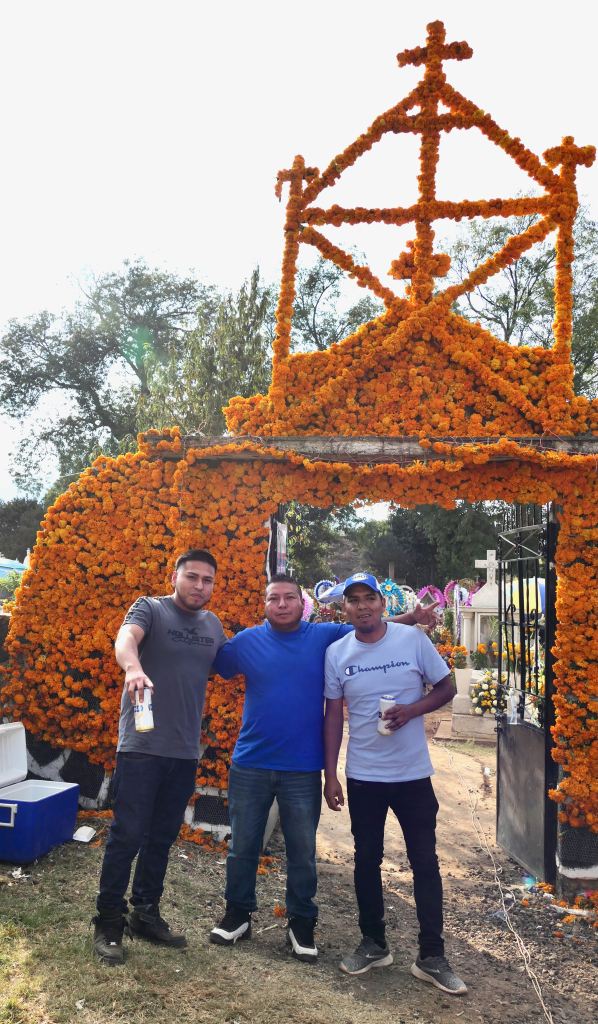
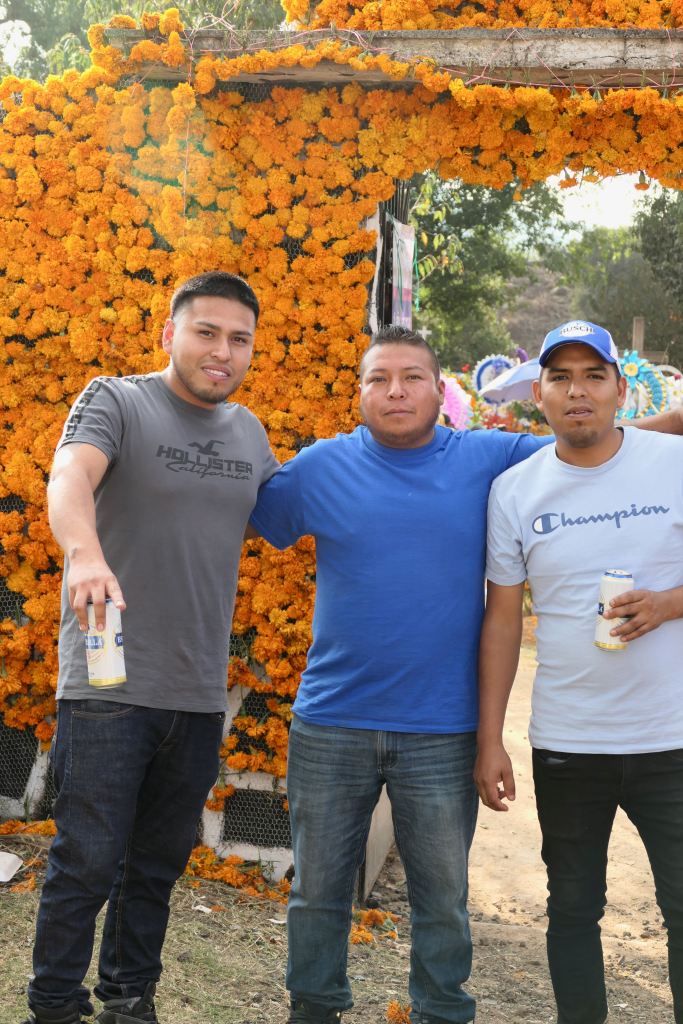
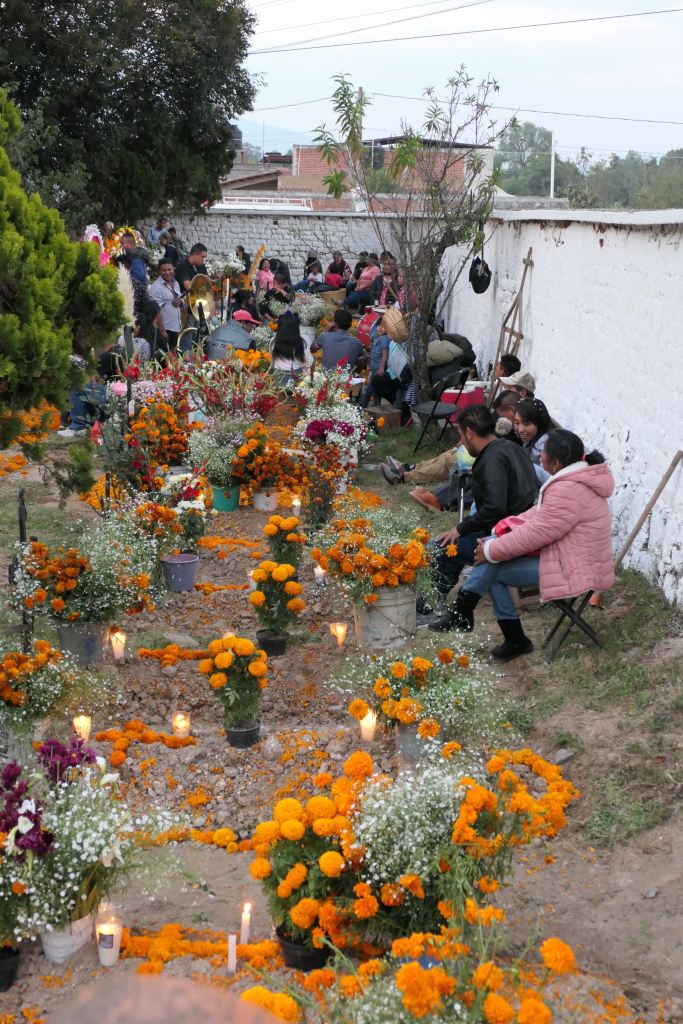
Hey, Mary… looks like the link to the blog isn’t working.
Linda Lehman-Murphy Mobile: 720-323-8596 ________________________________
LikeLike
Very nice description of your activities. I think I’ll do the tour next yeat. I live in Eronga and really enjoy visiting the area. Thanks again for you commentary.
LikeLike
Enjoyed reading this! Great photos. Thanks for sharing your experience!
Arianna, ariannastravels.com
LikeLike